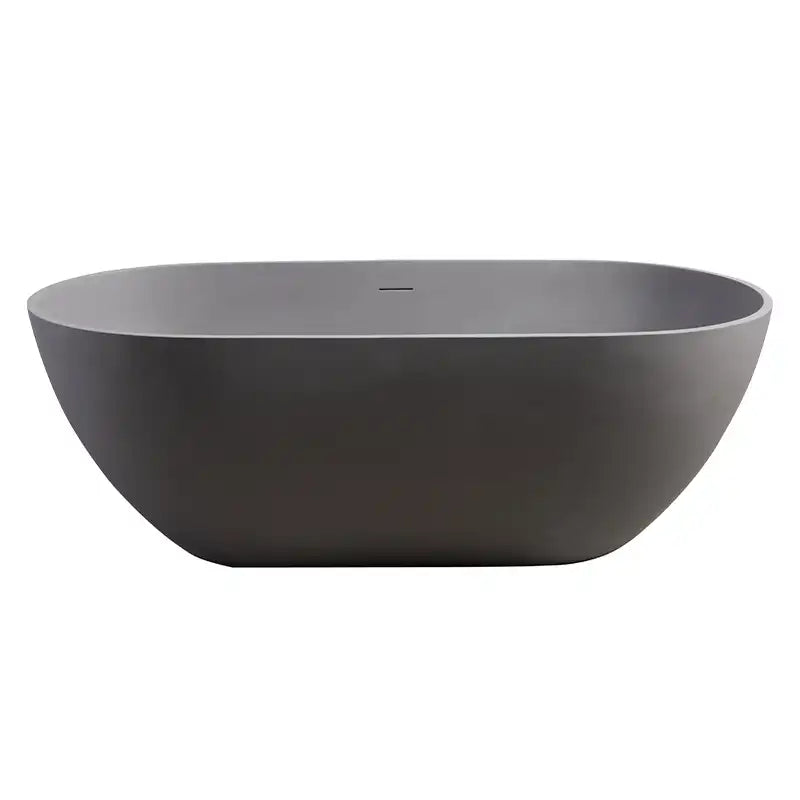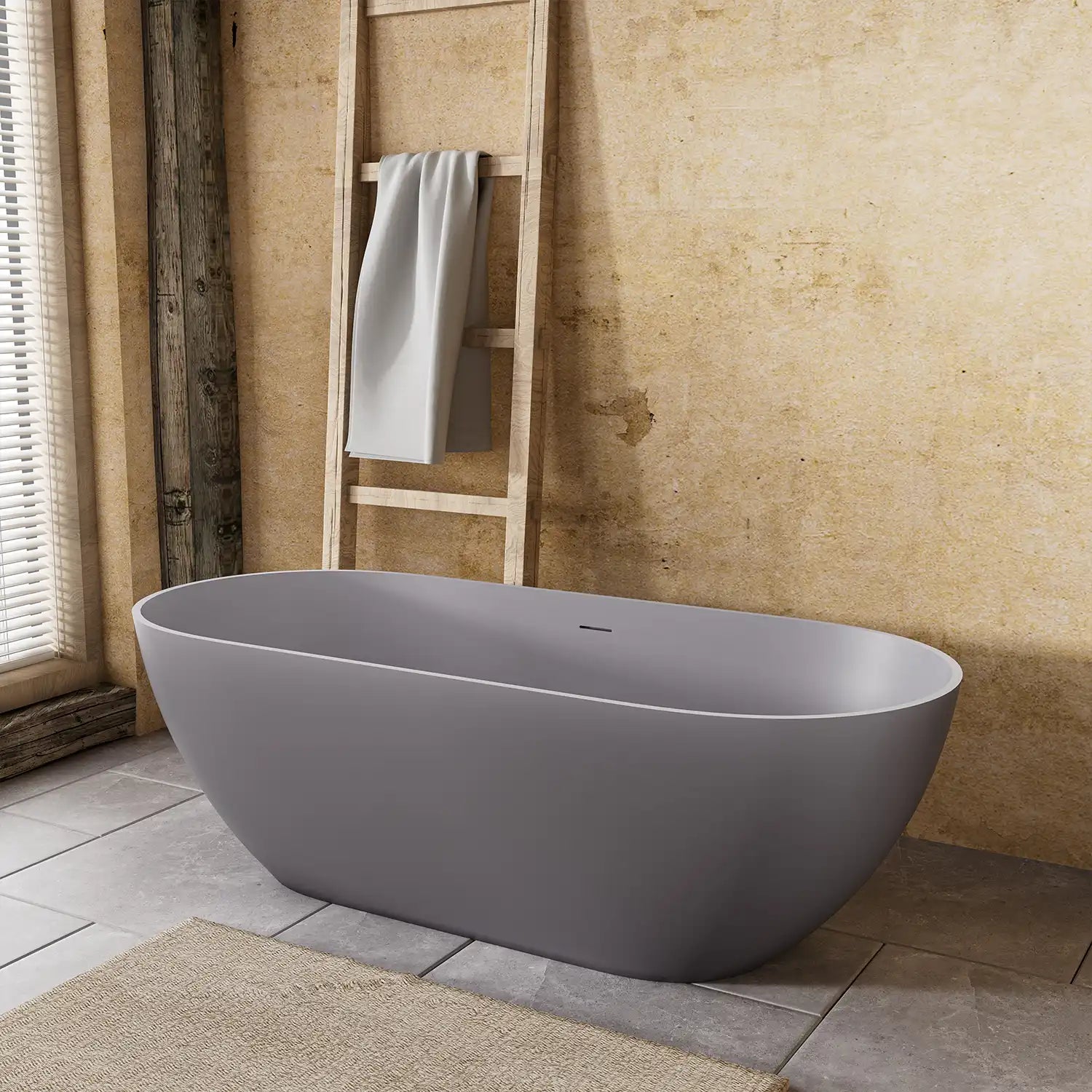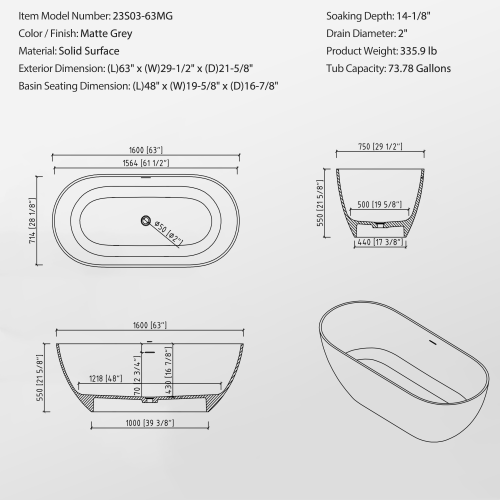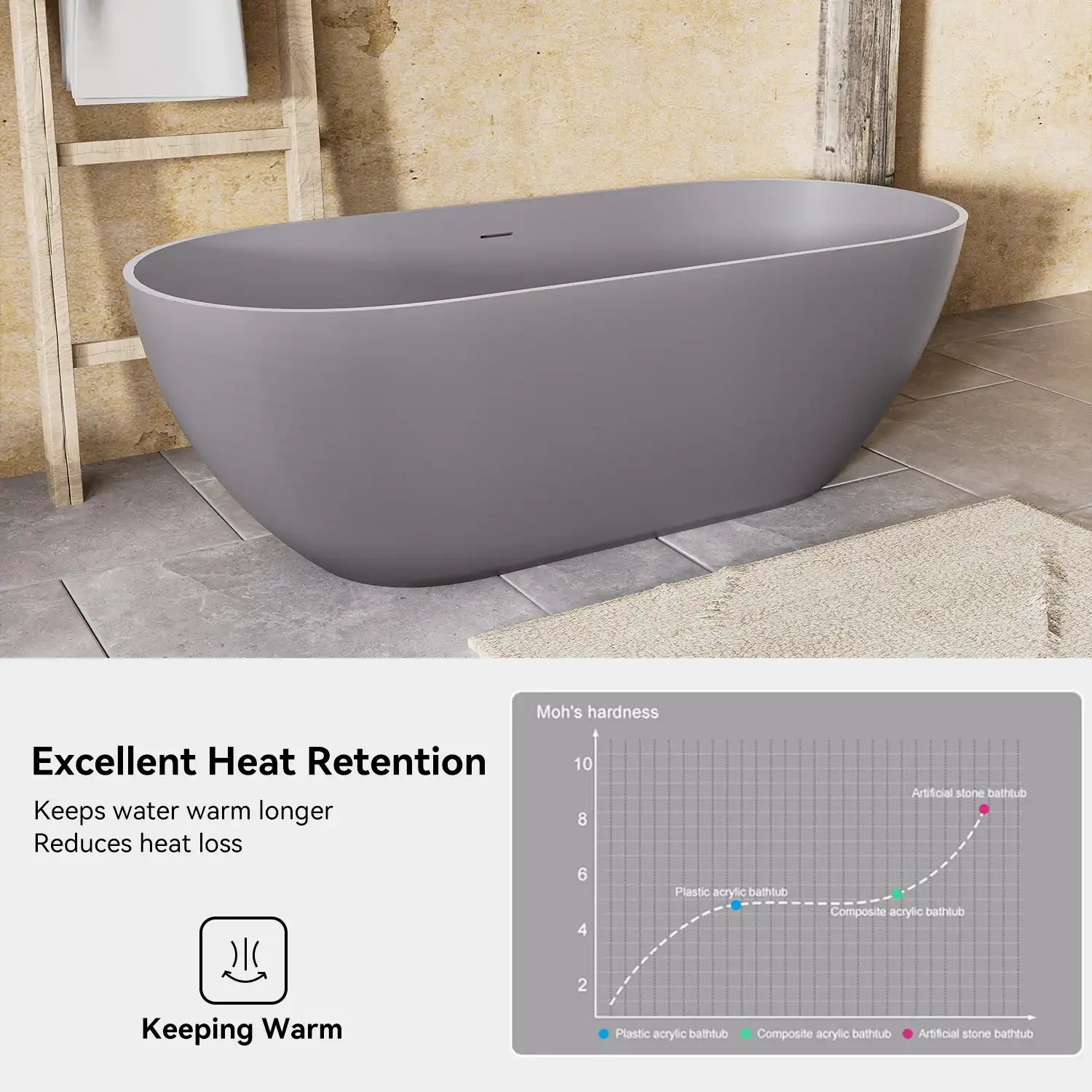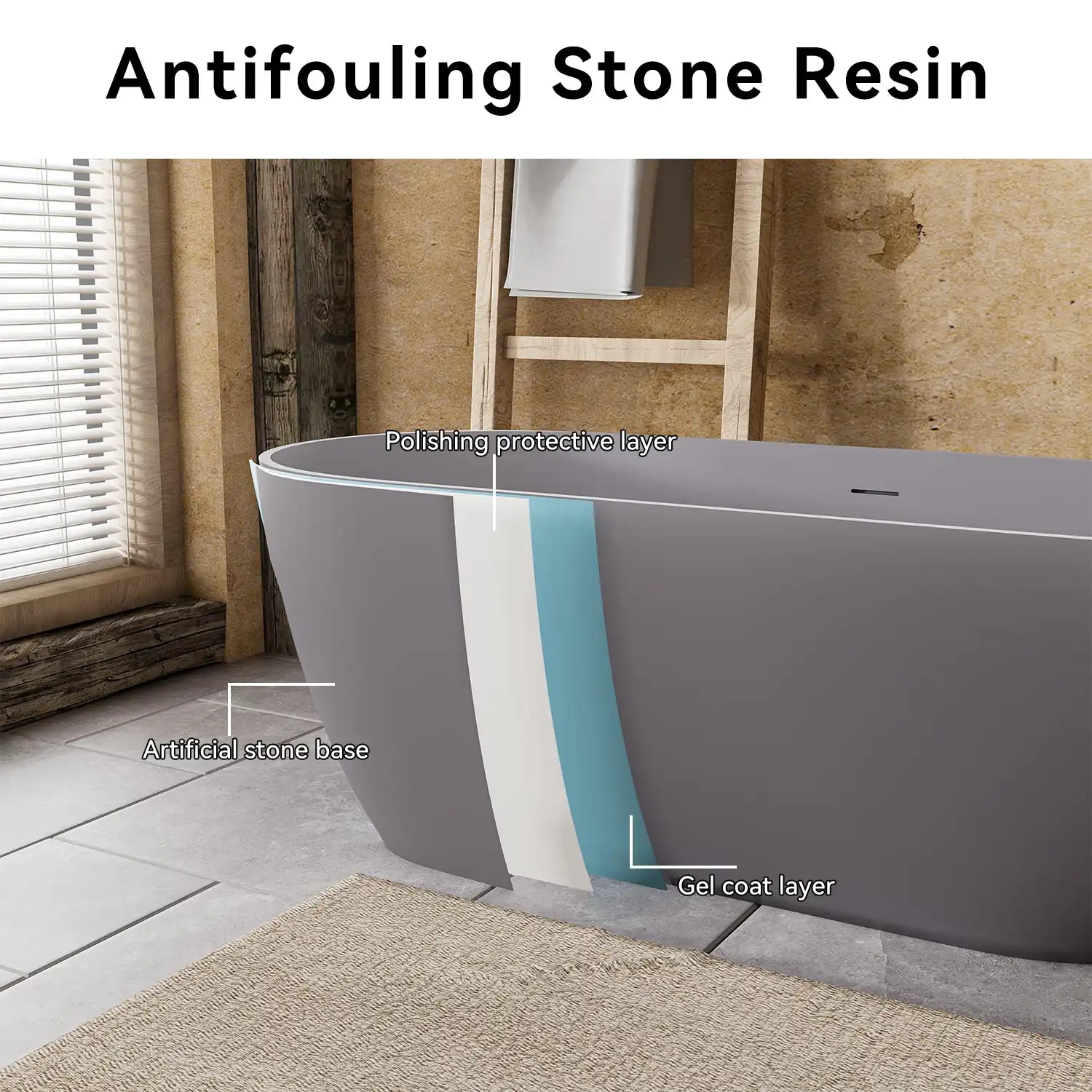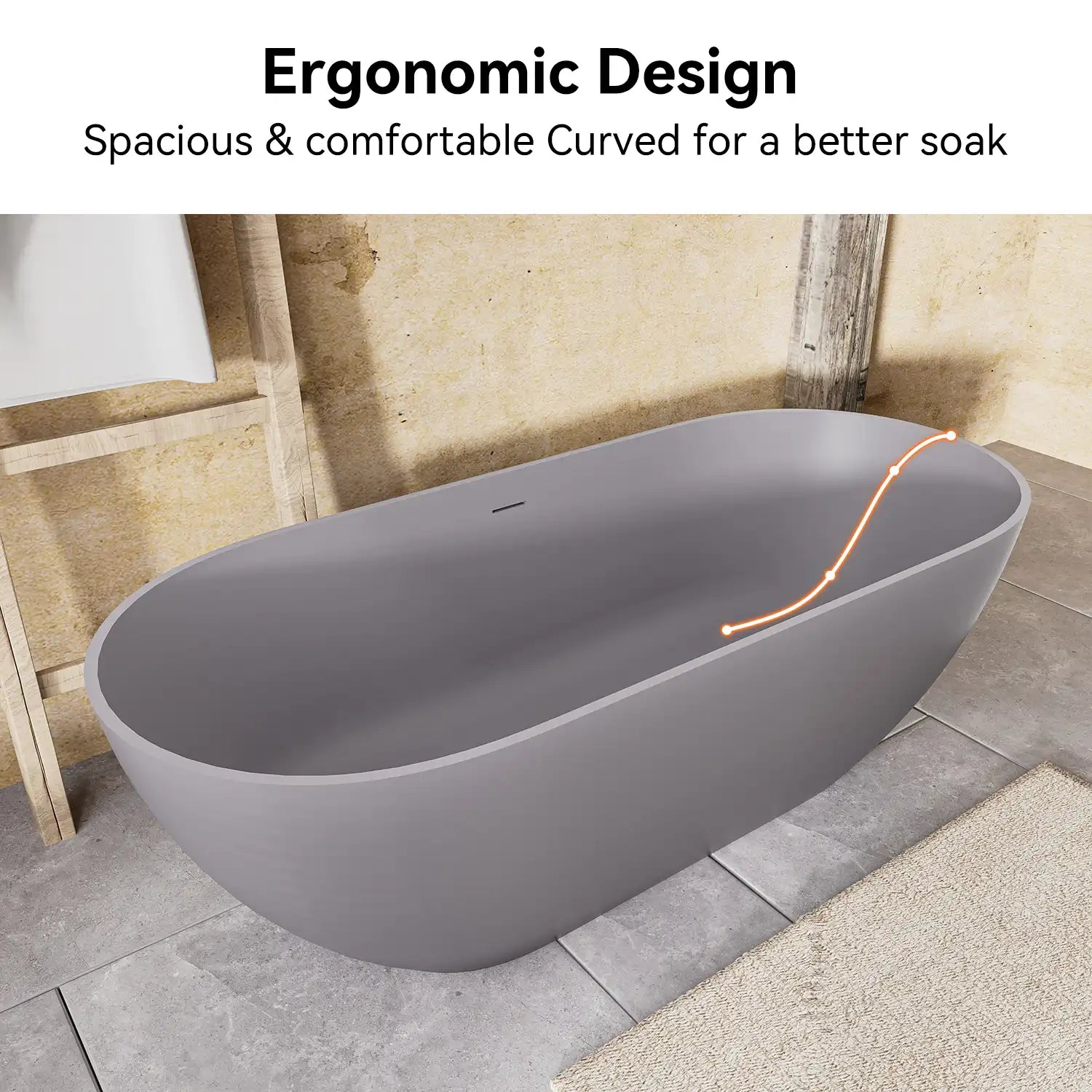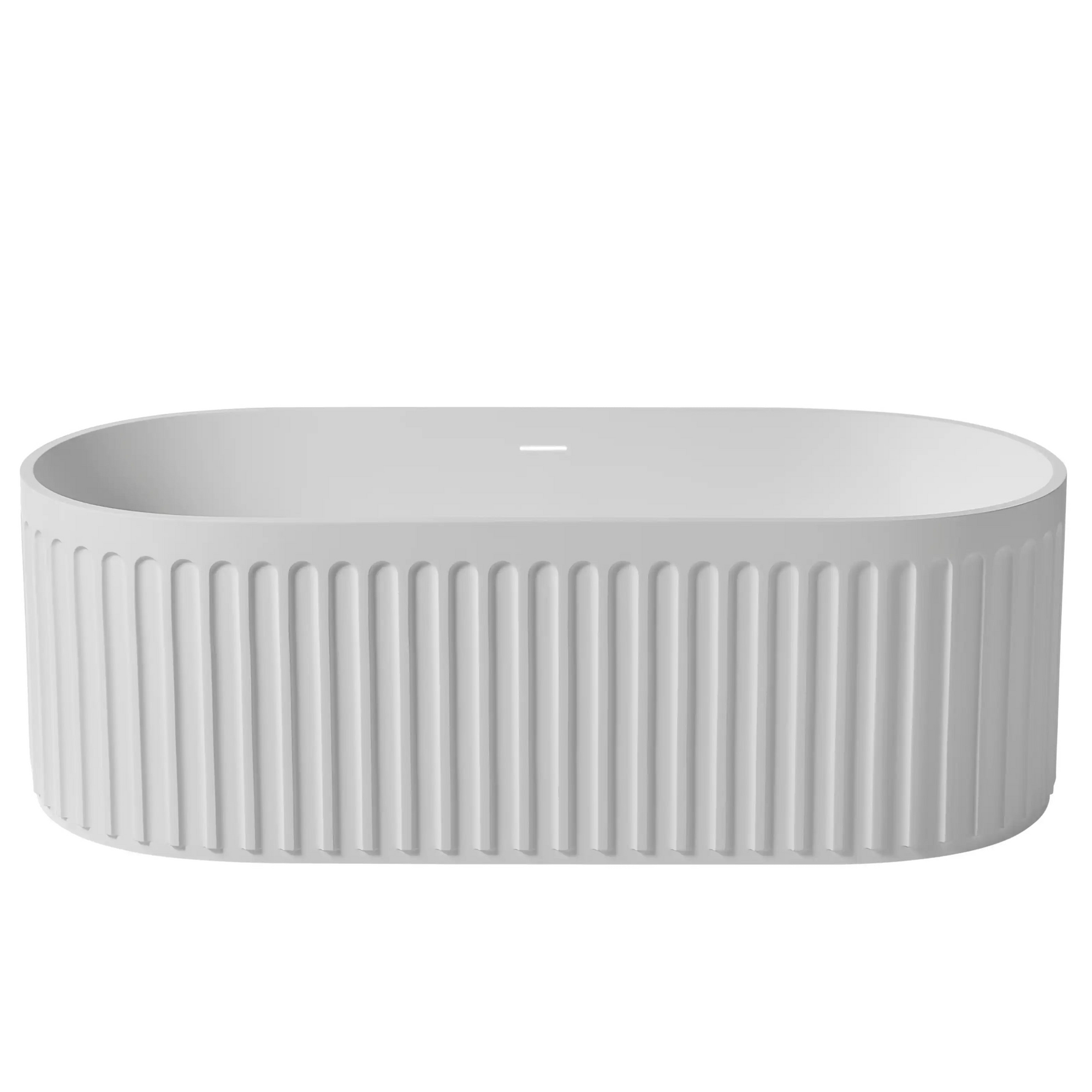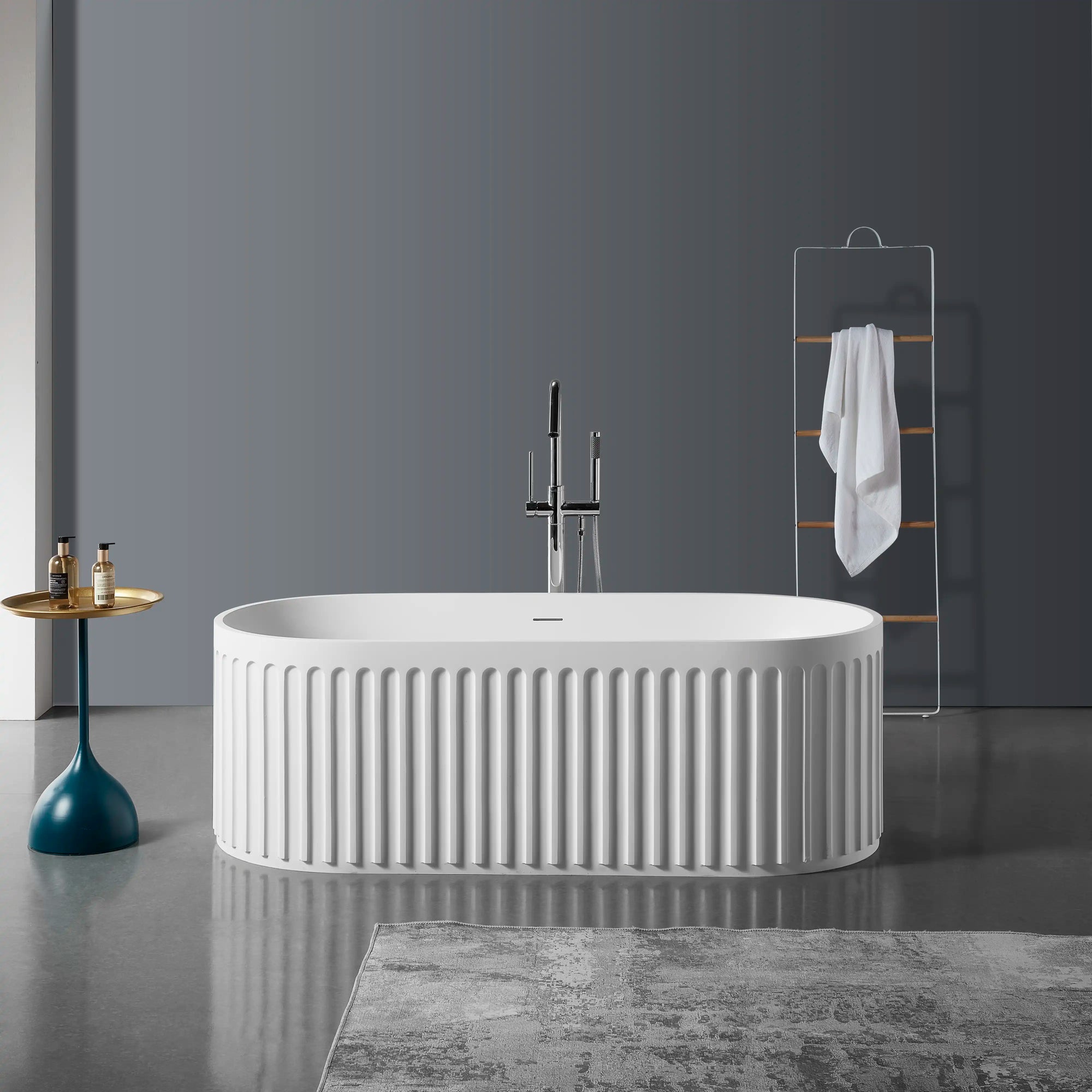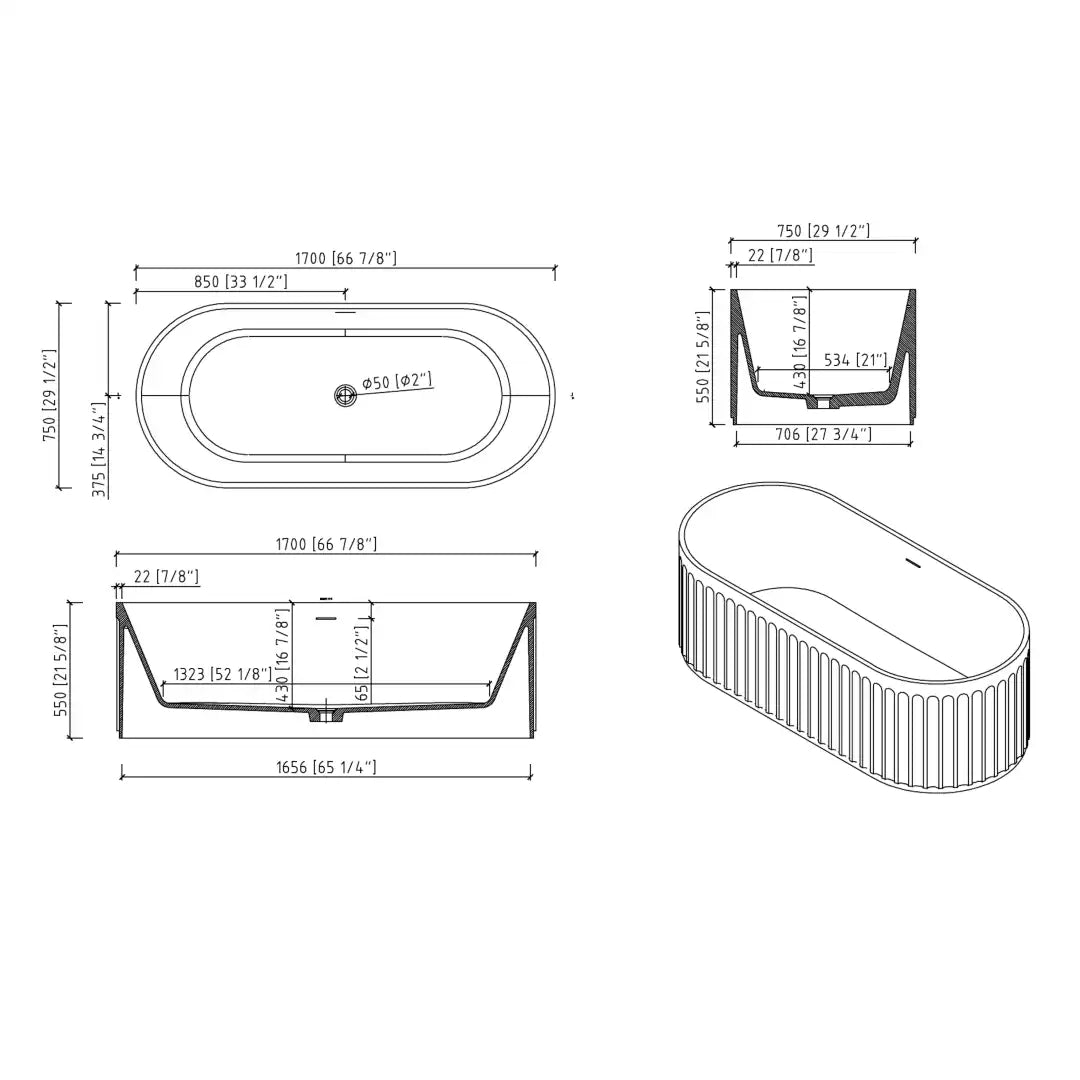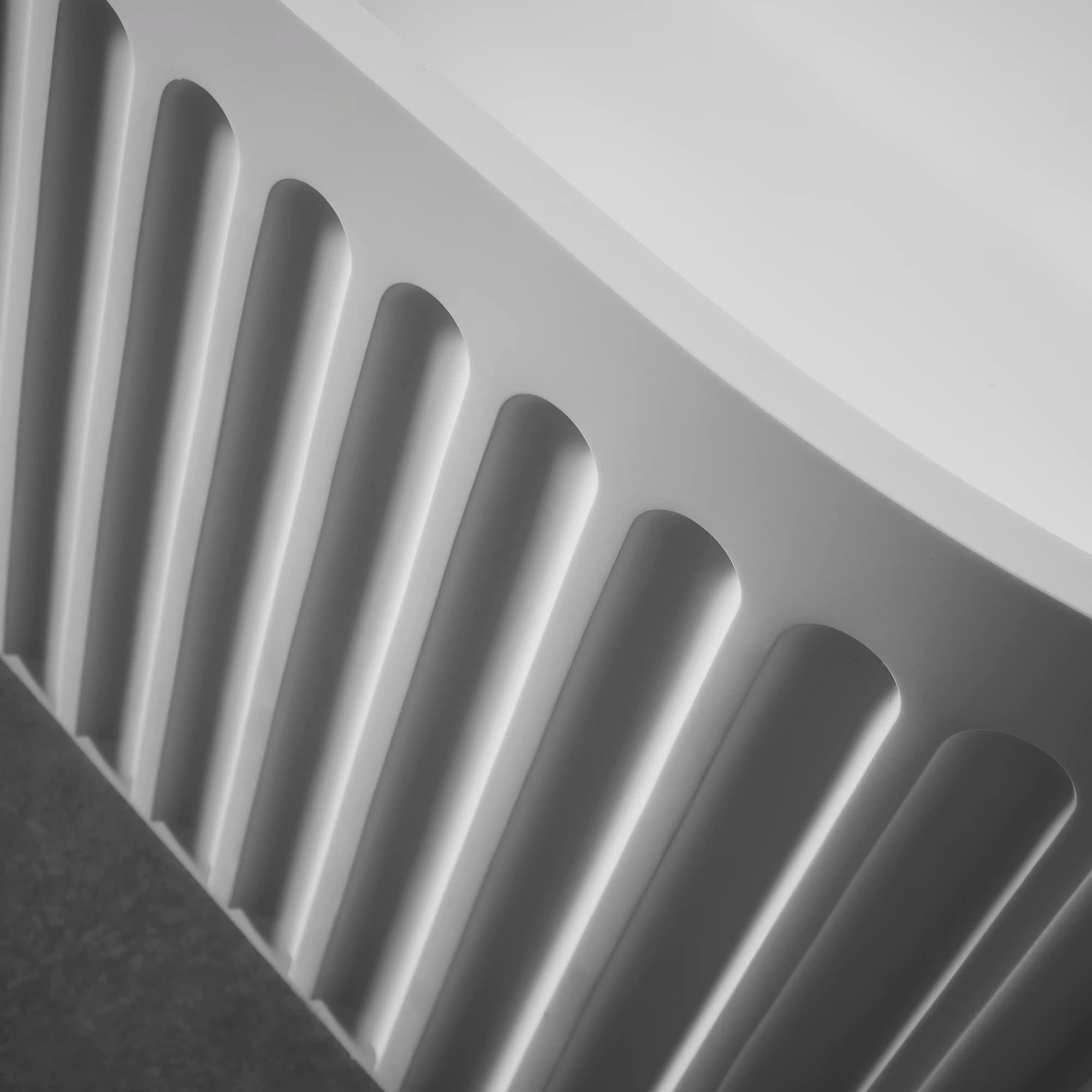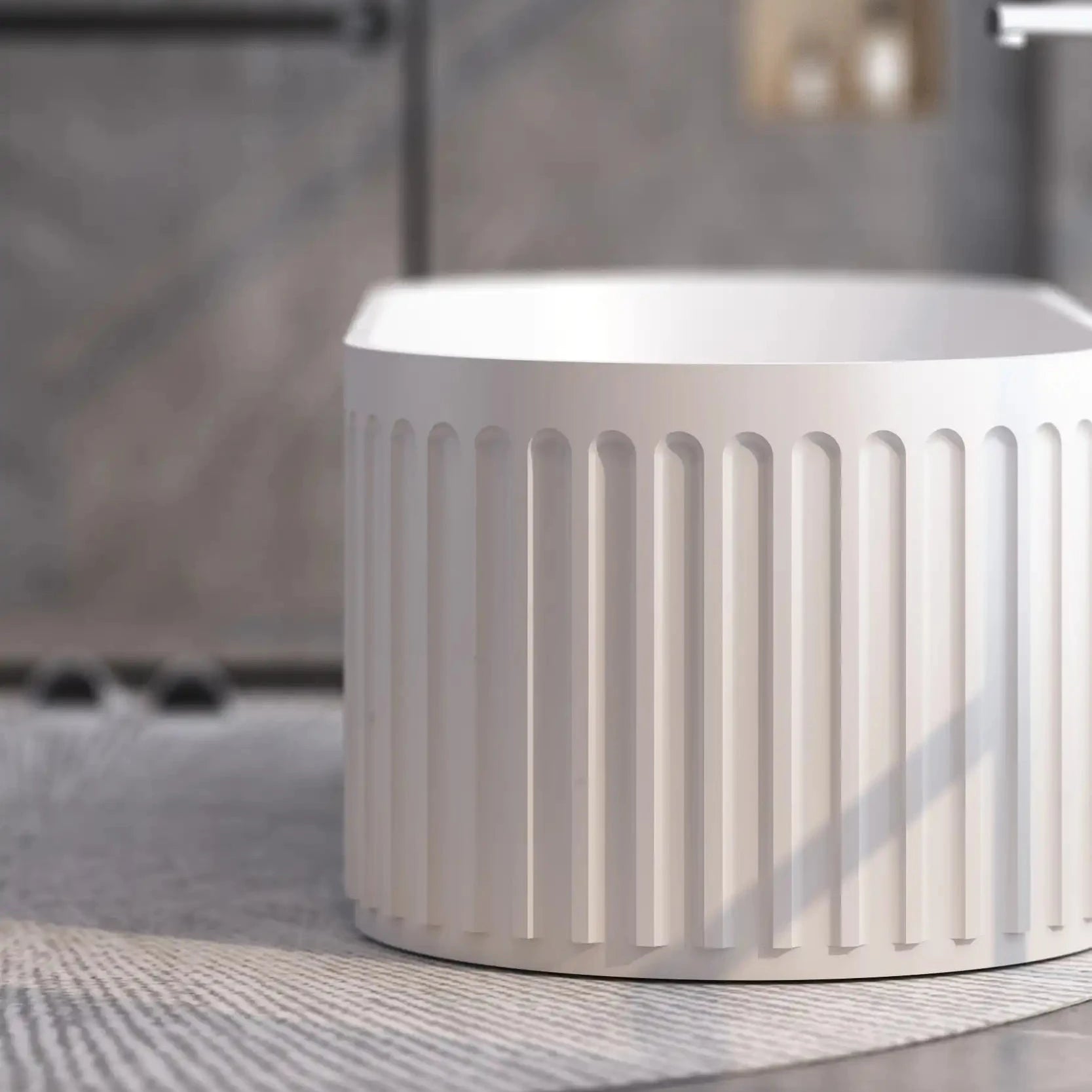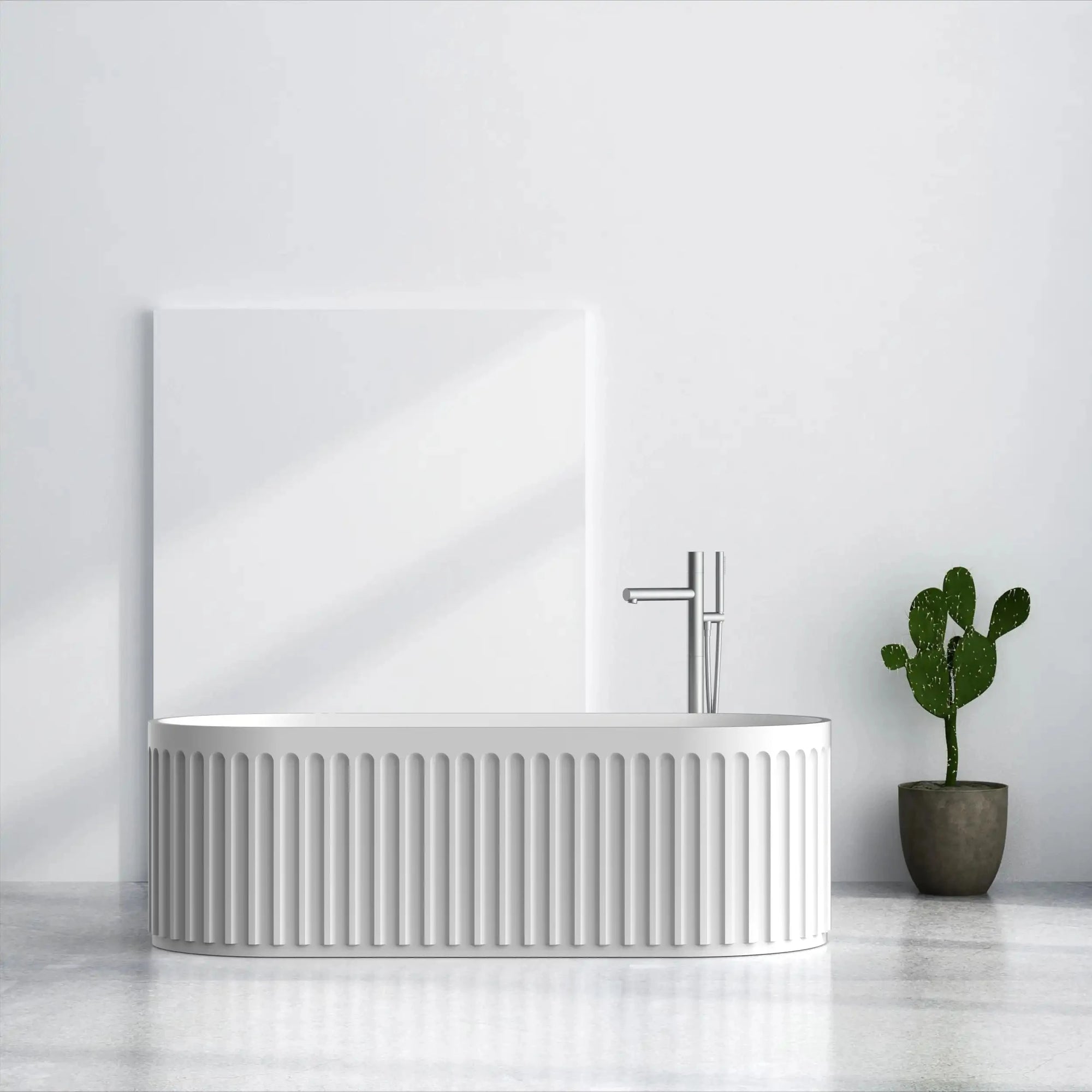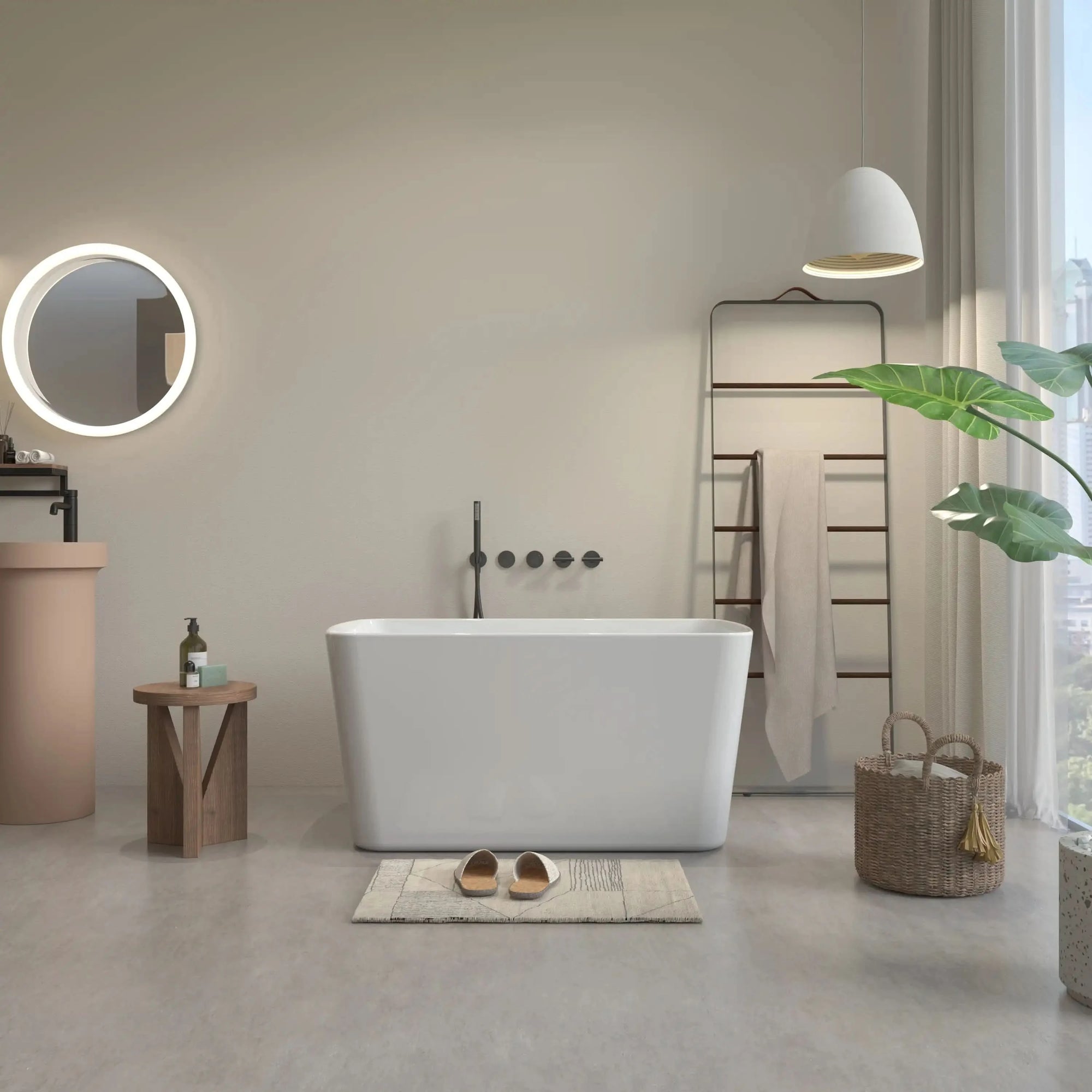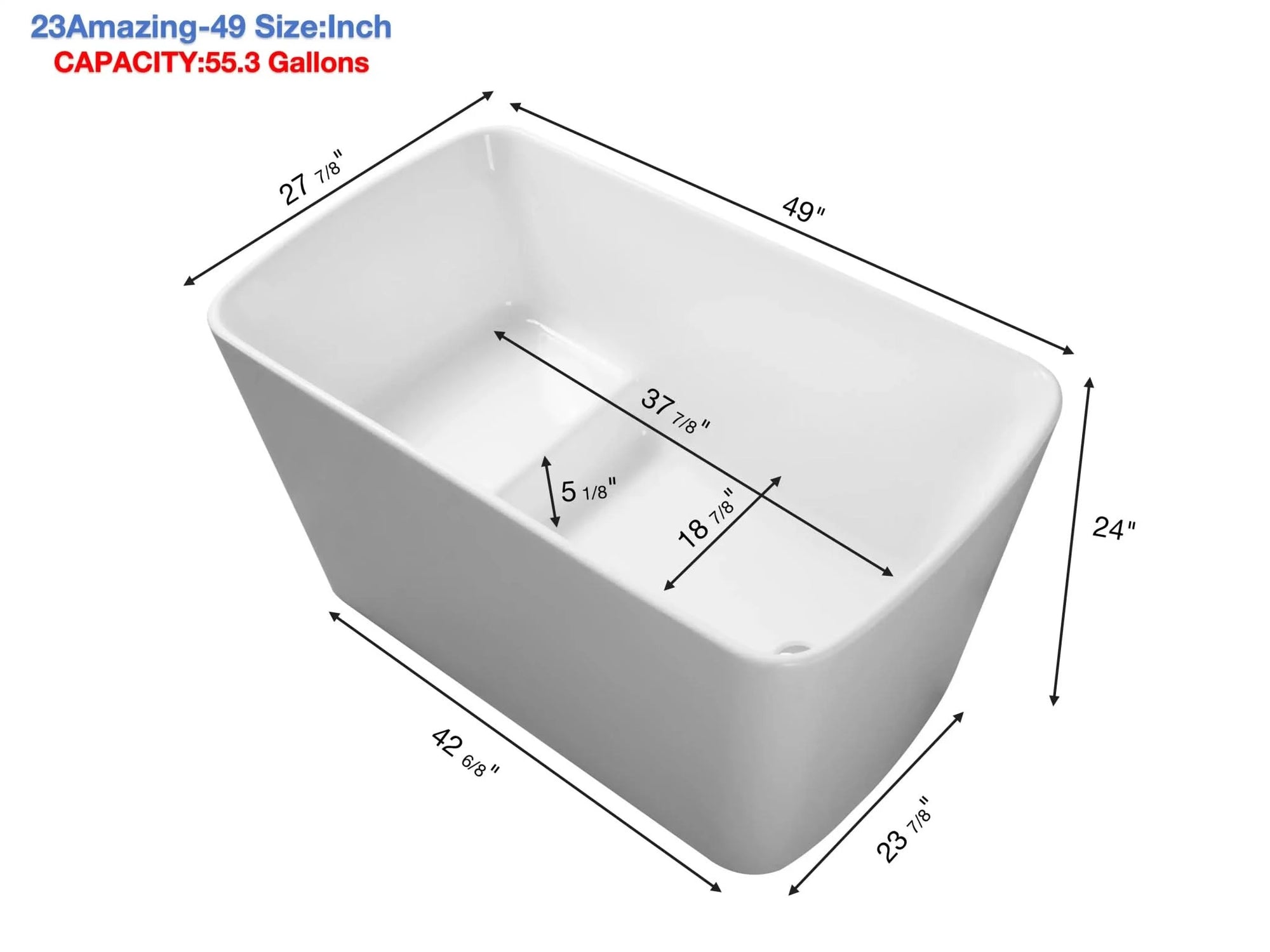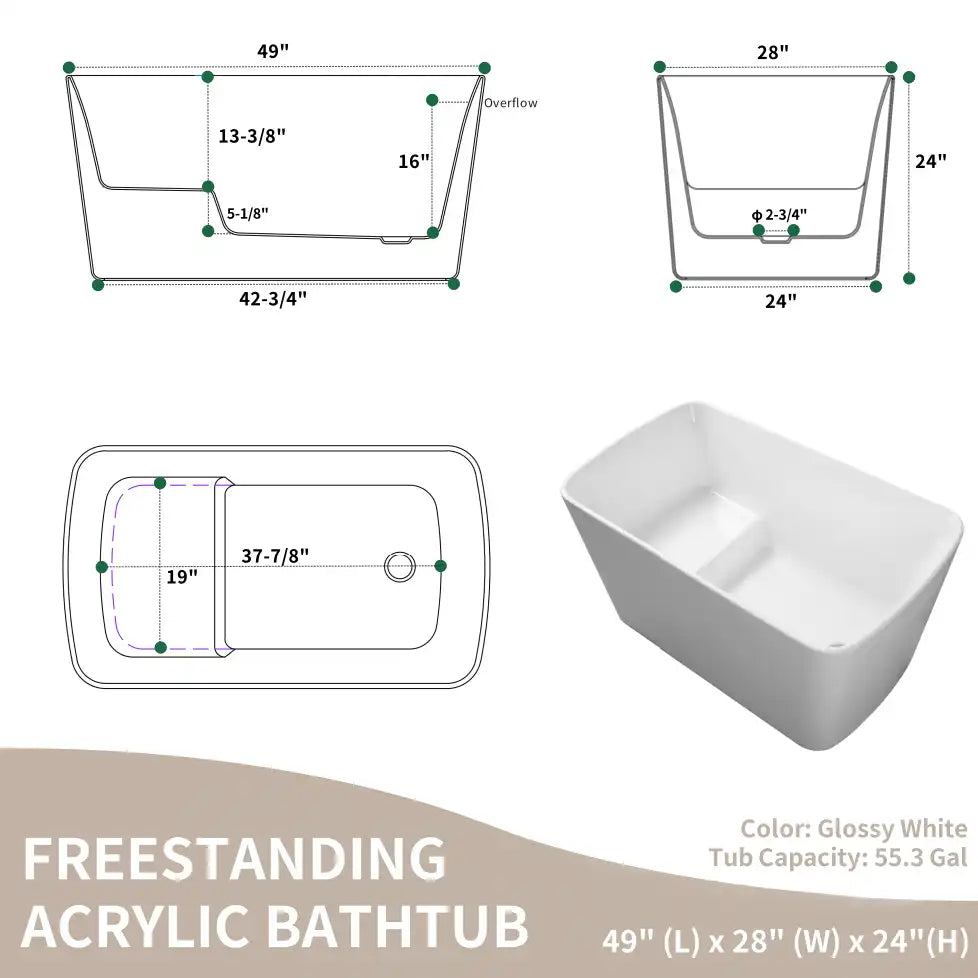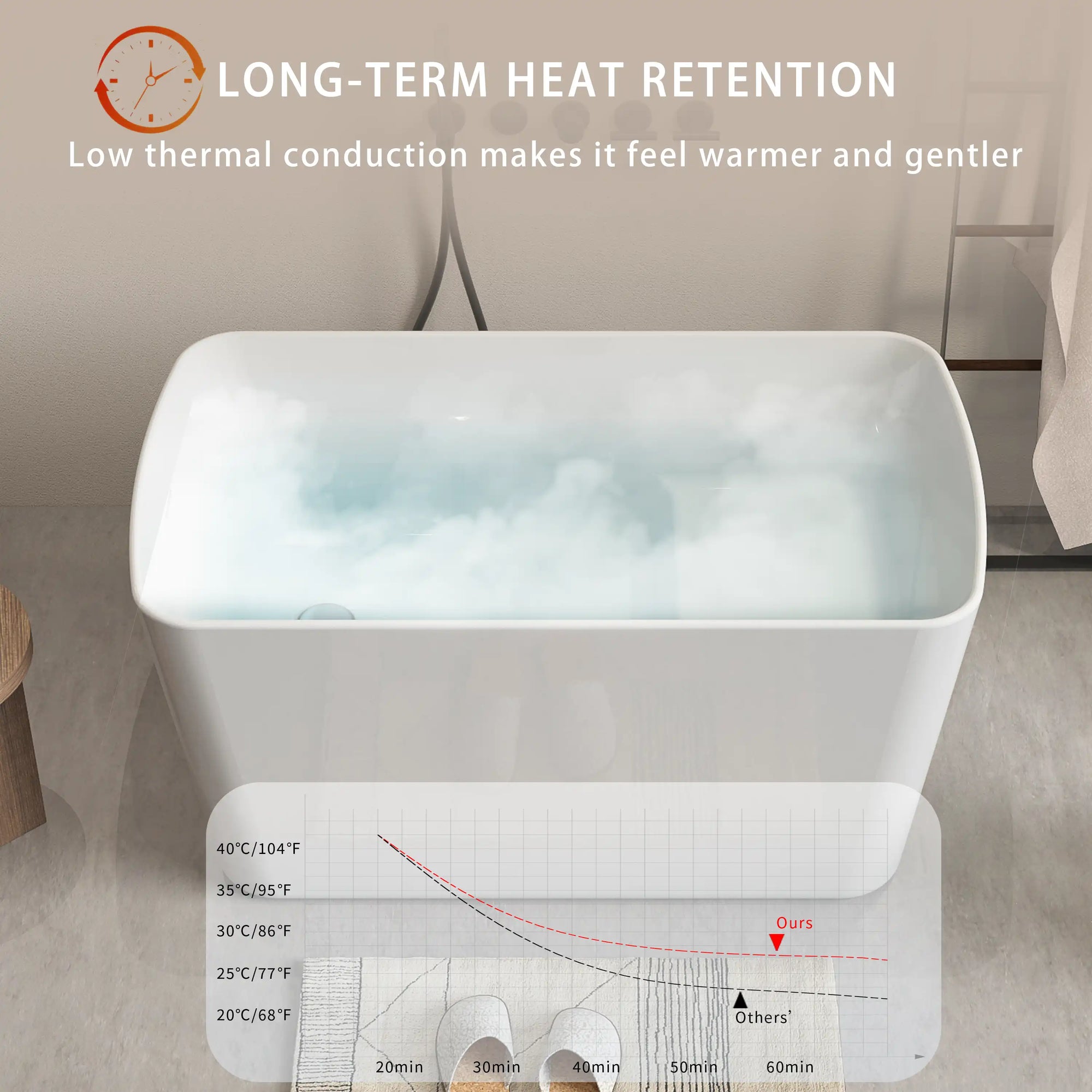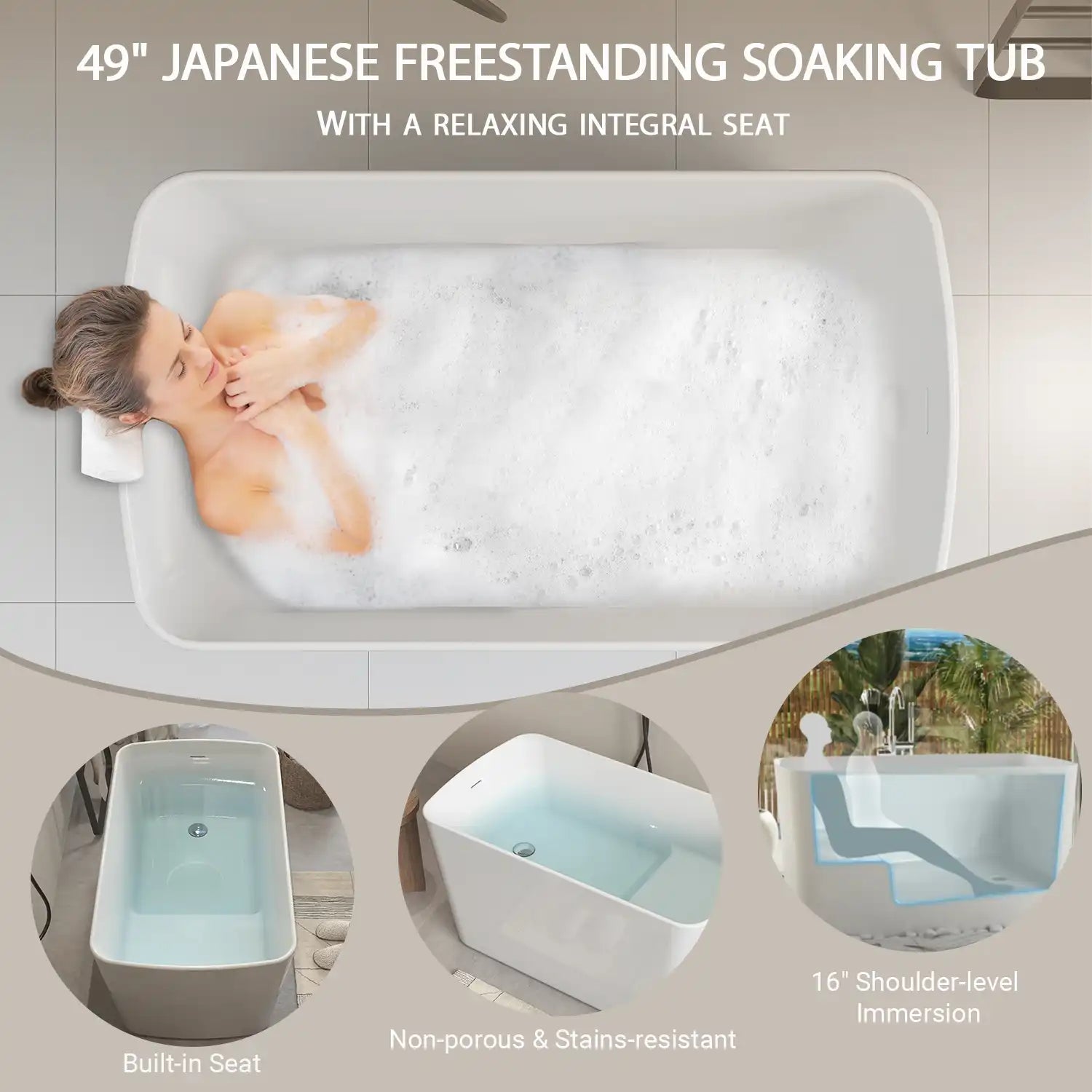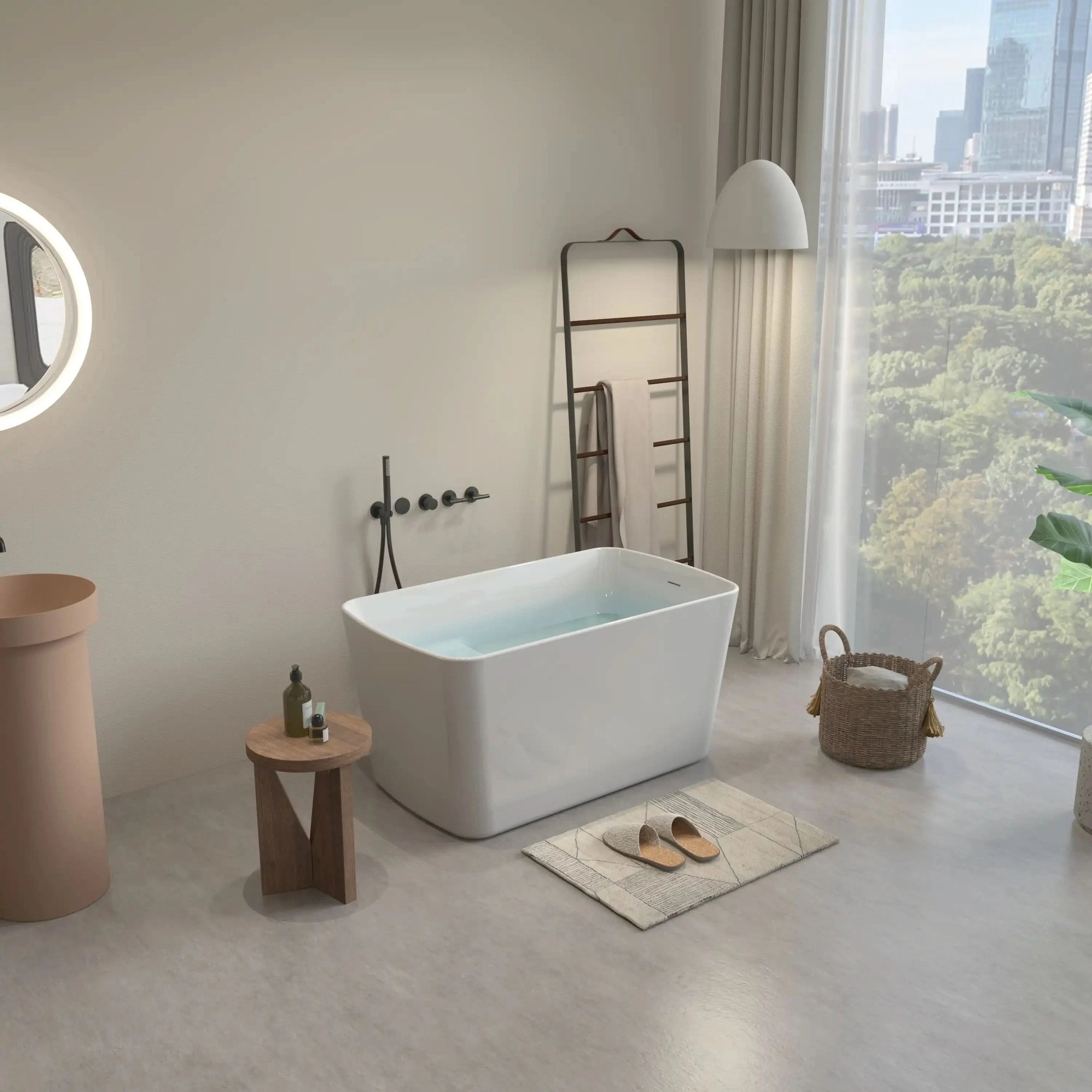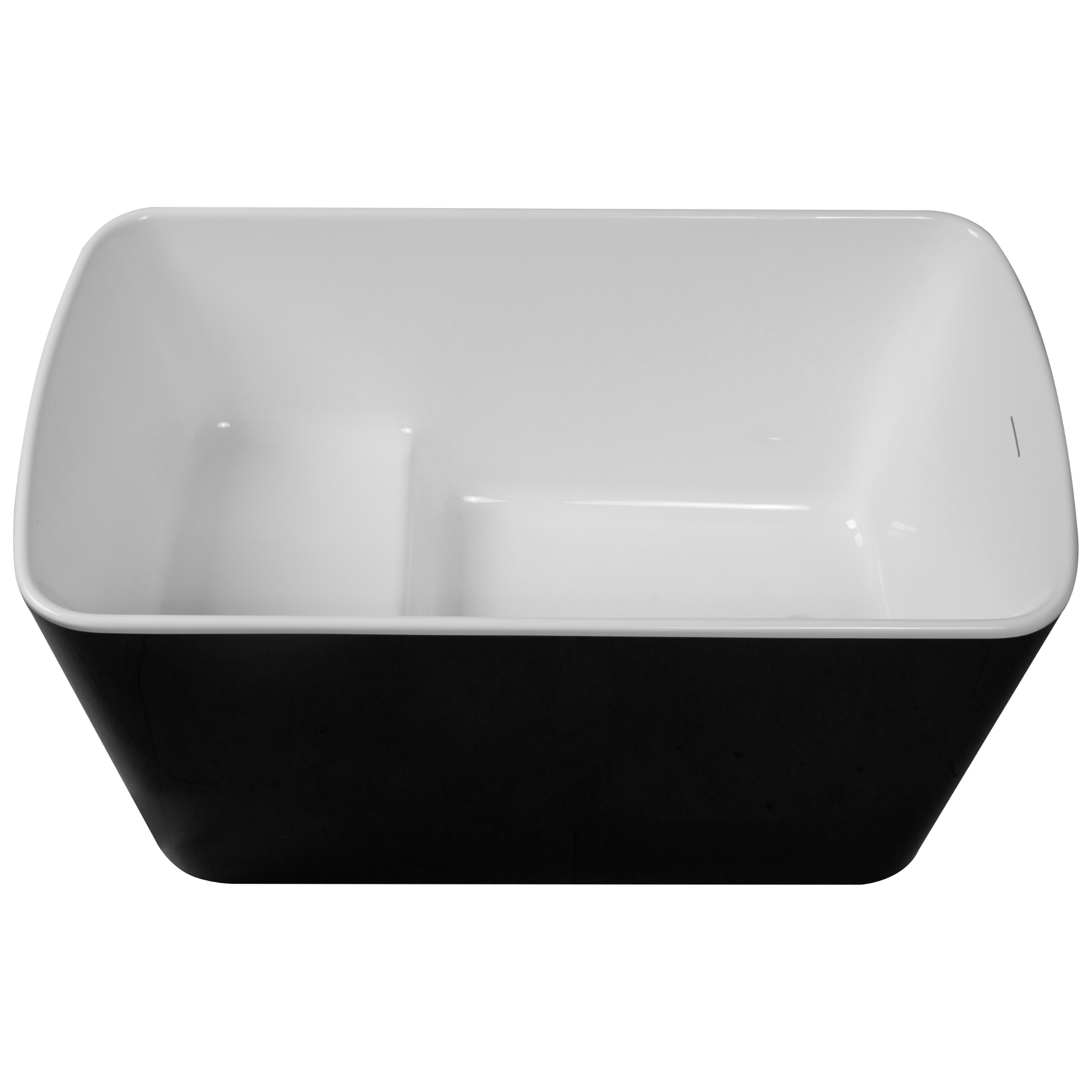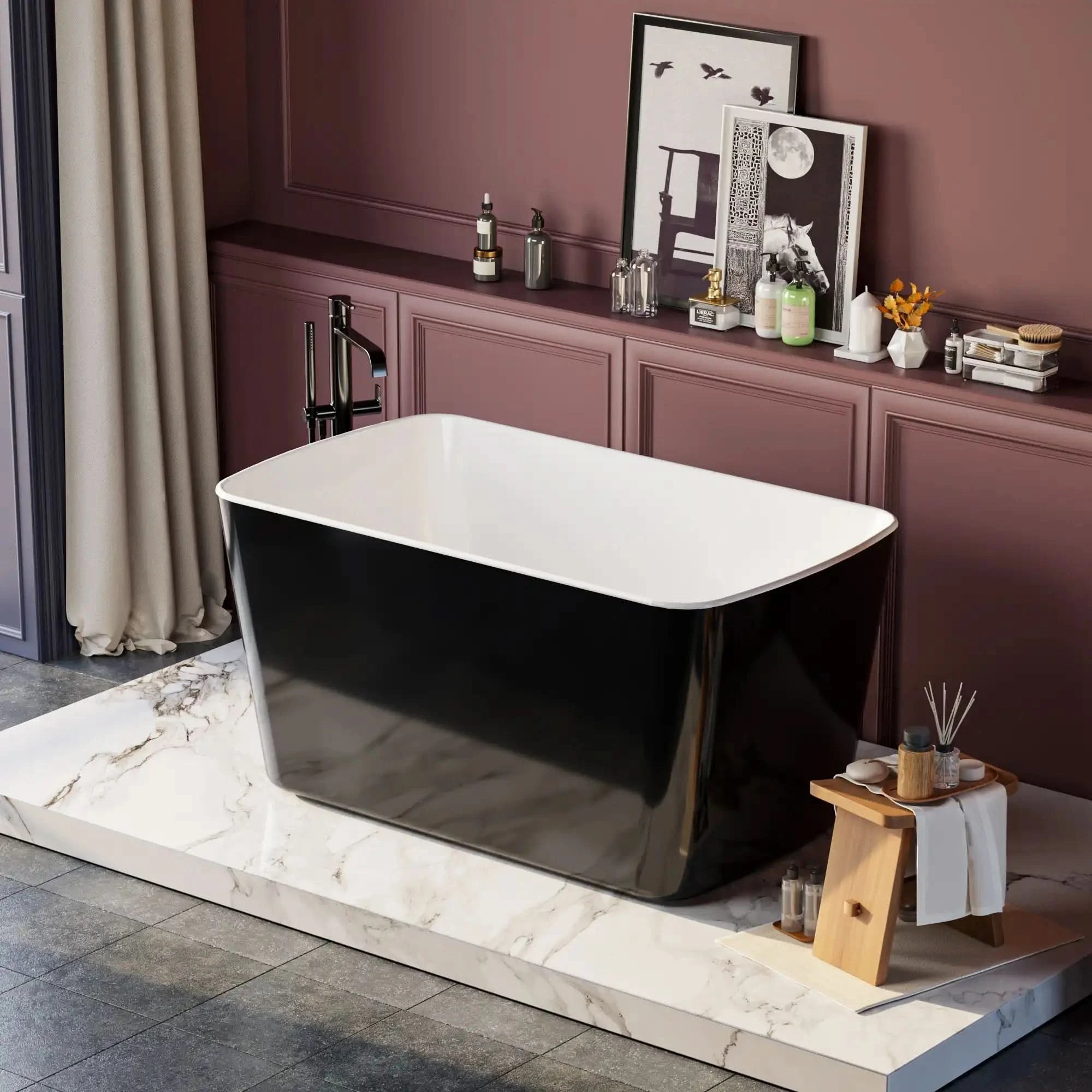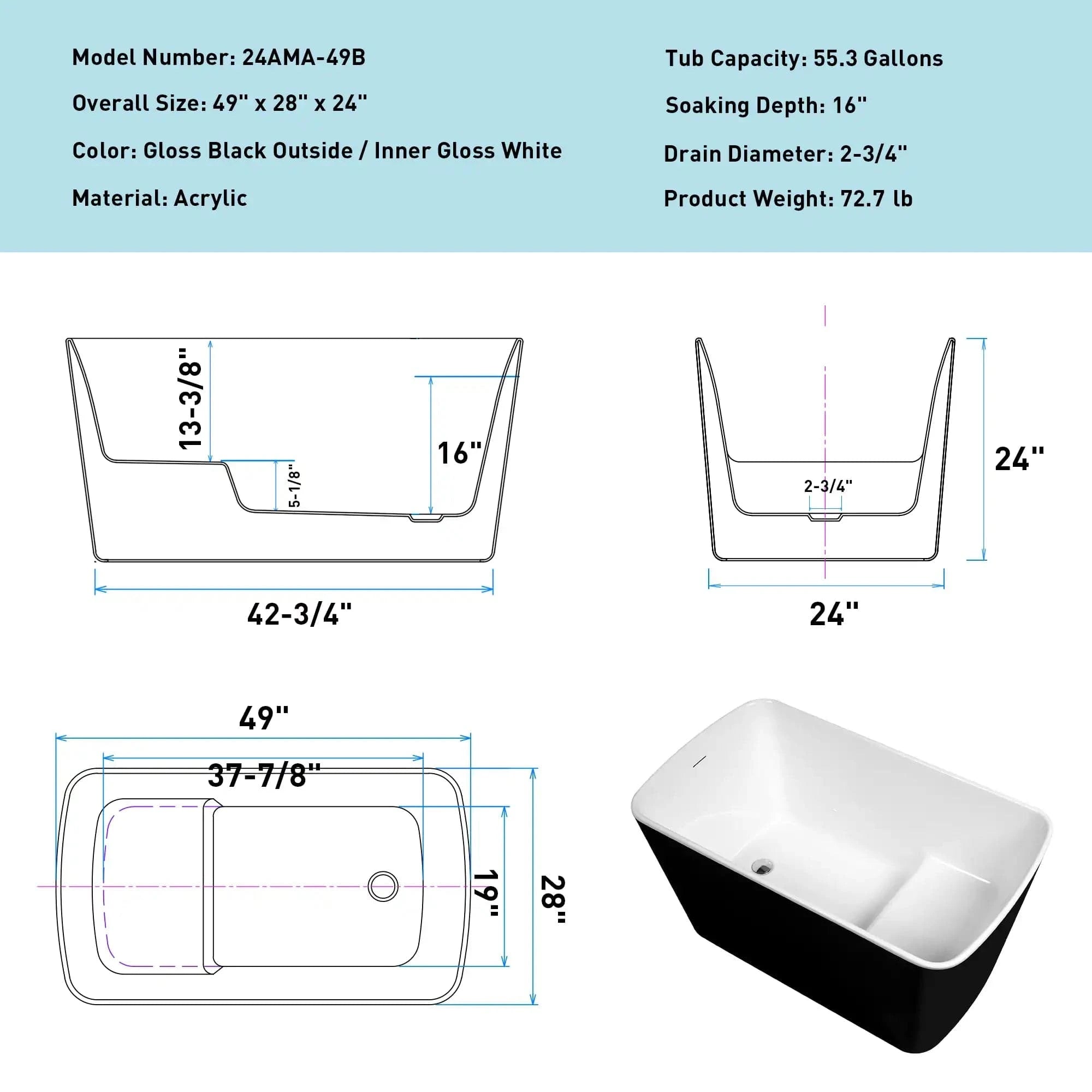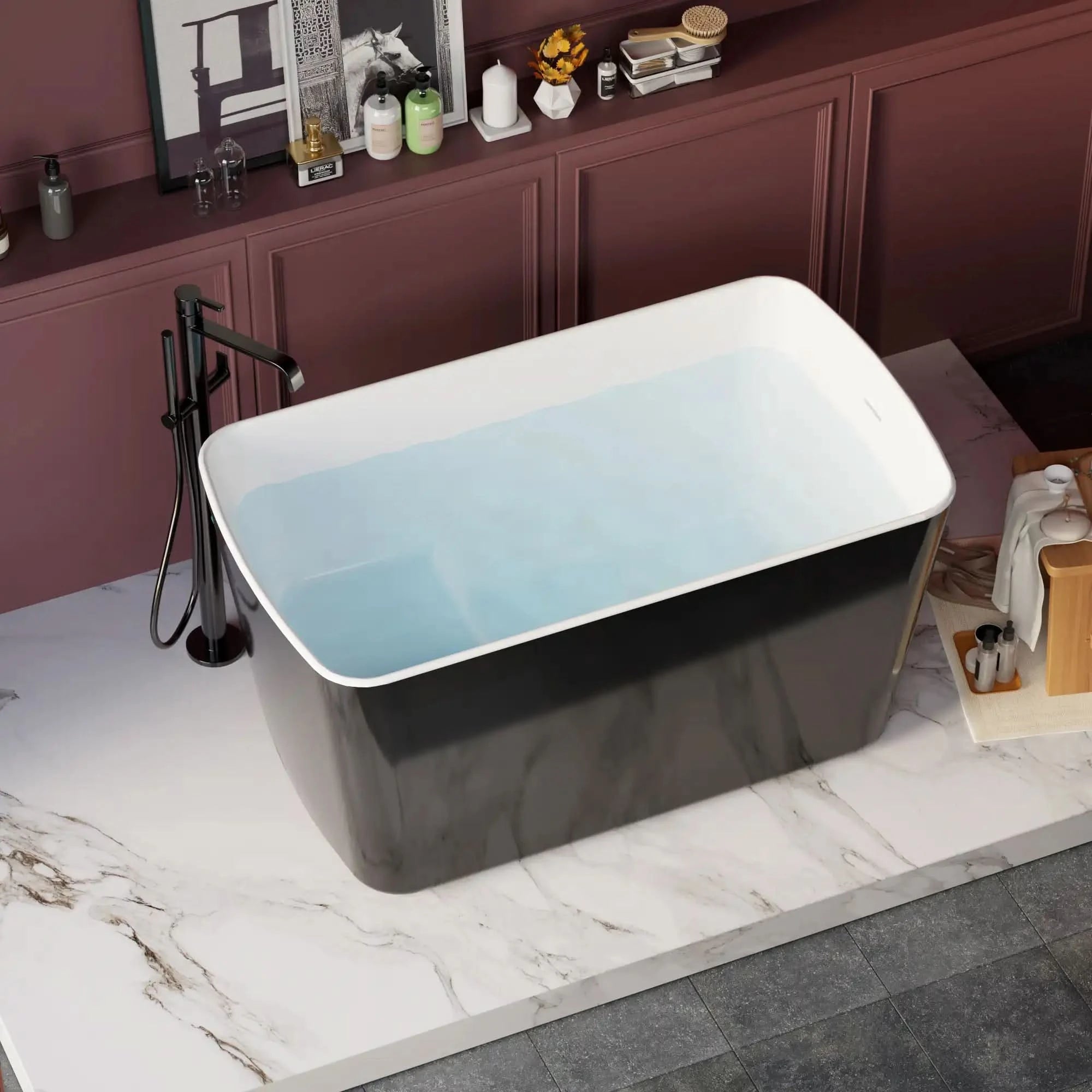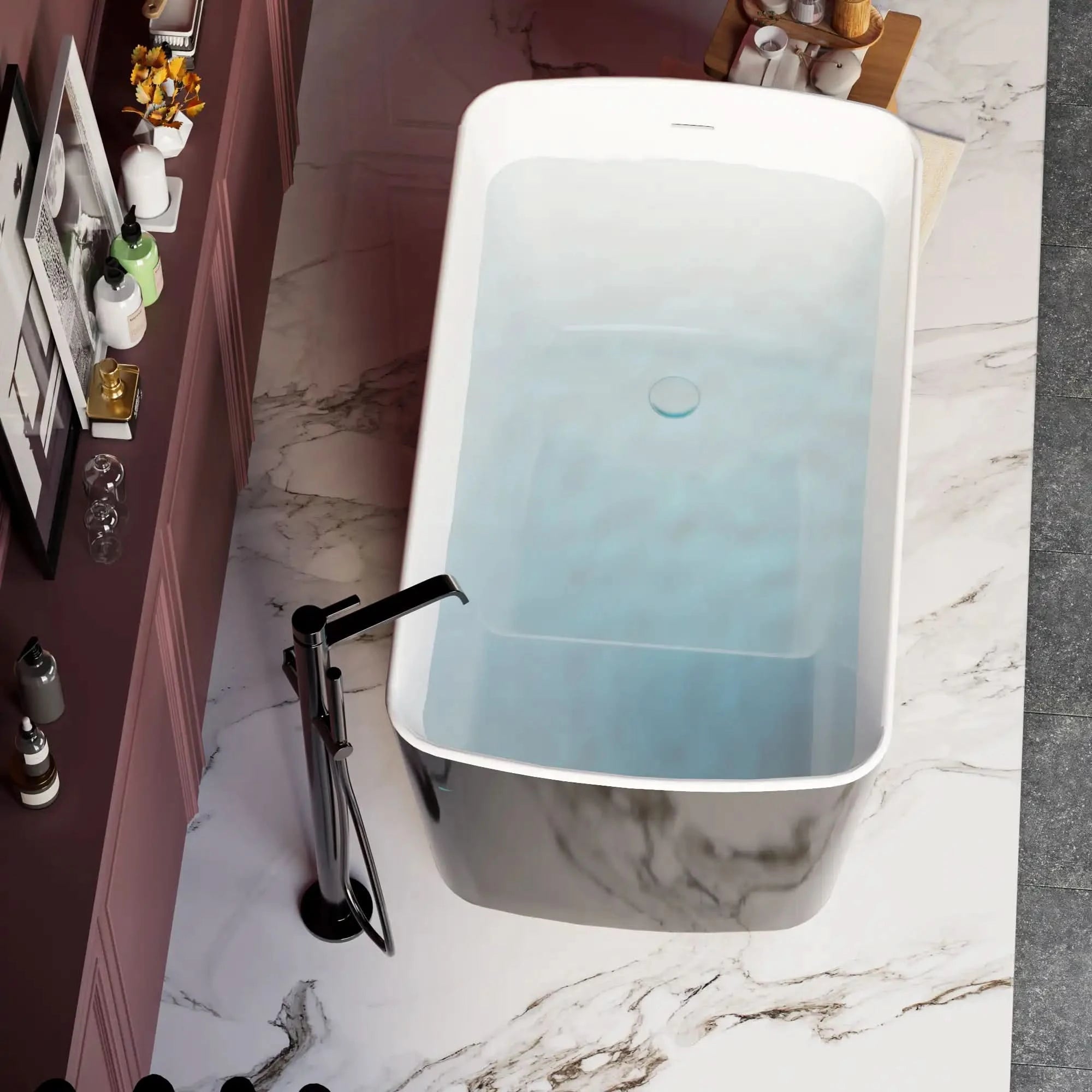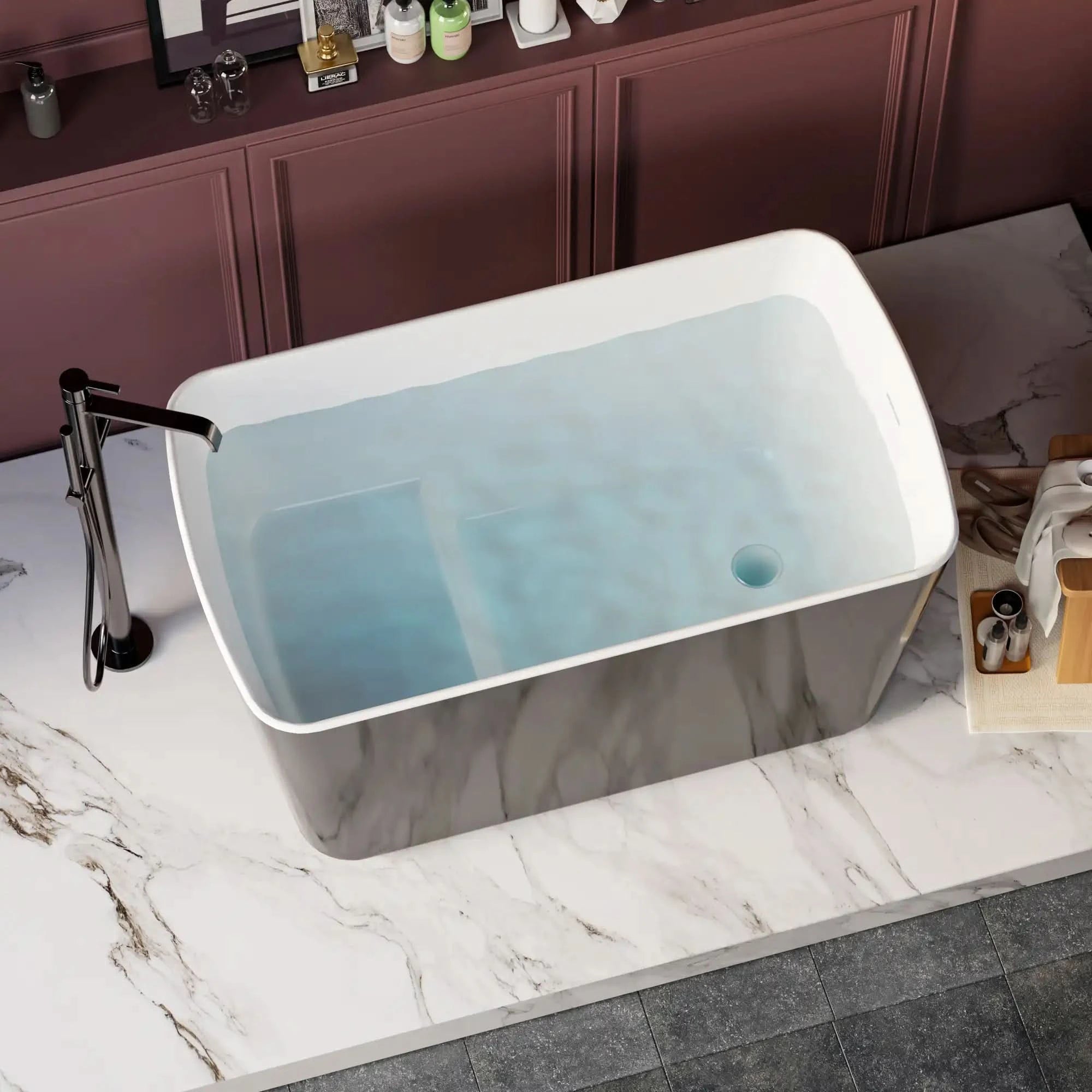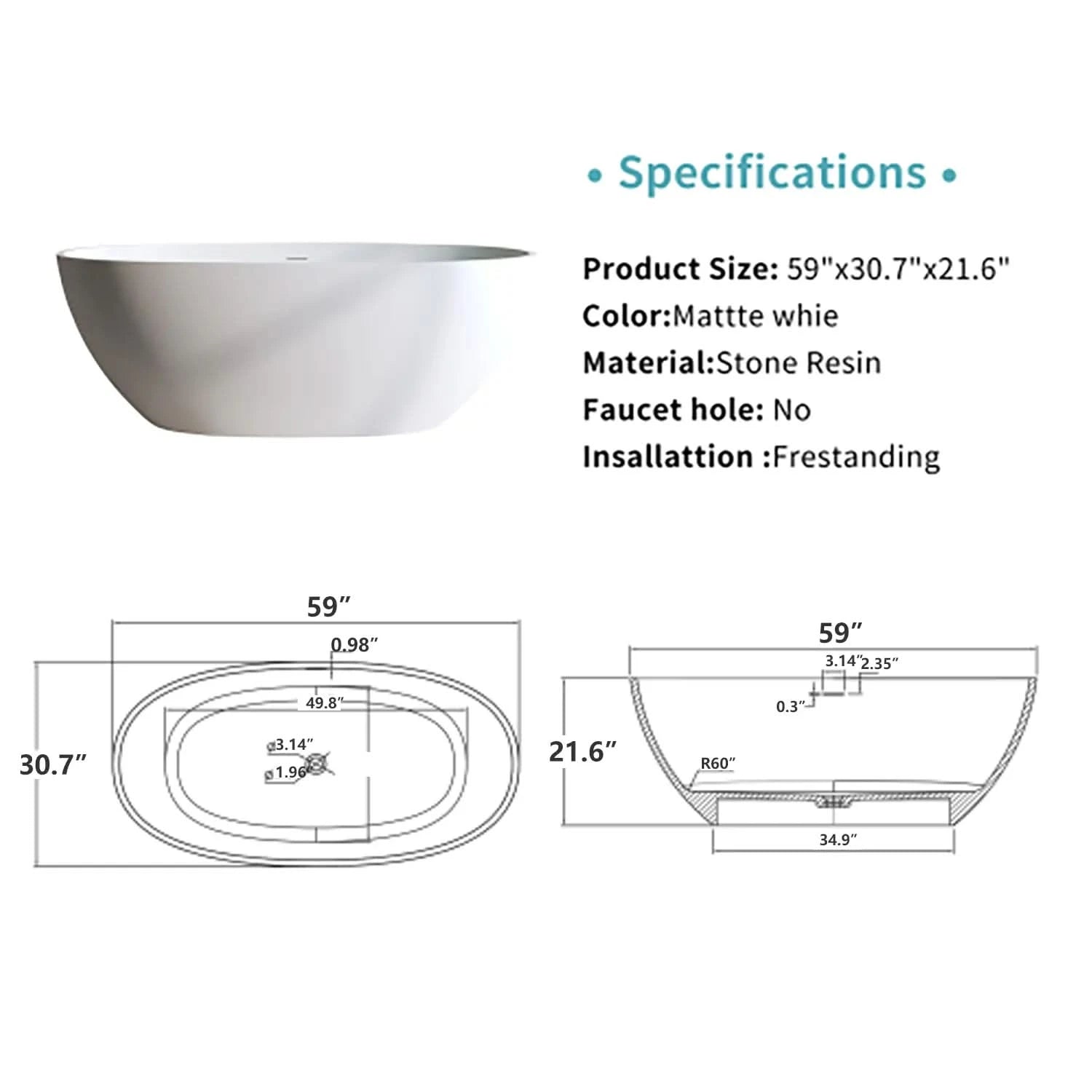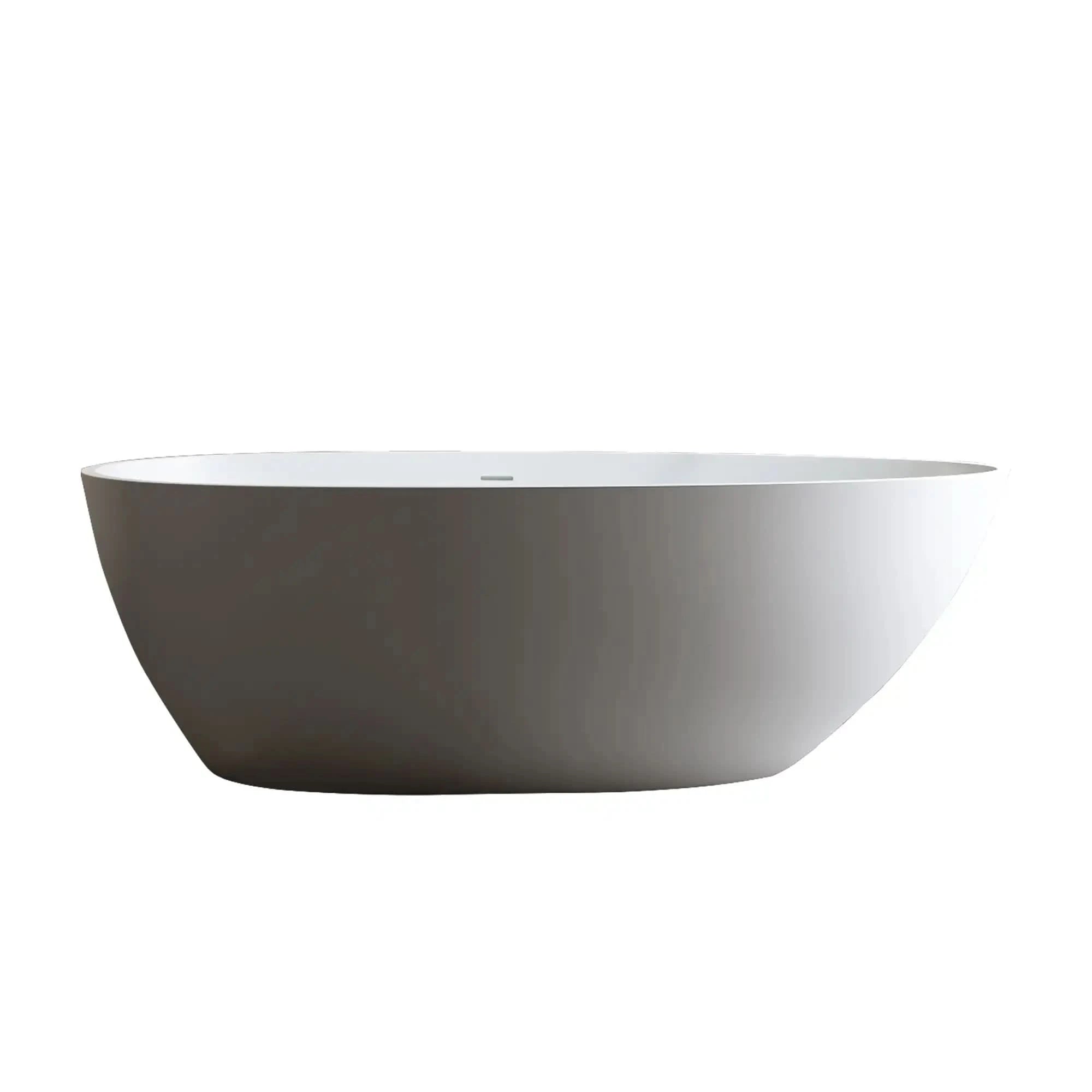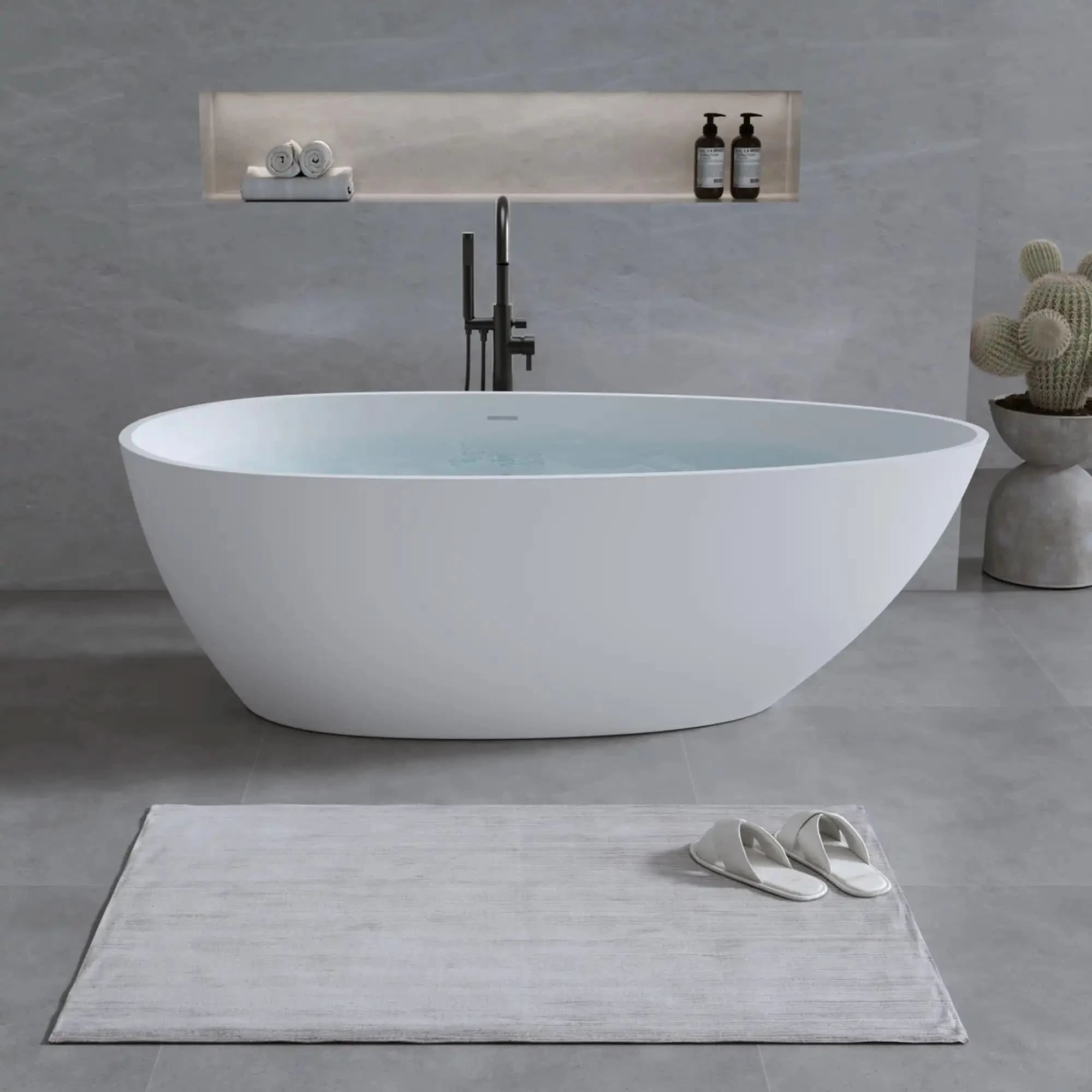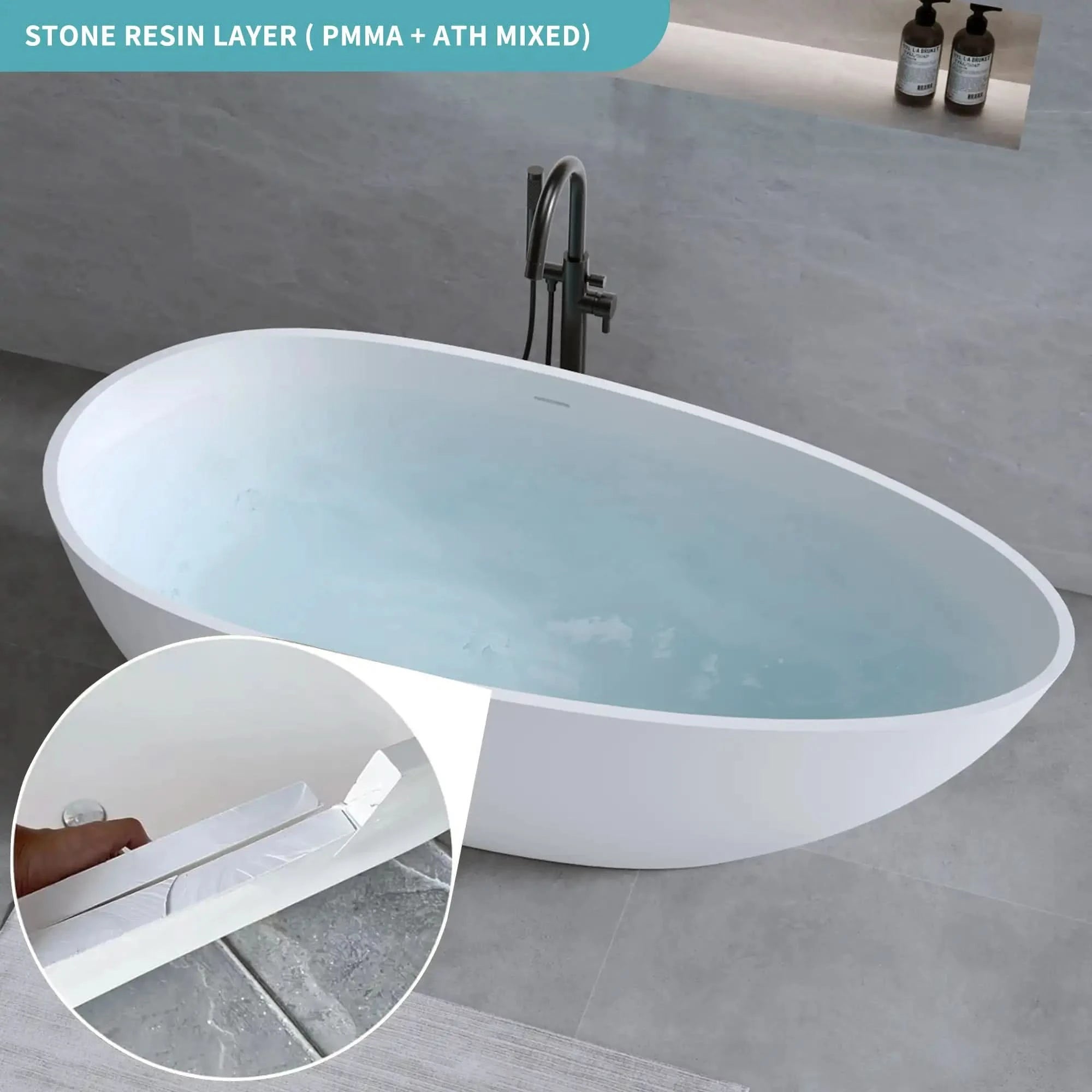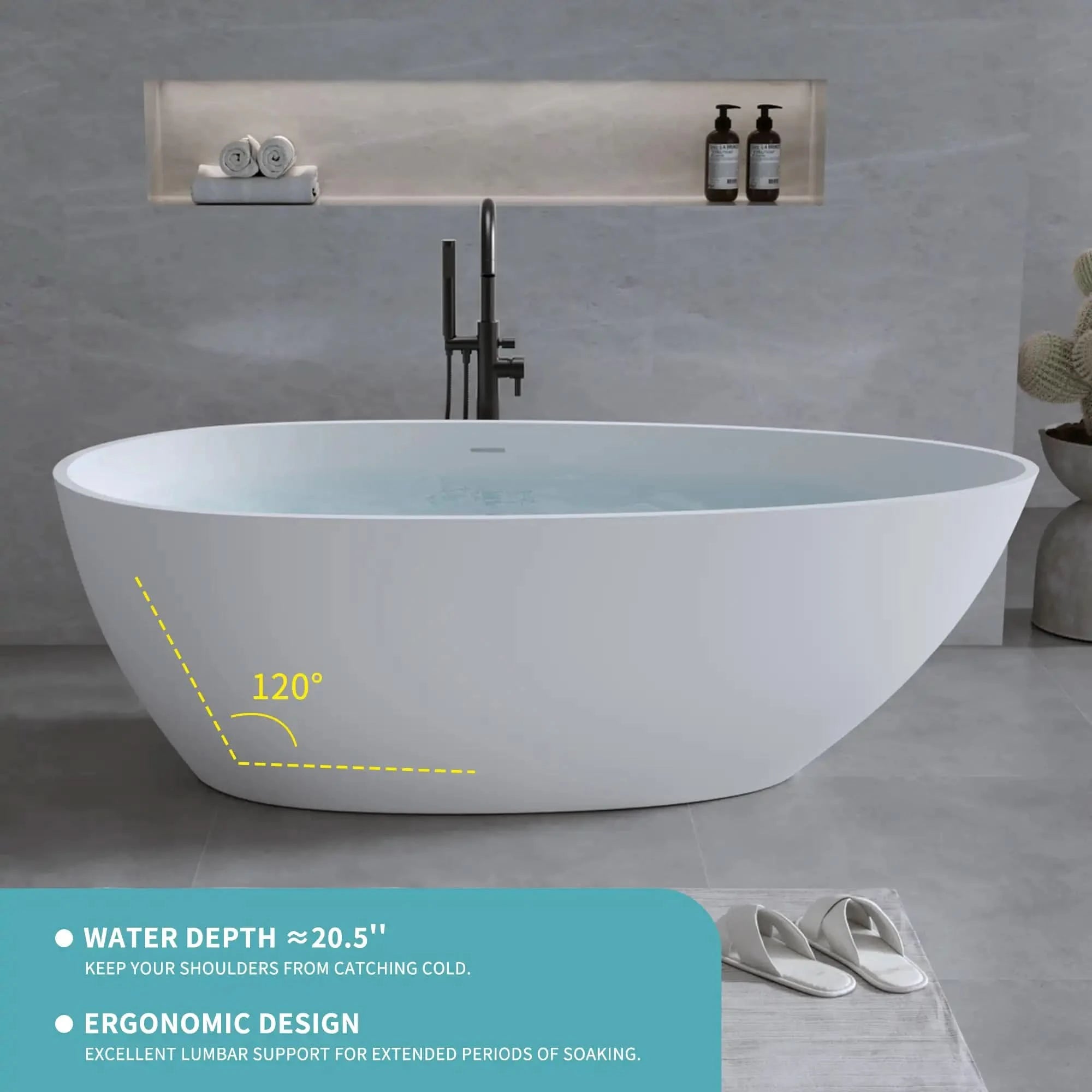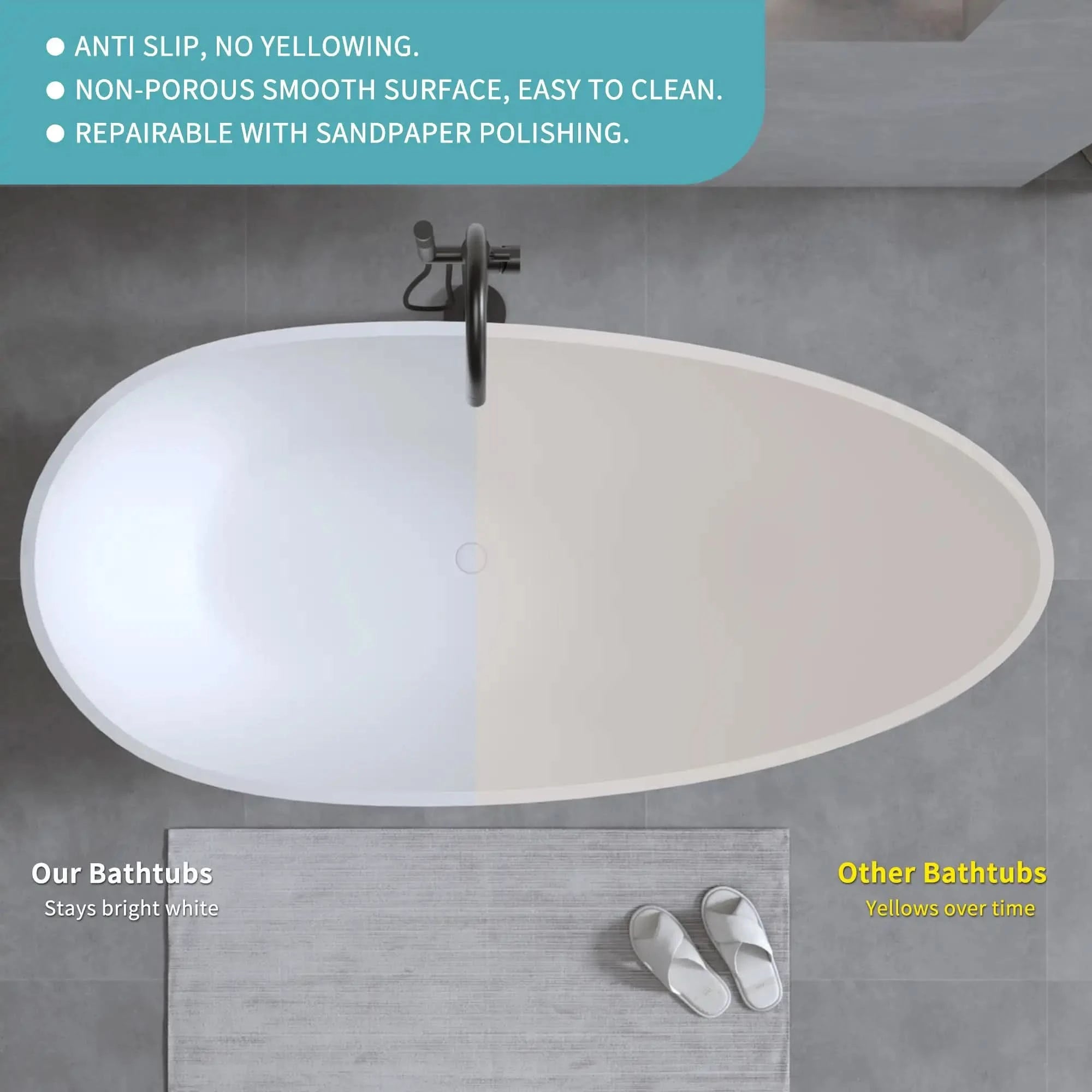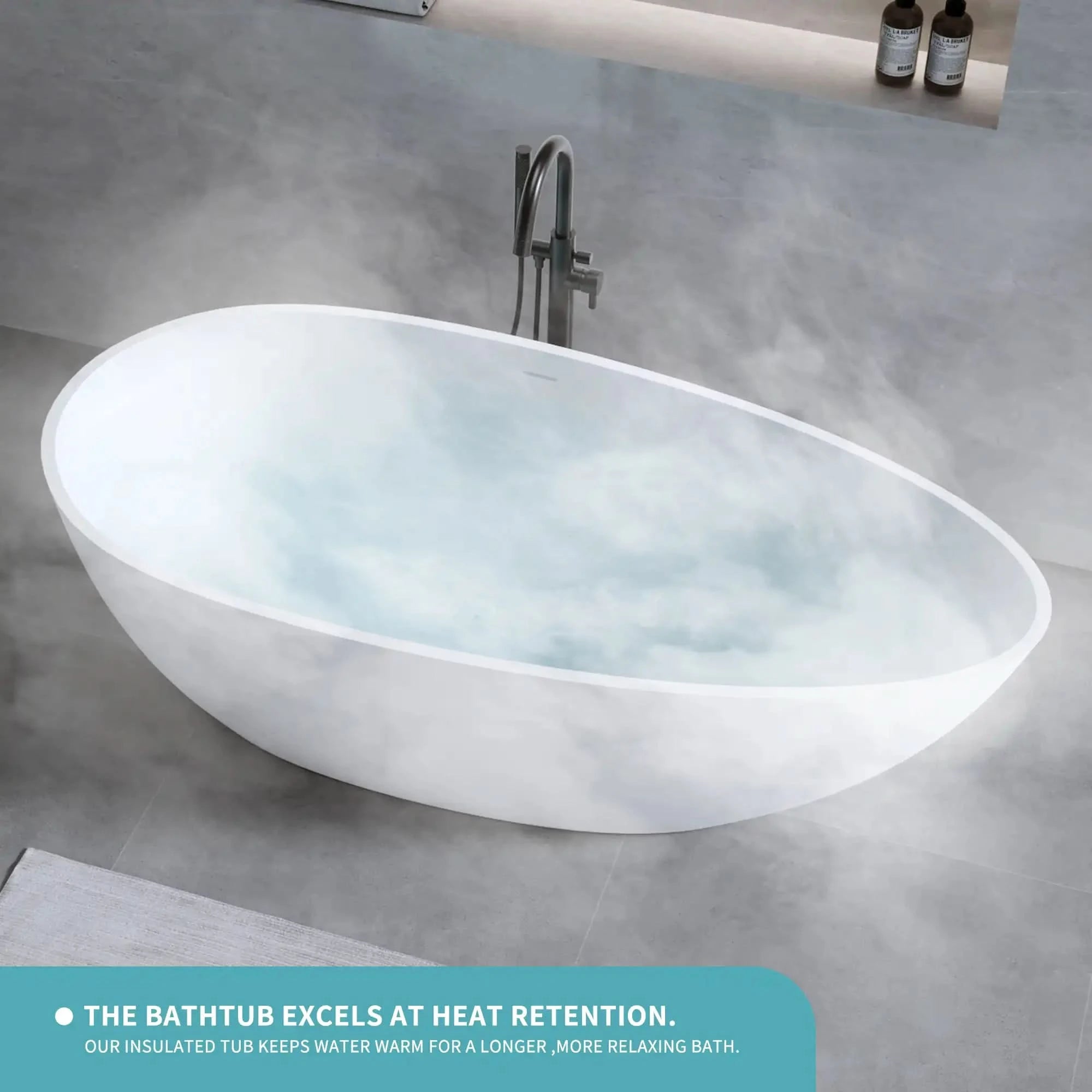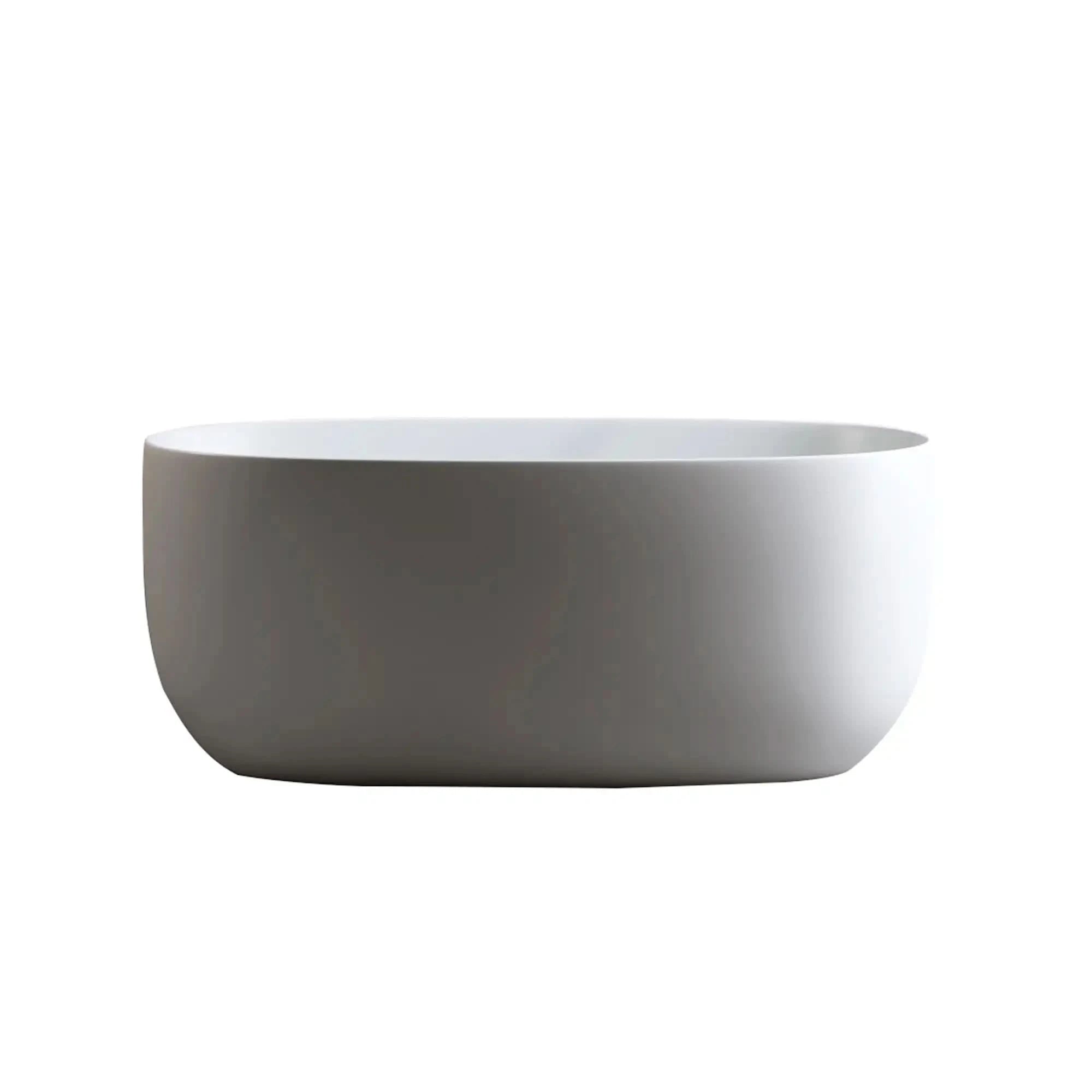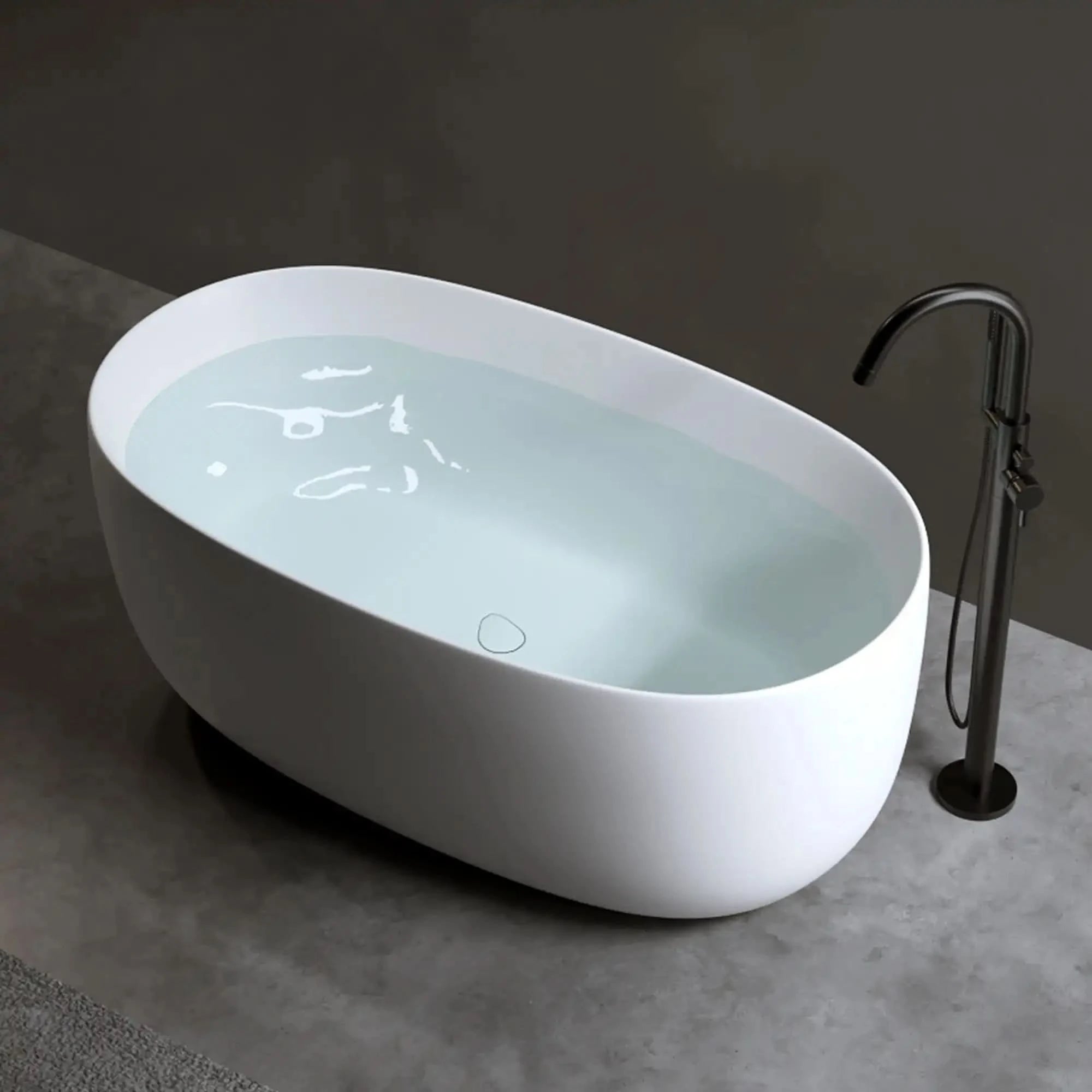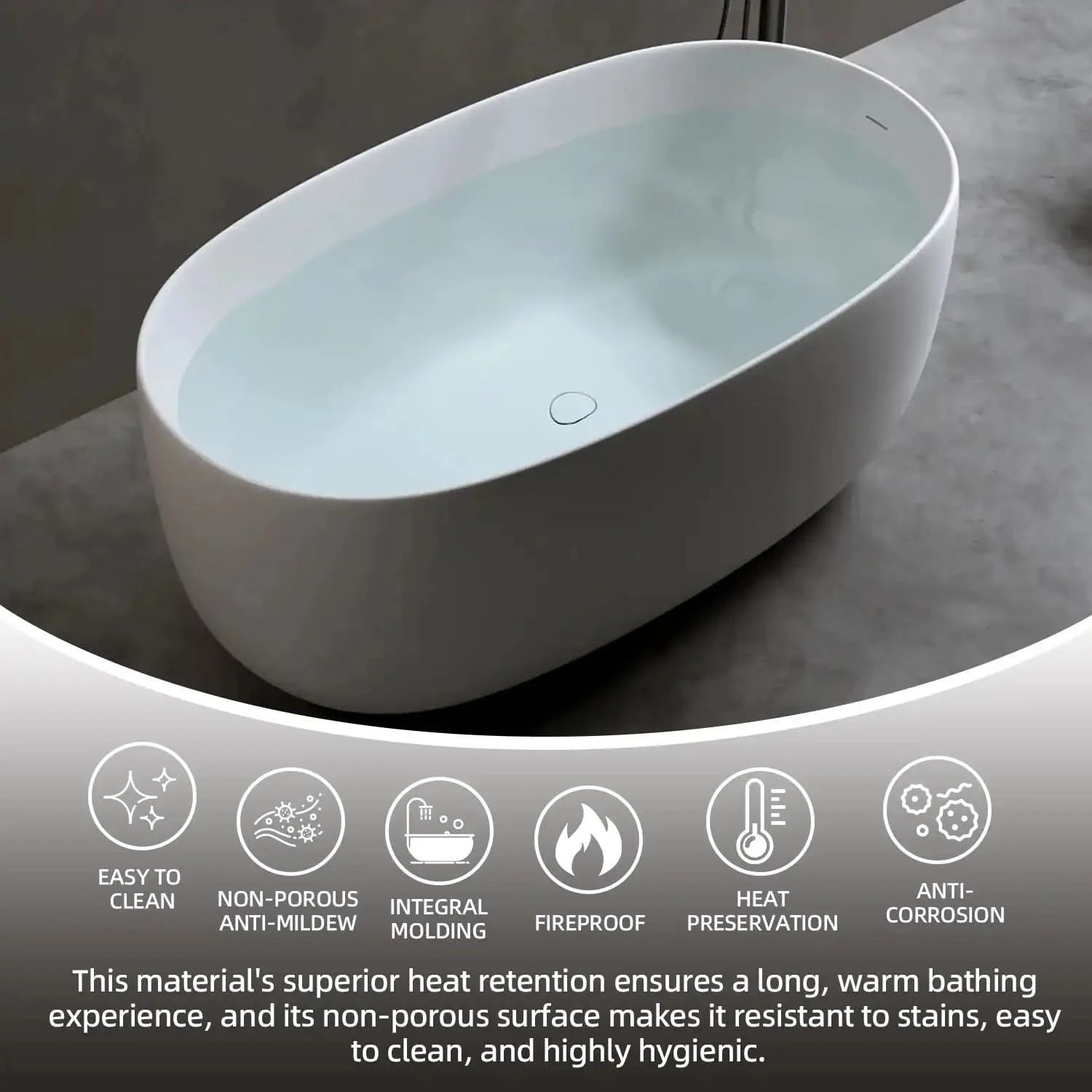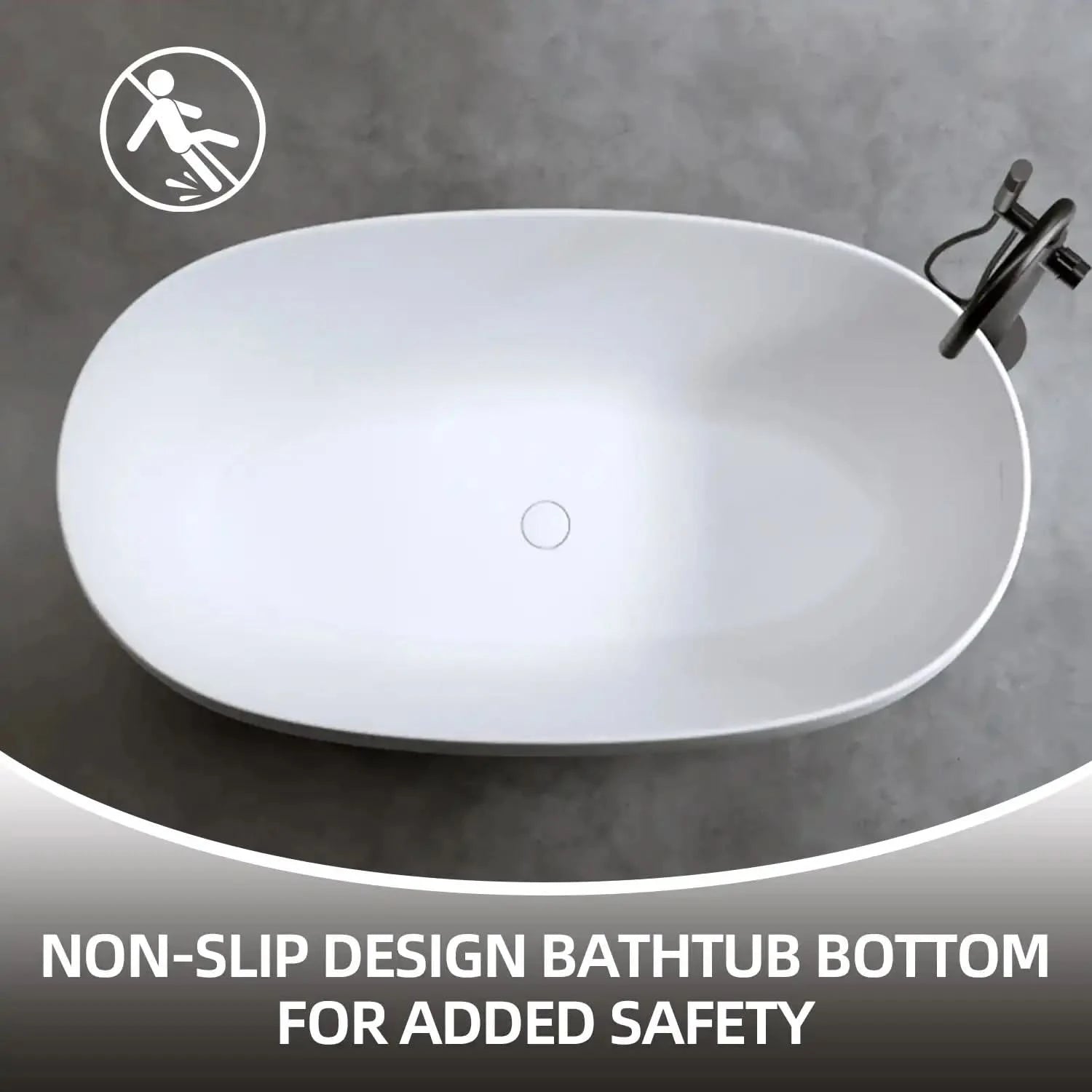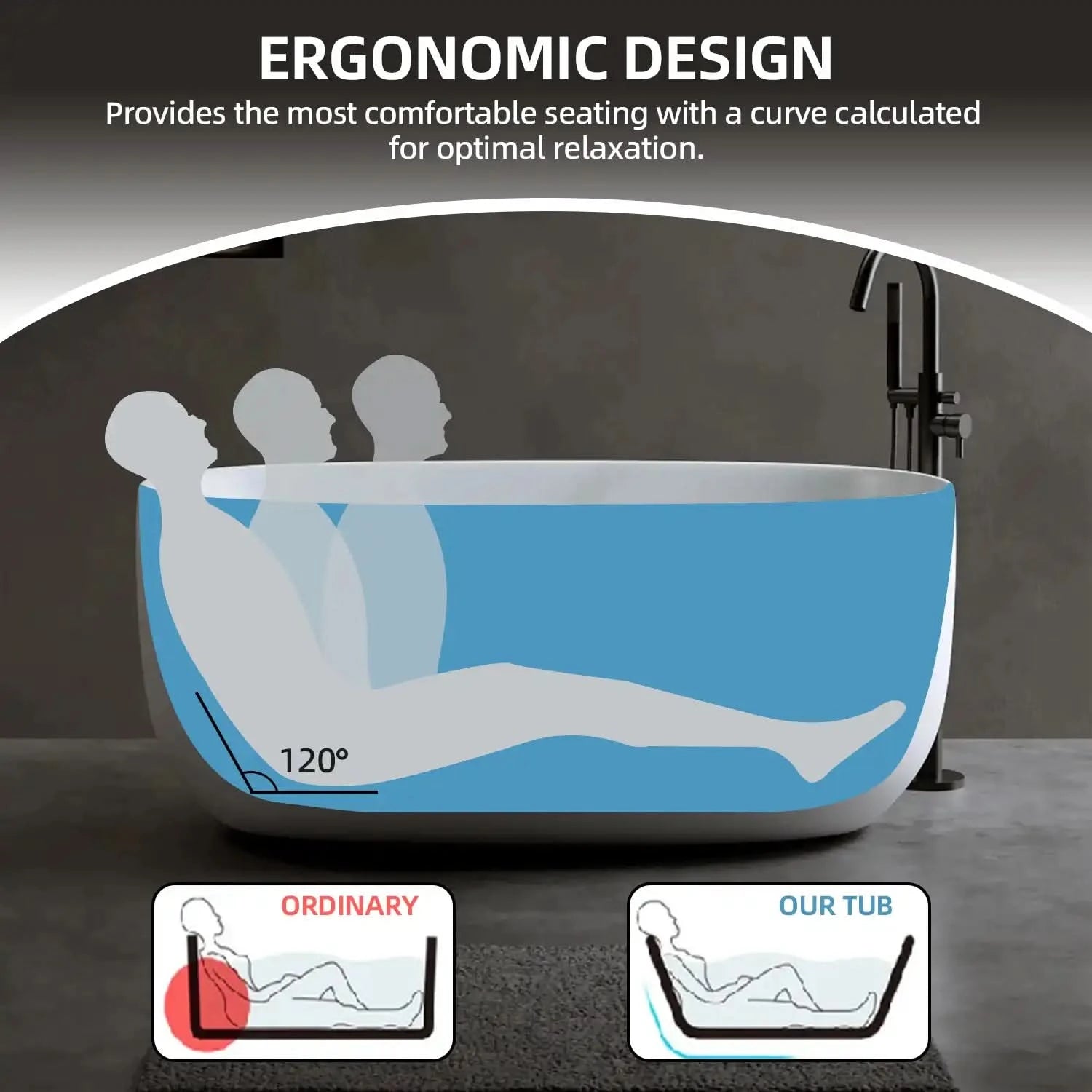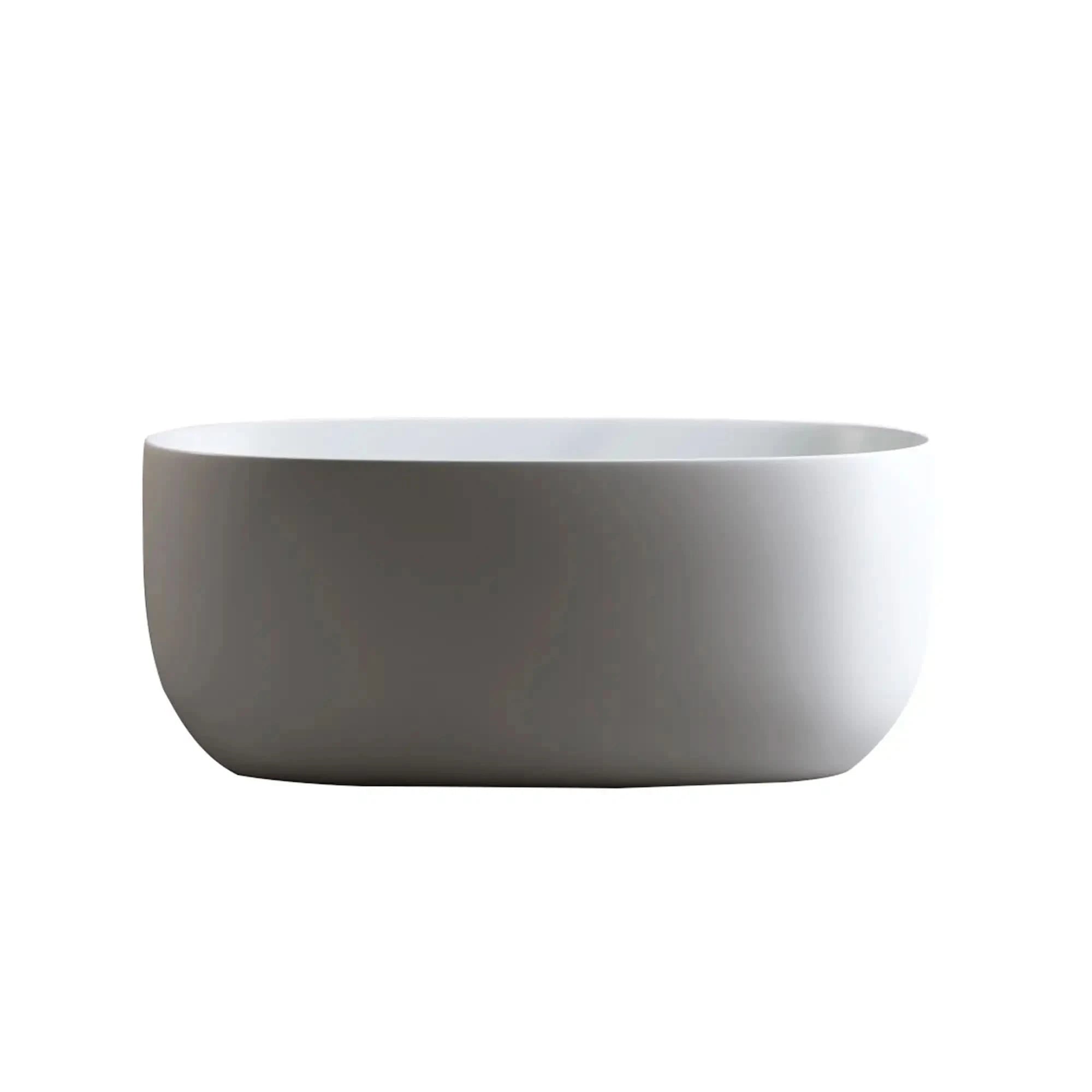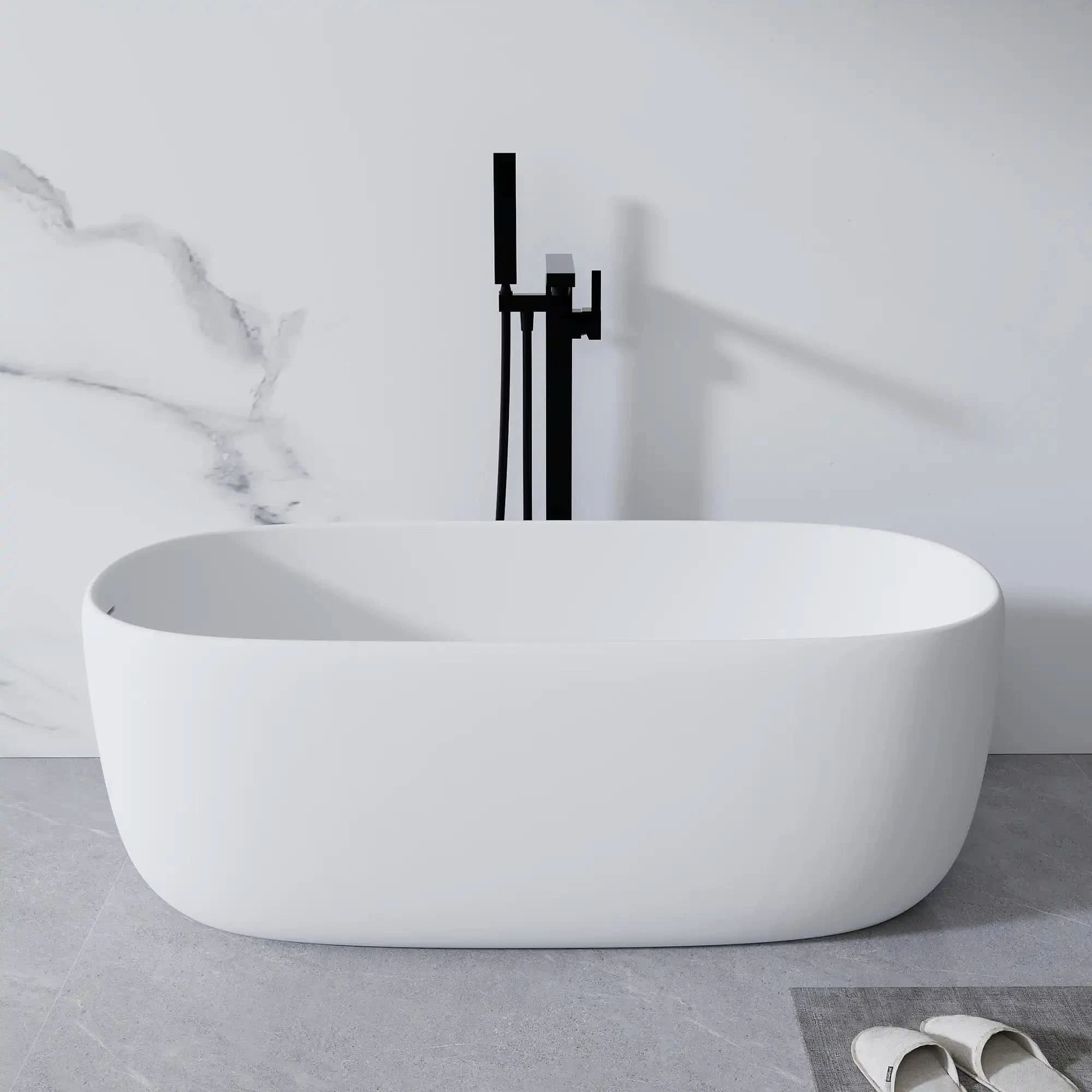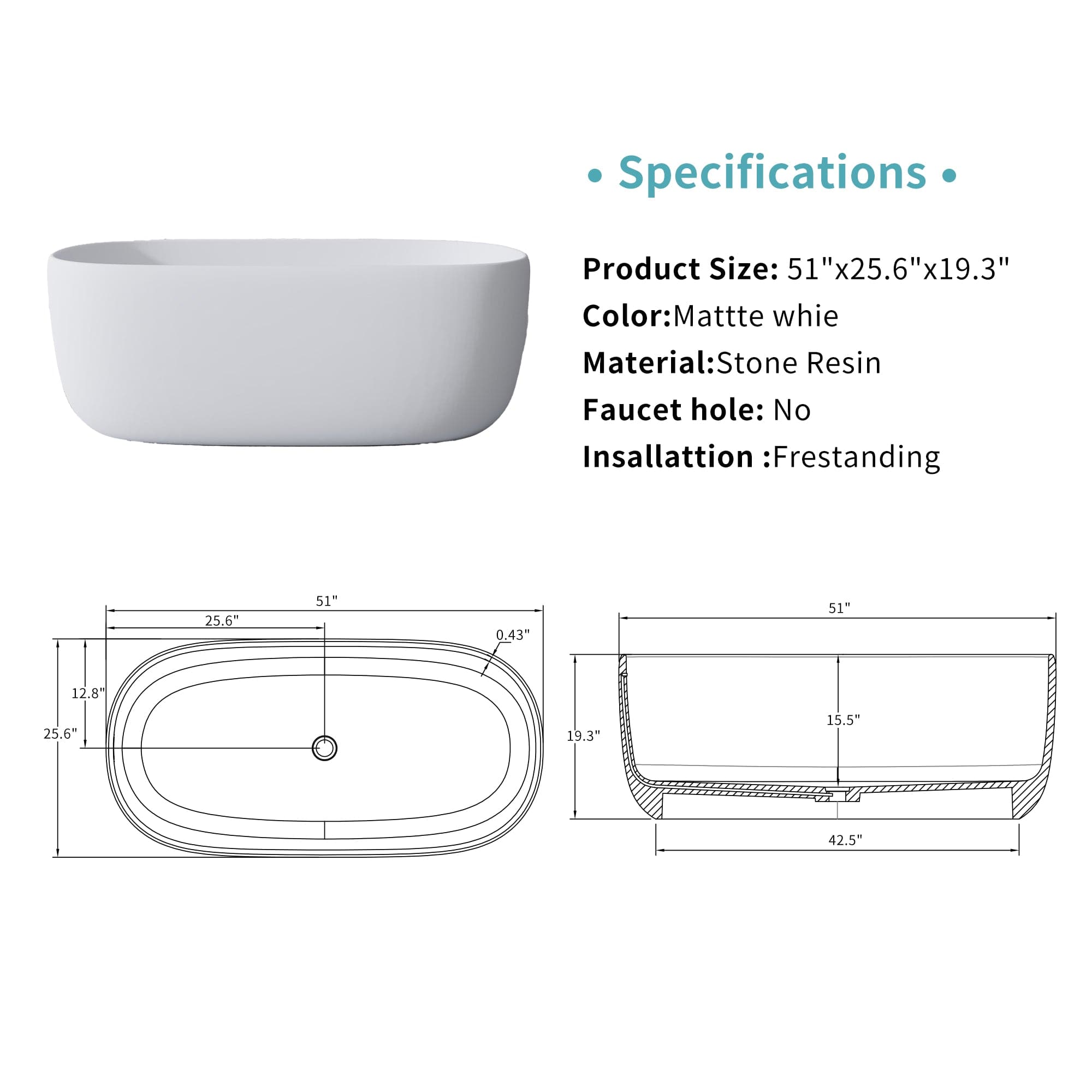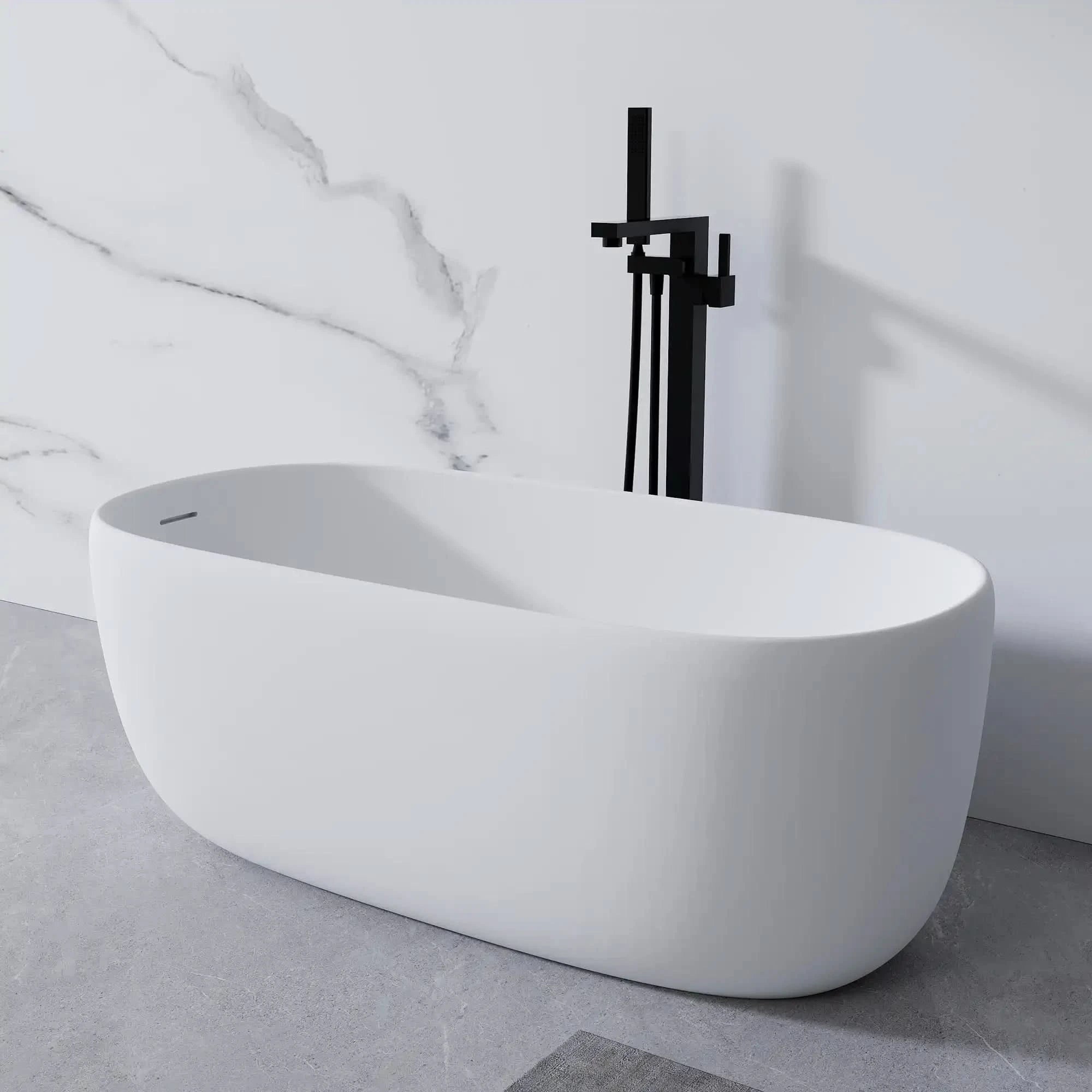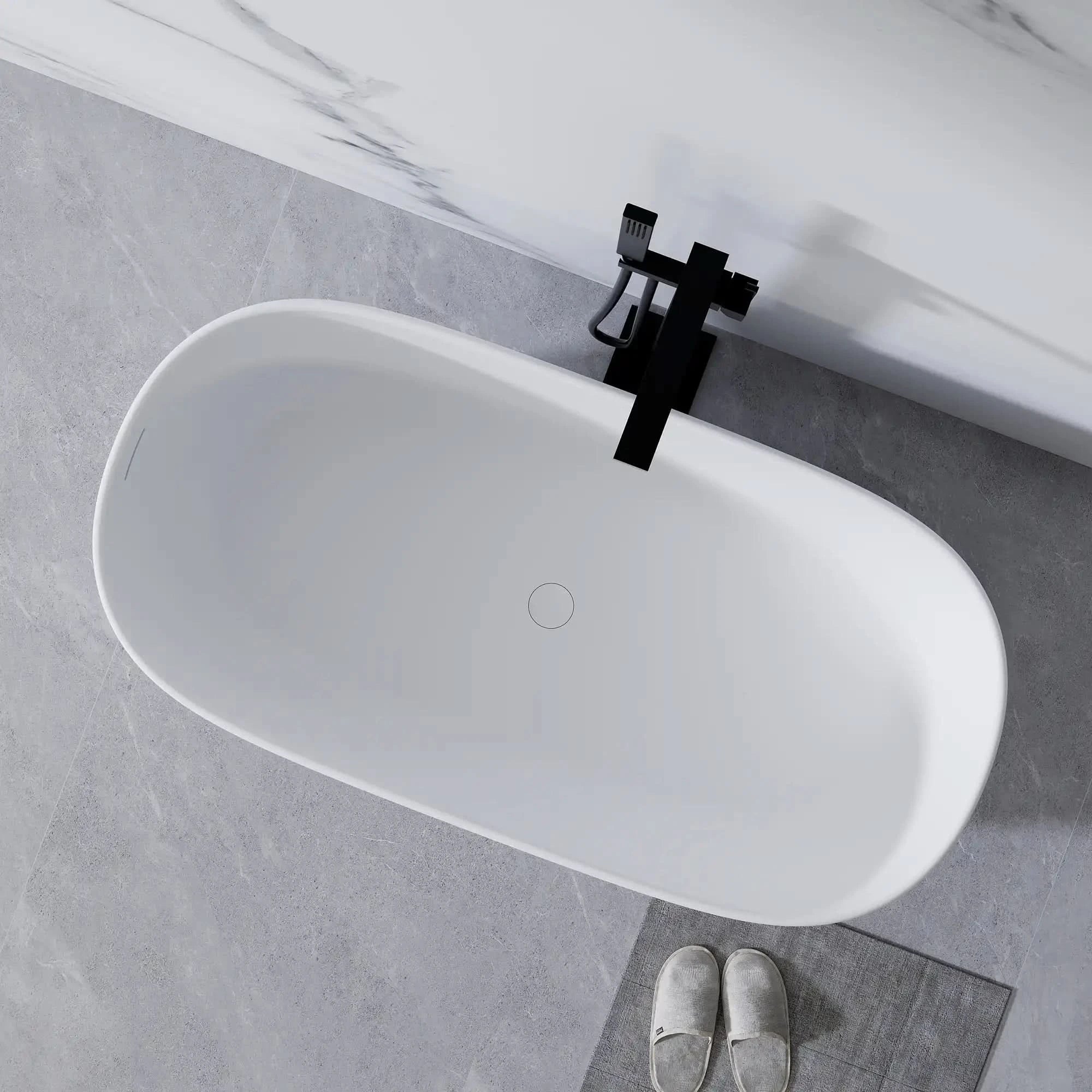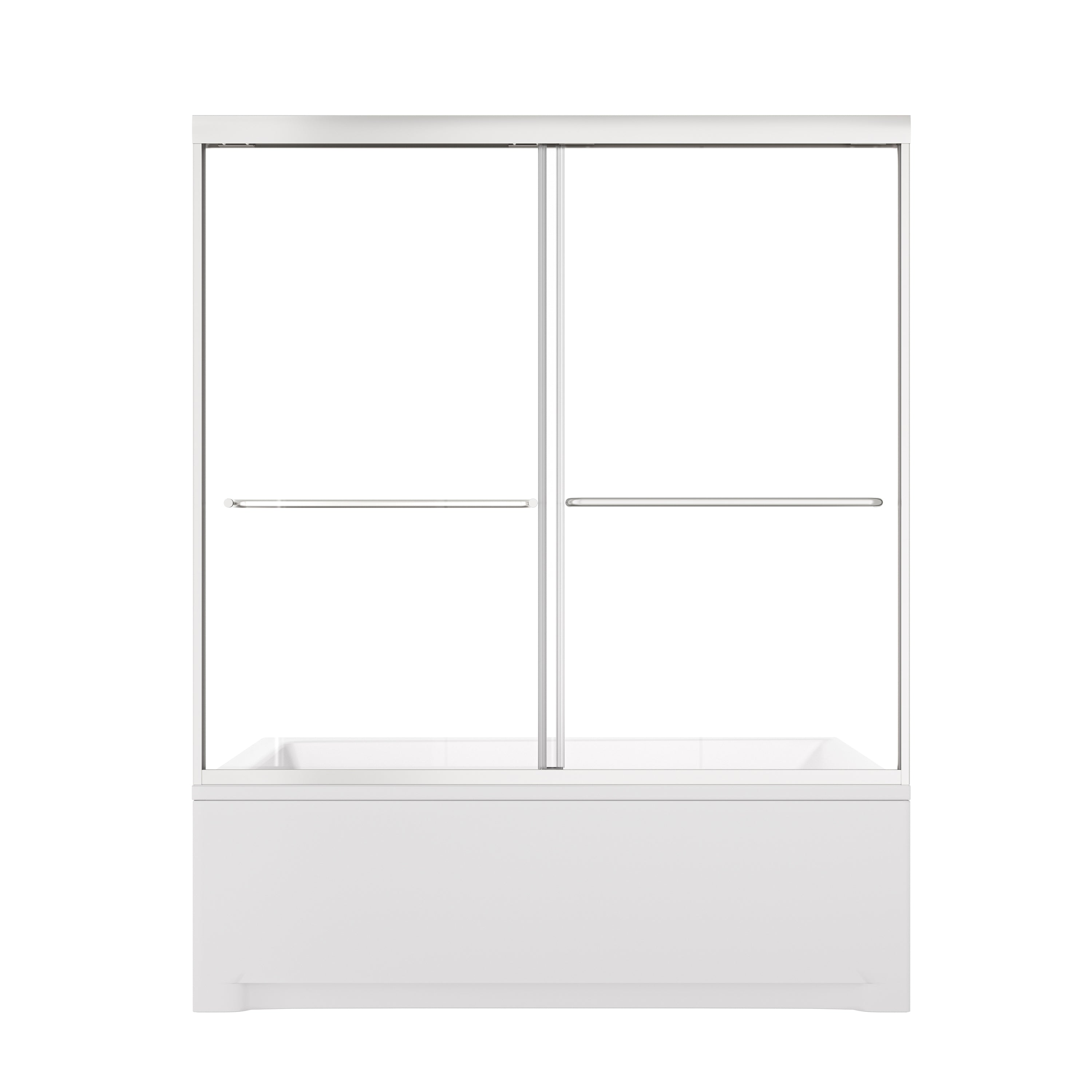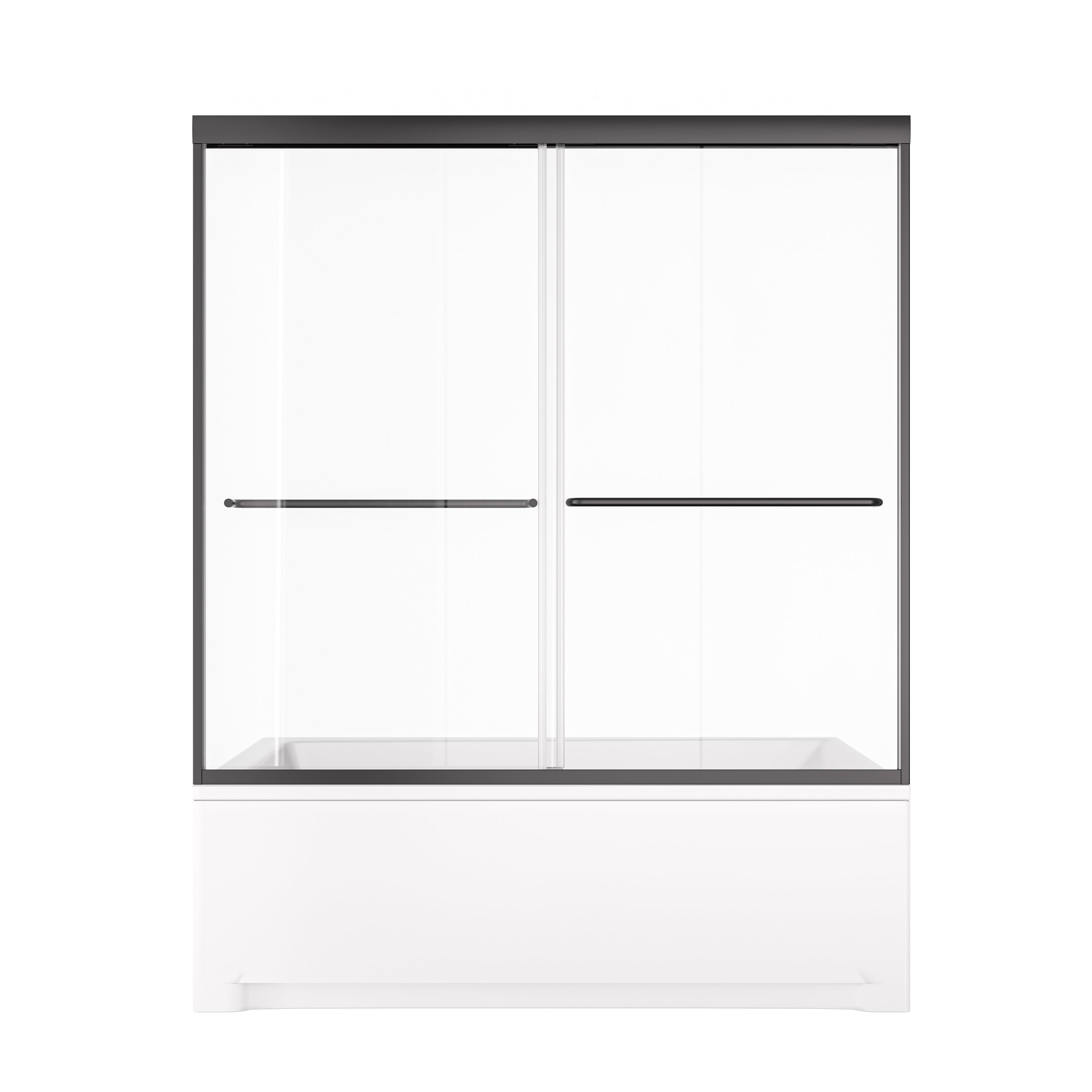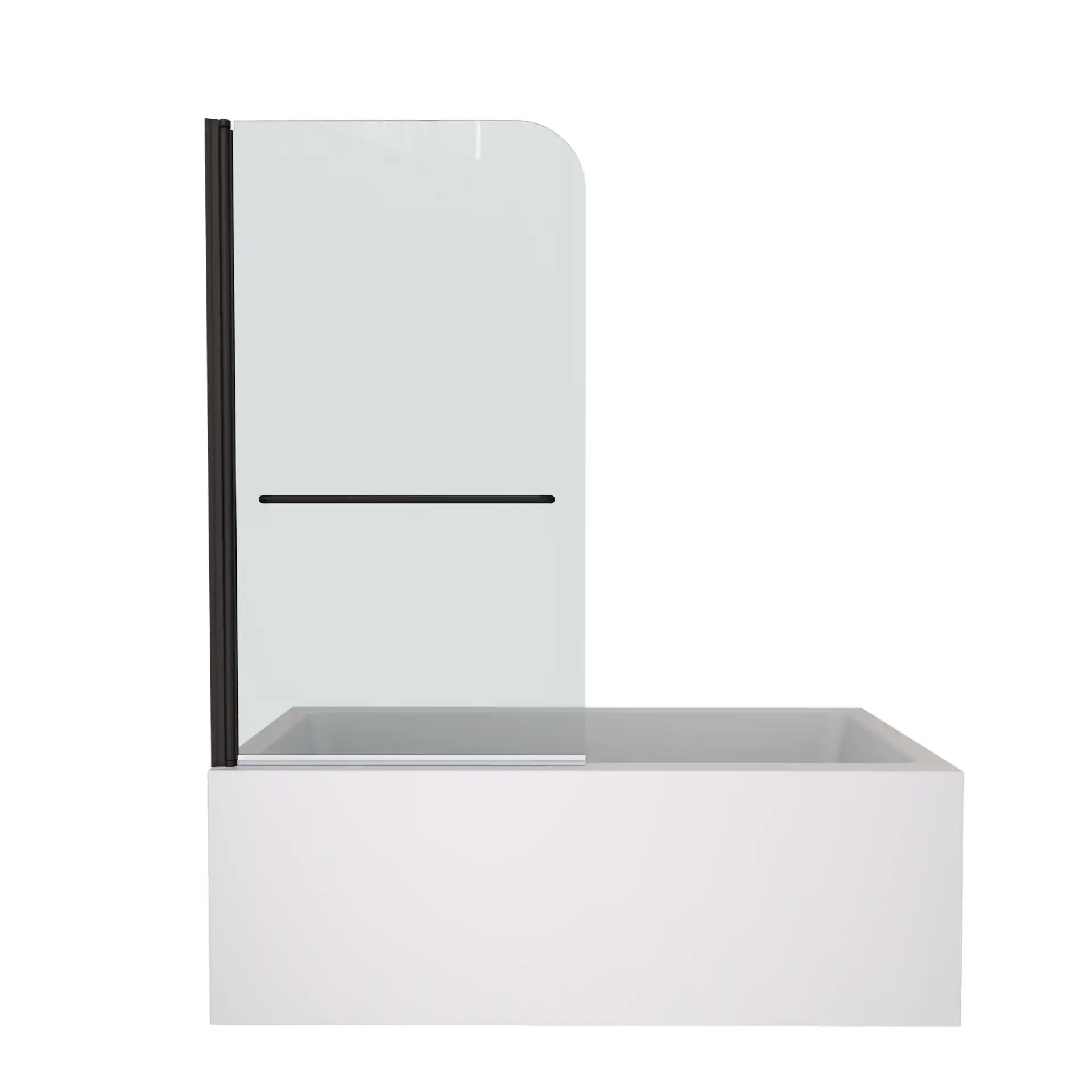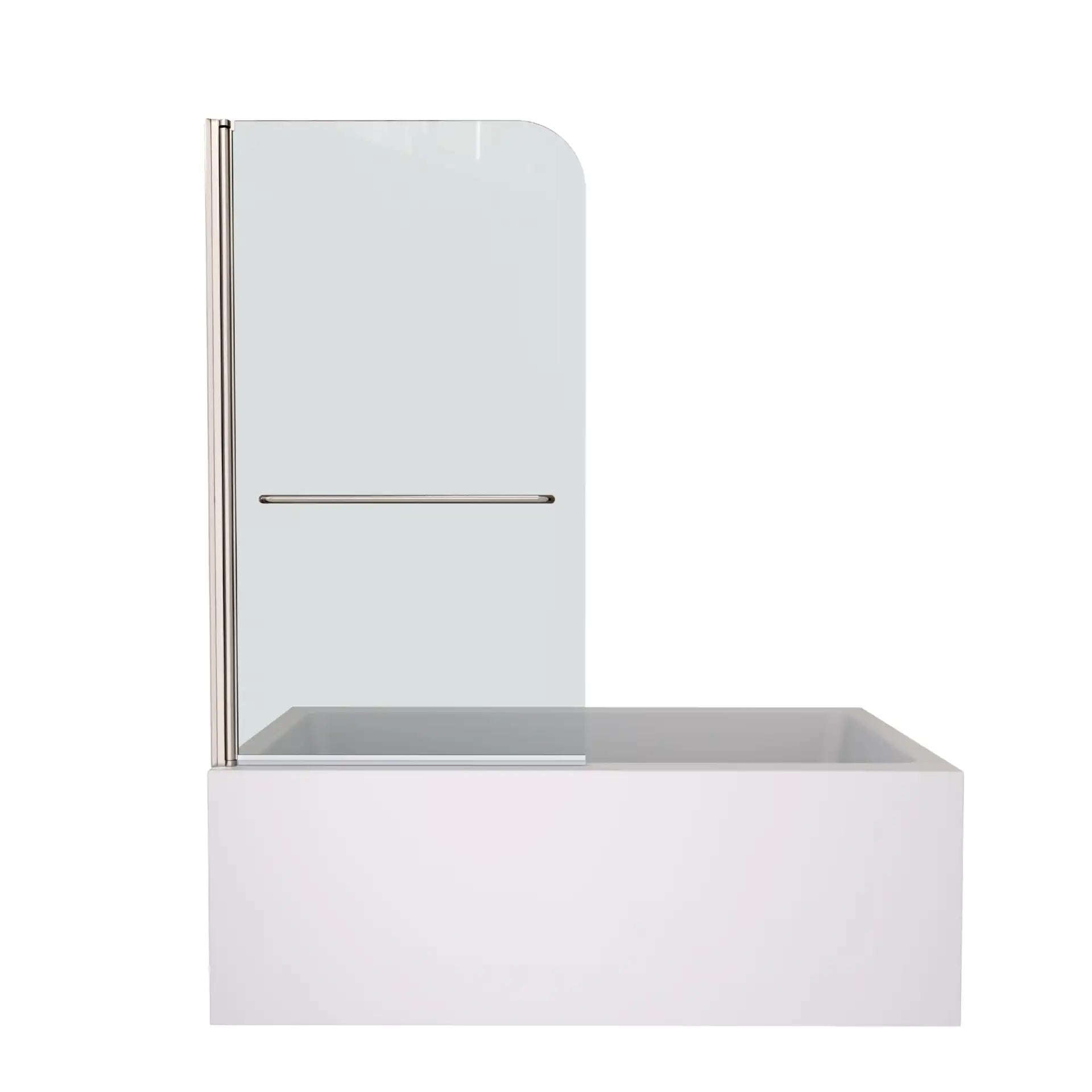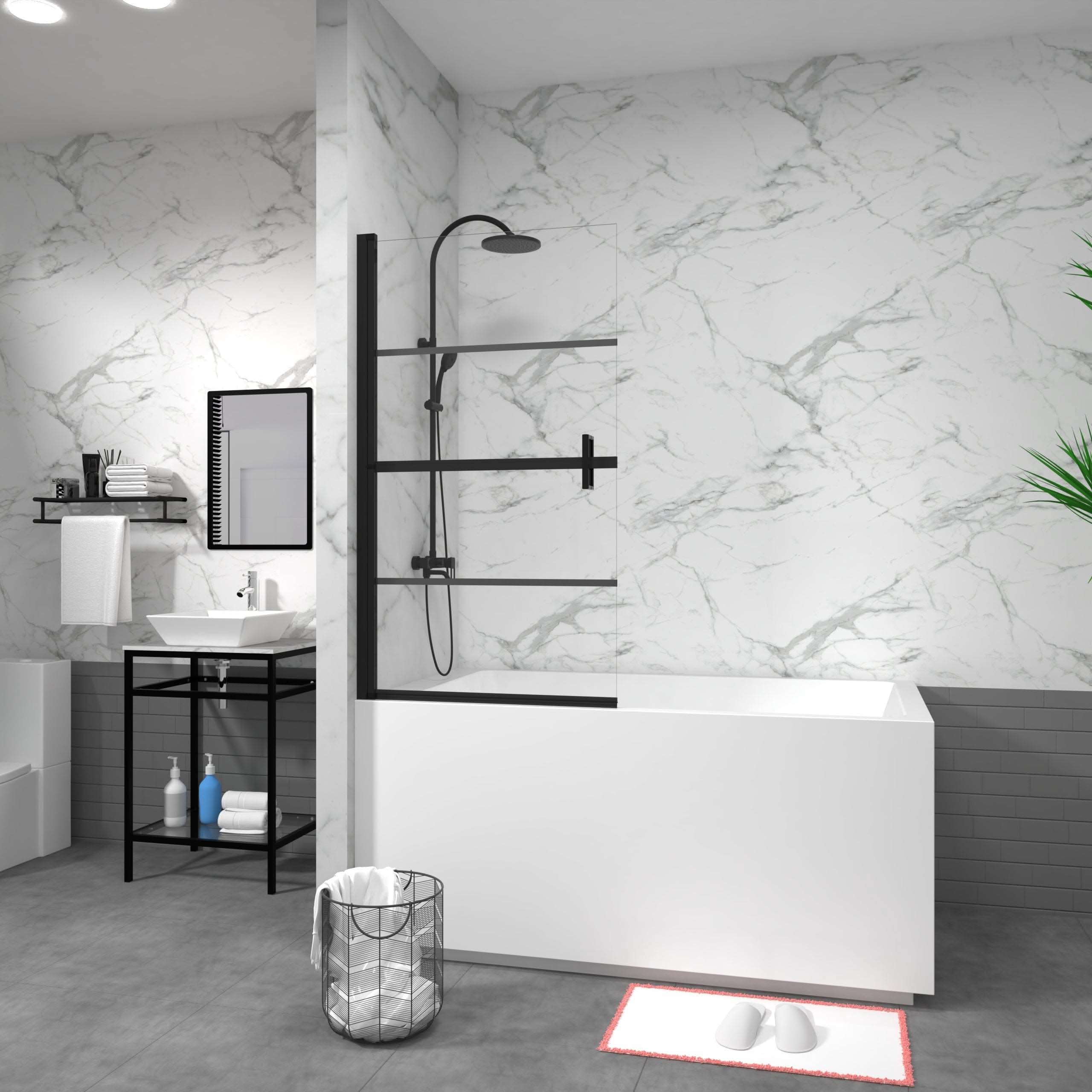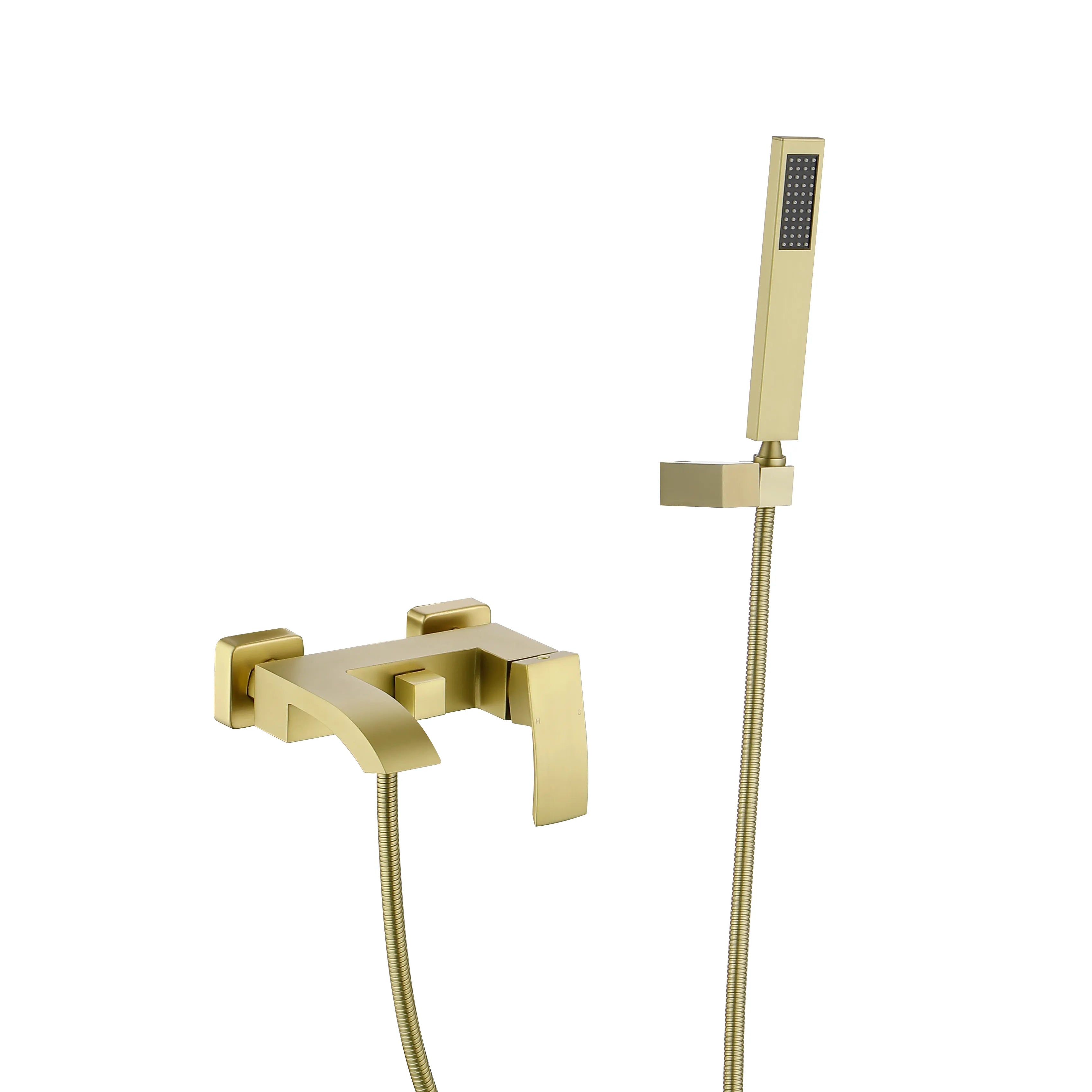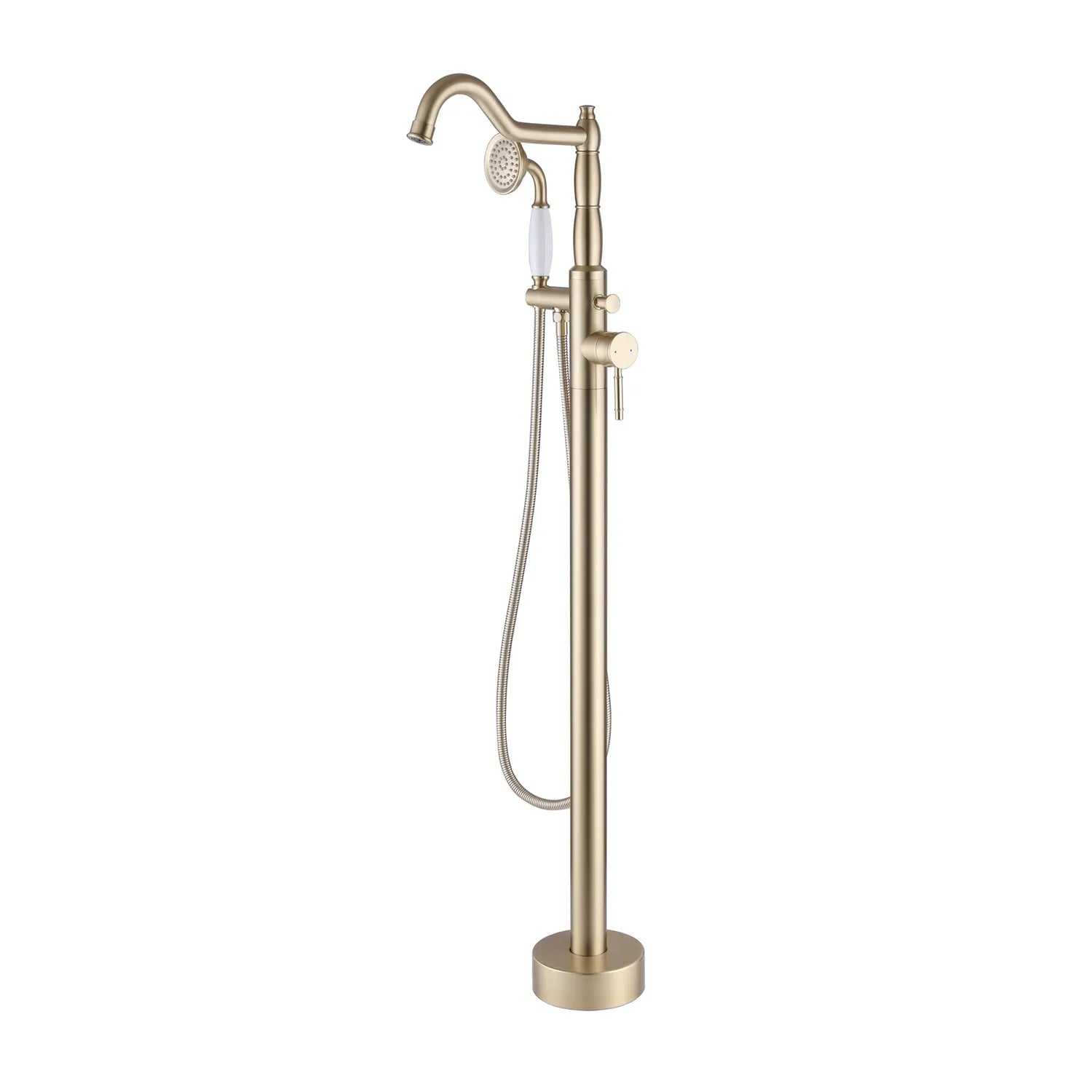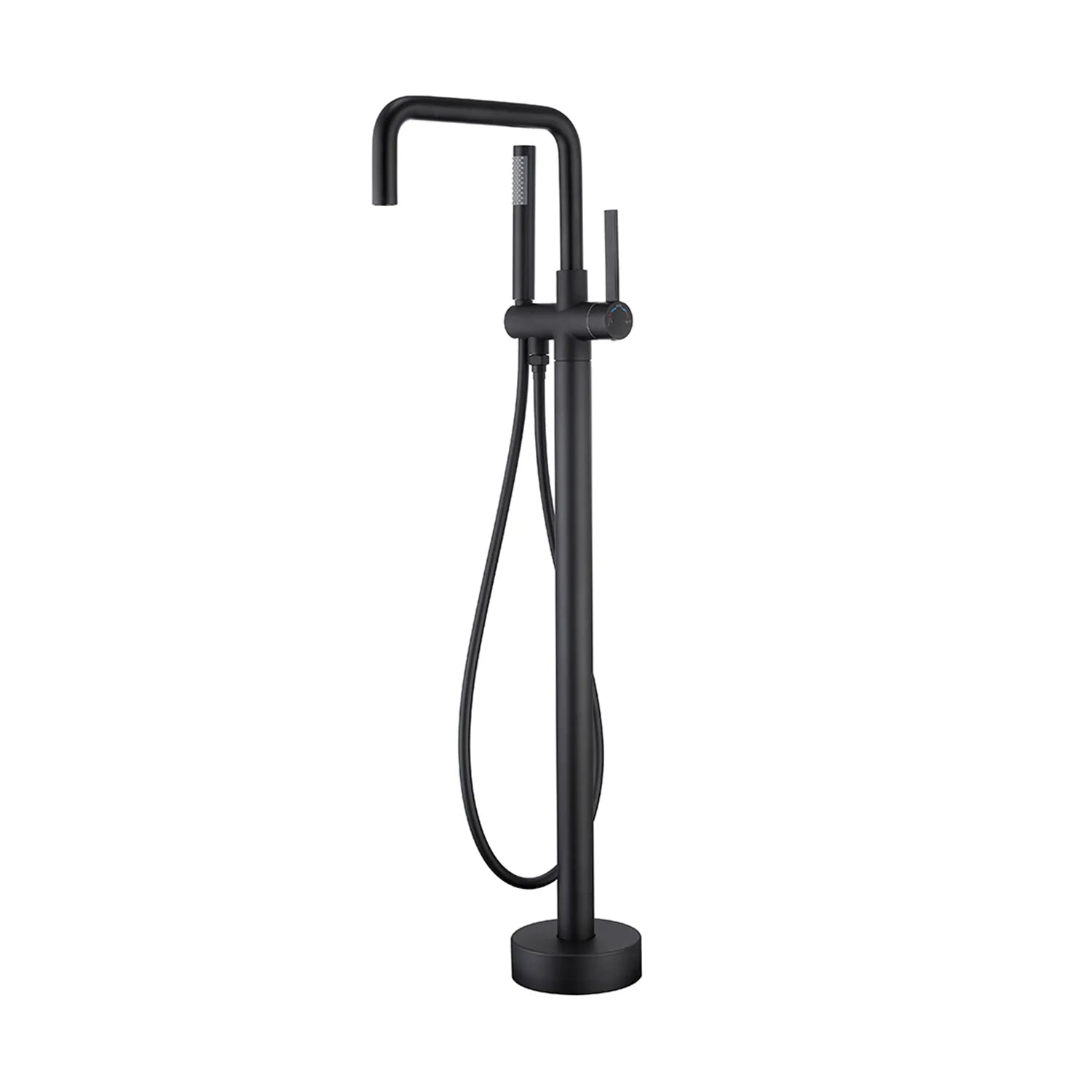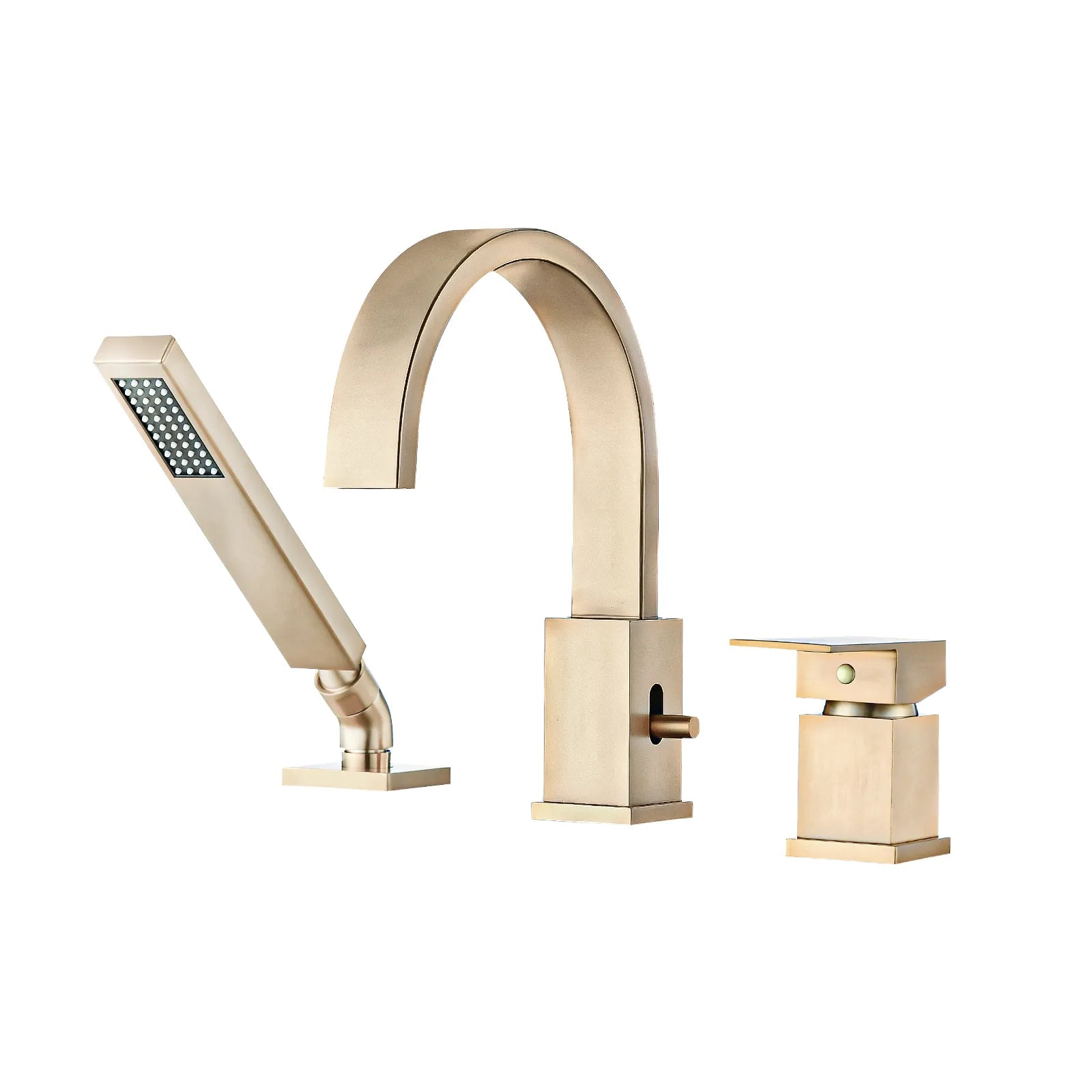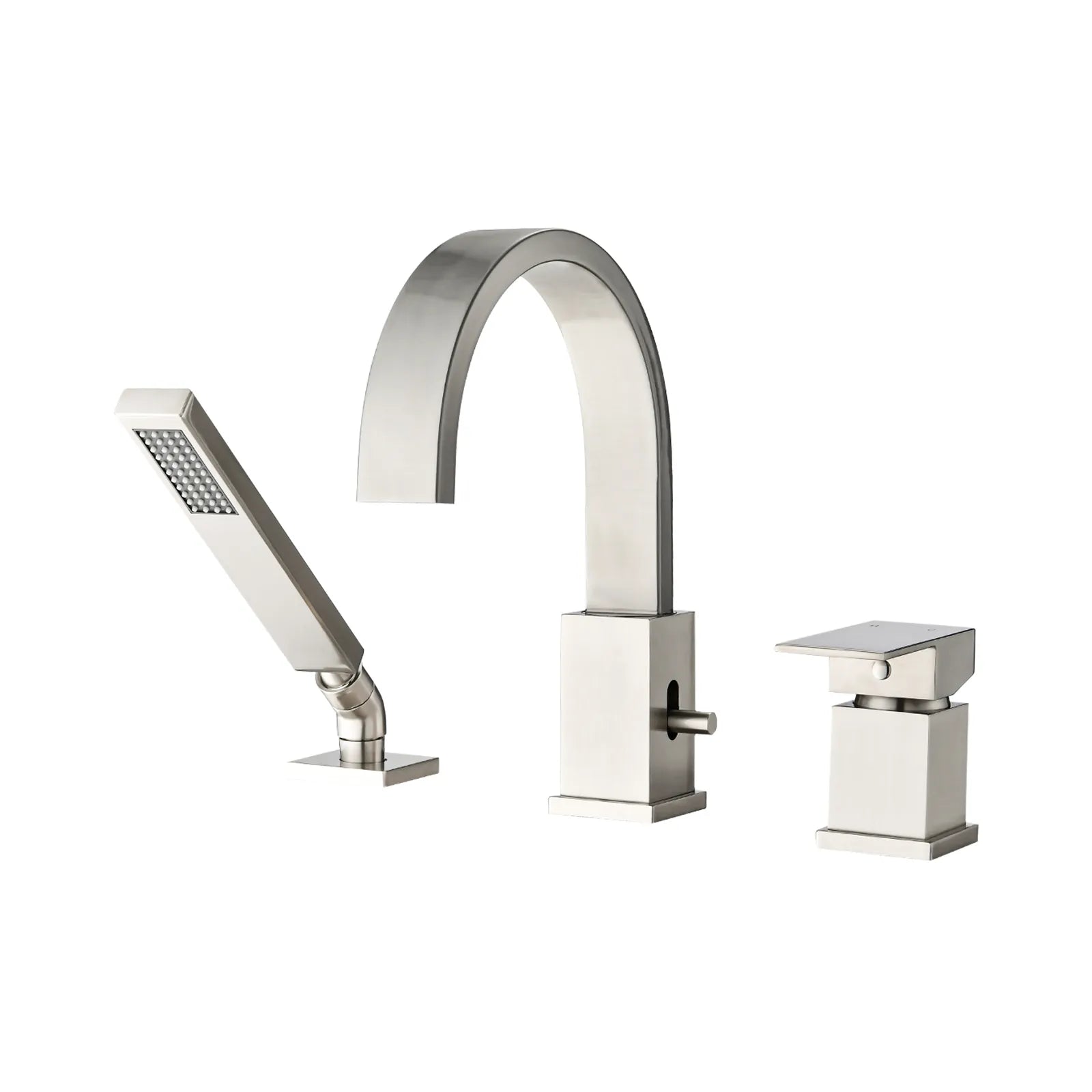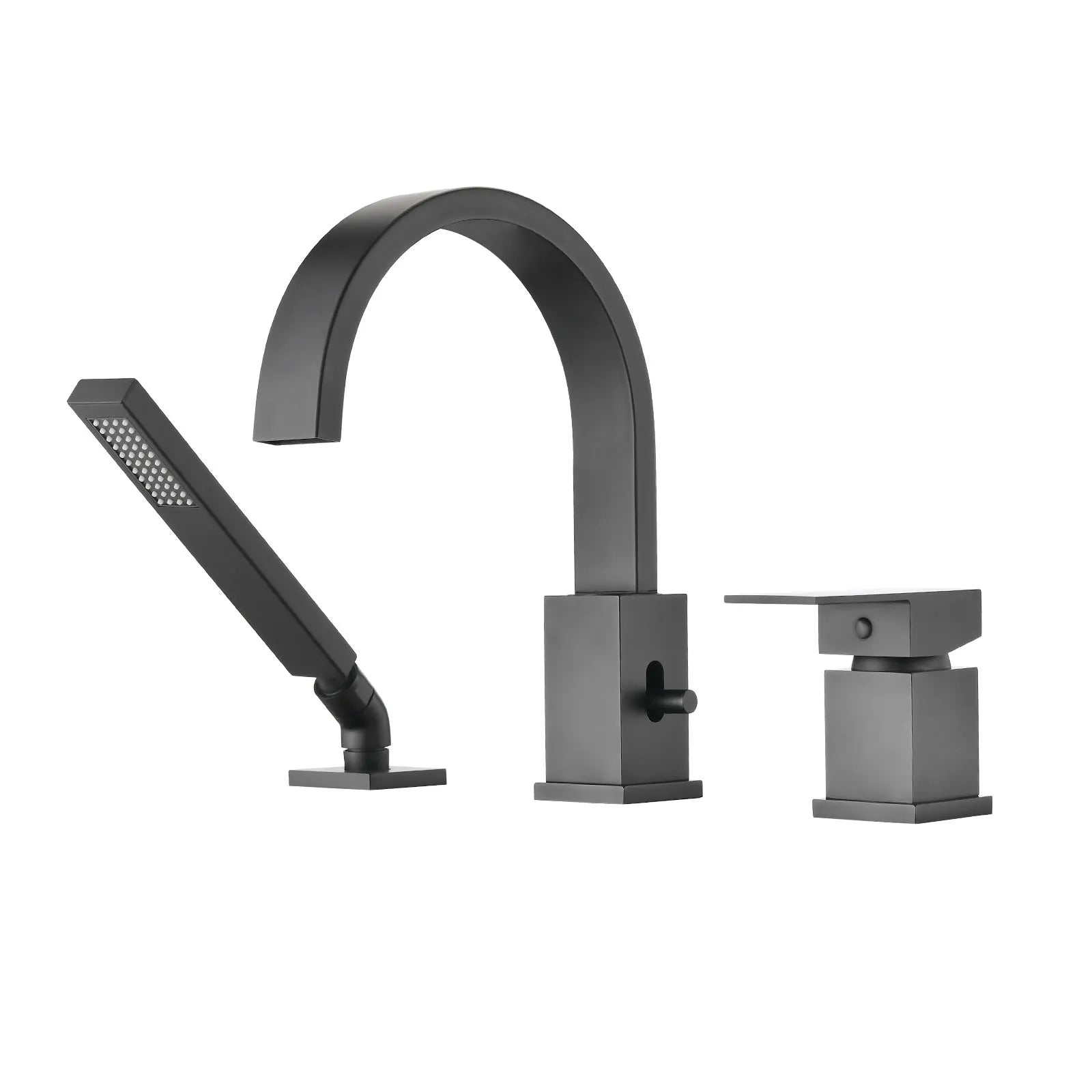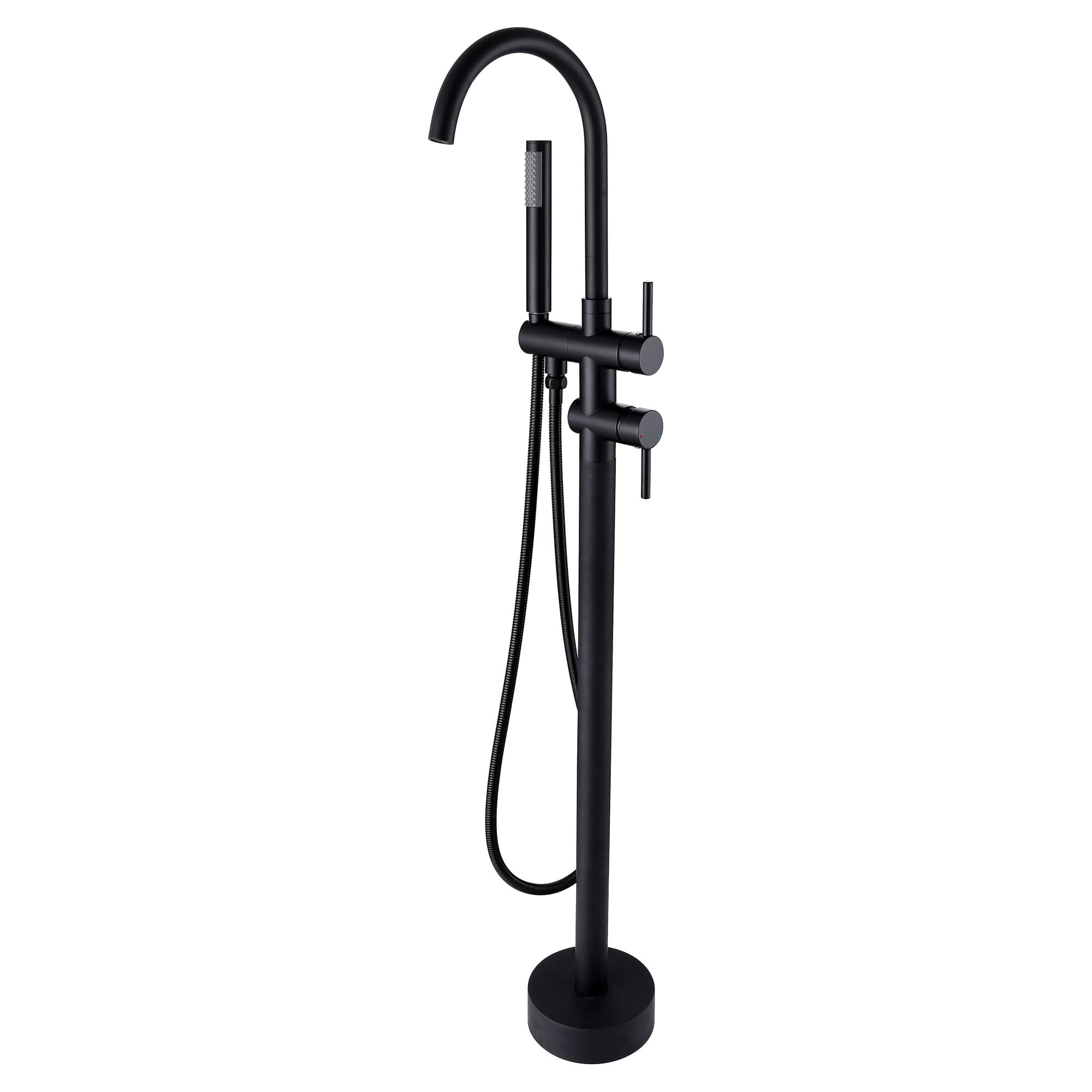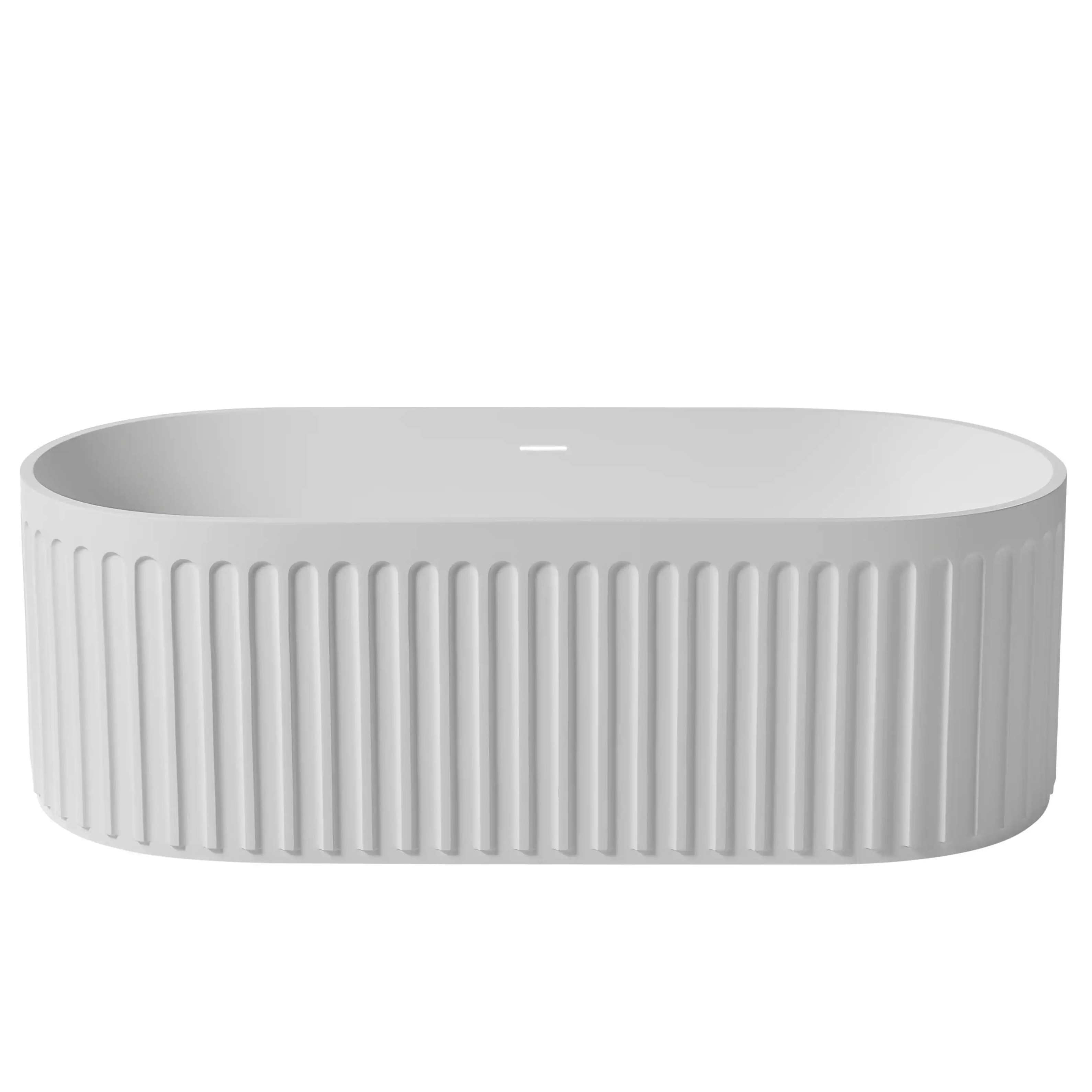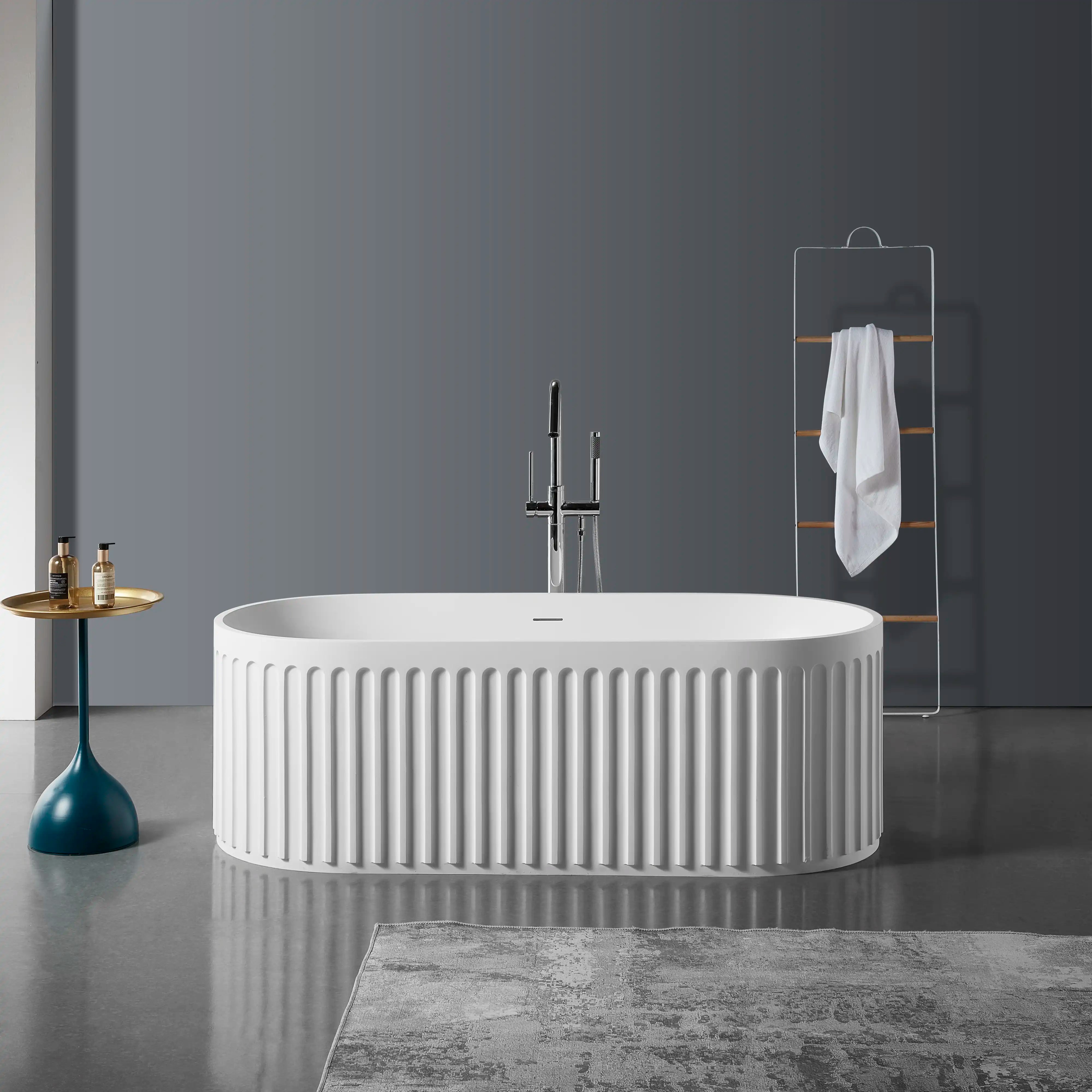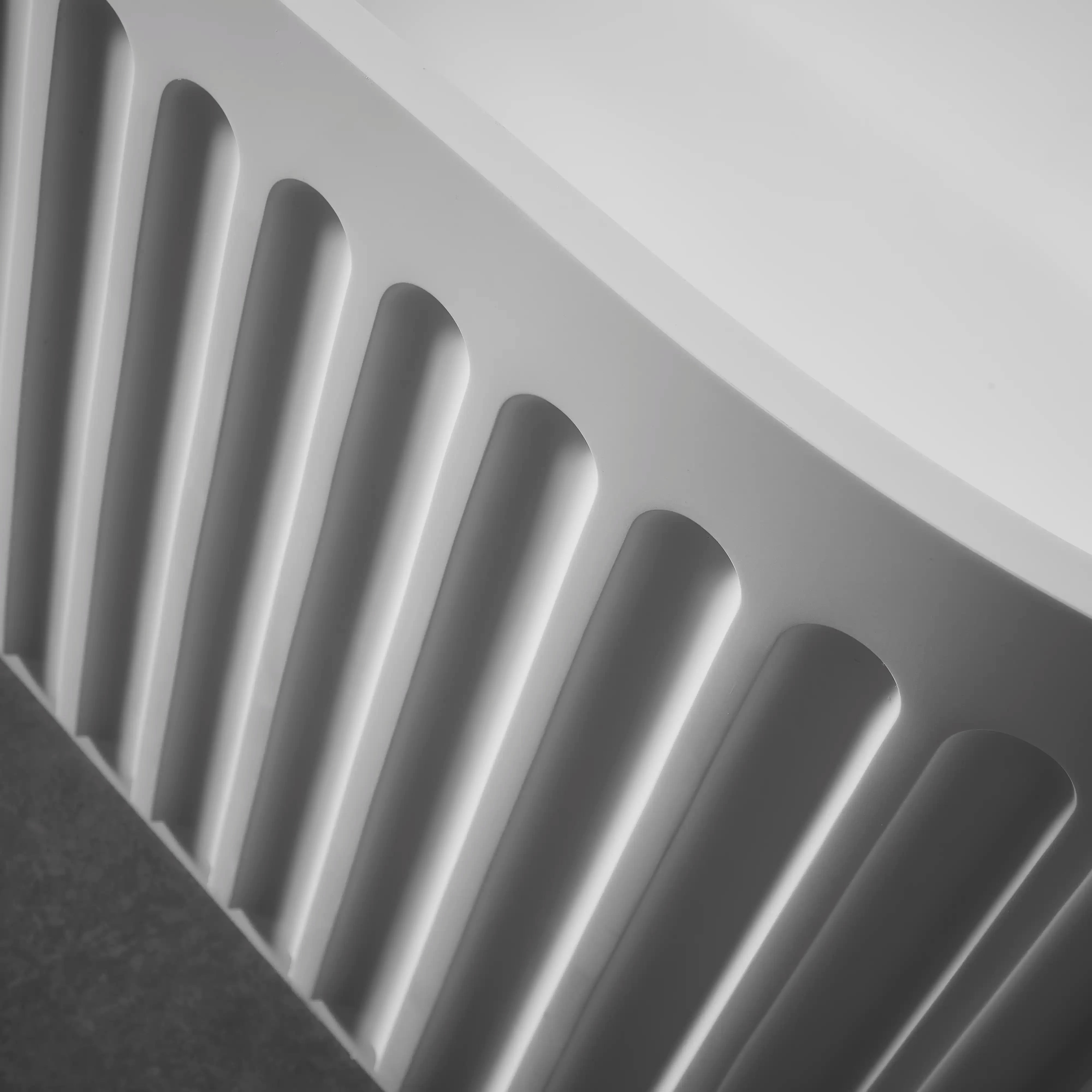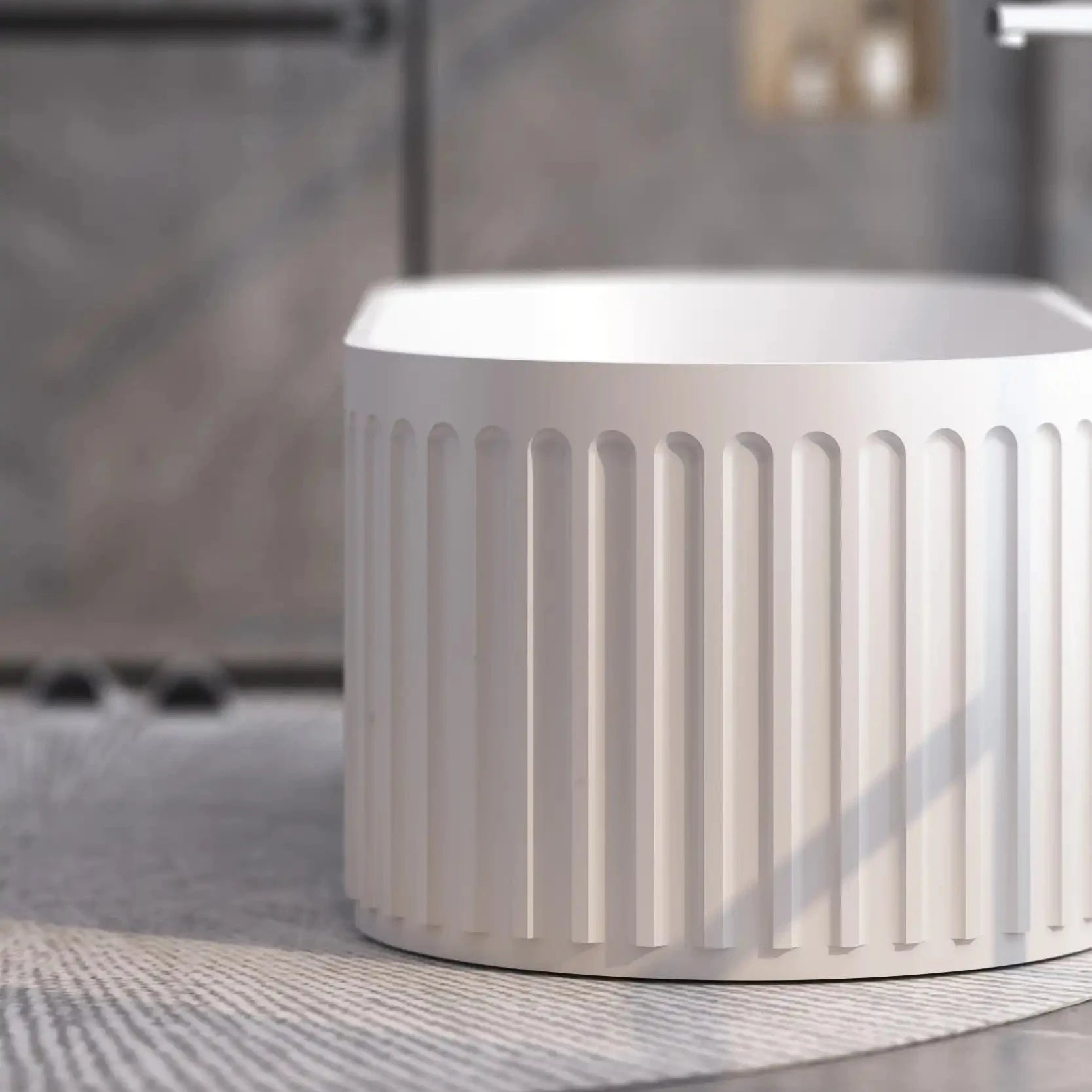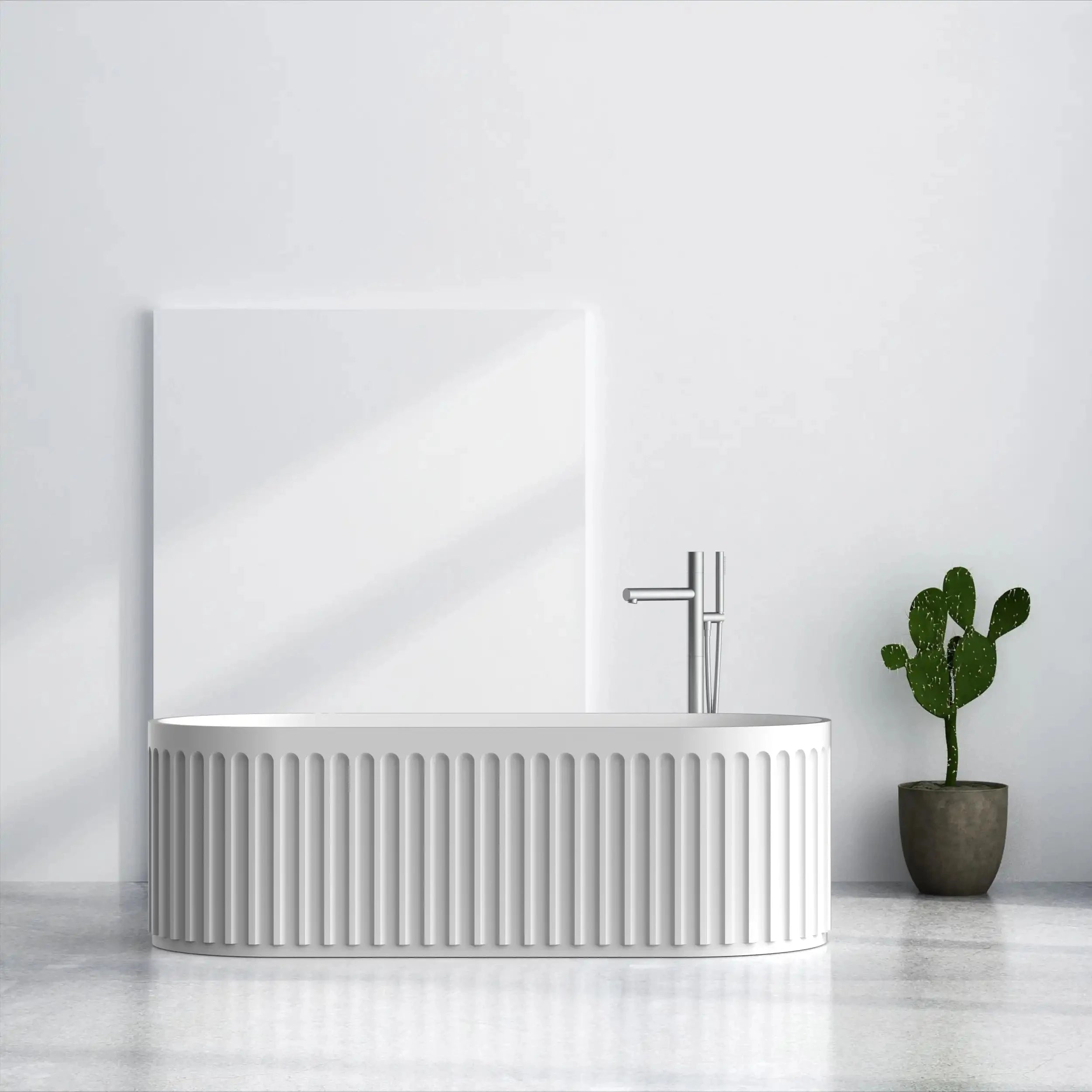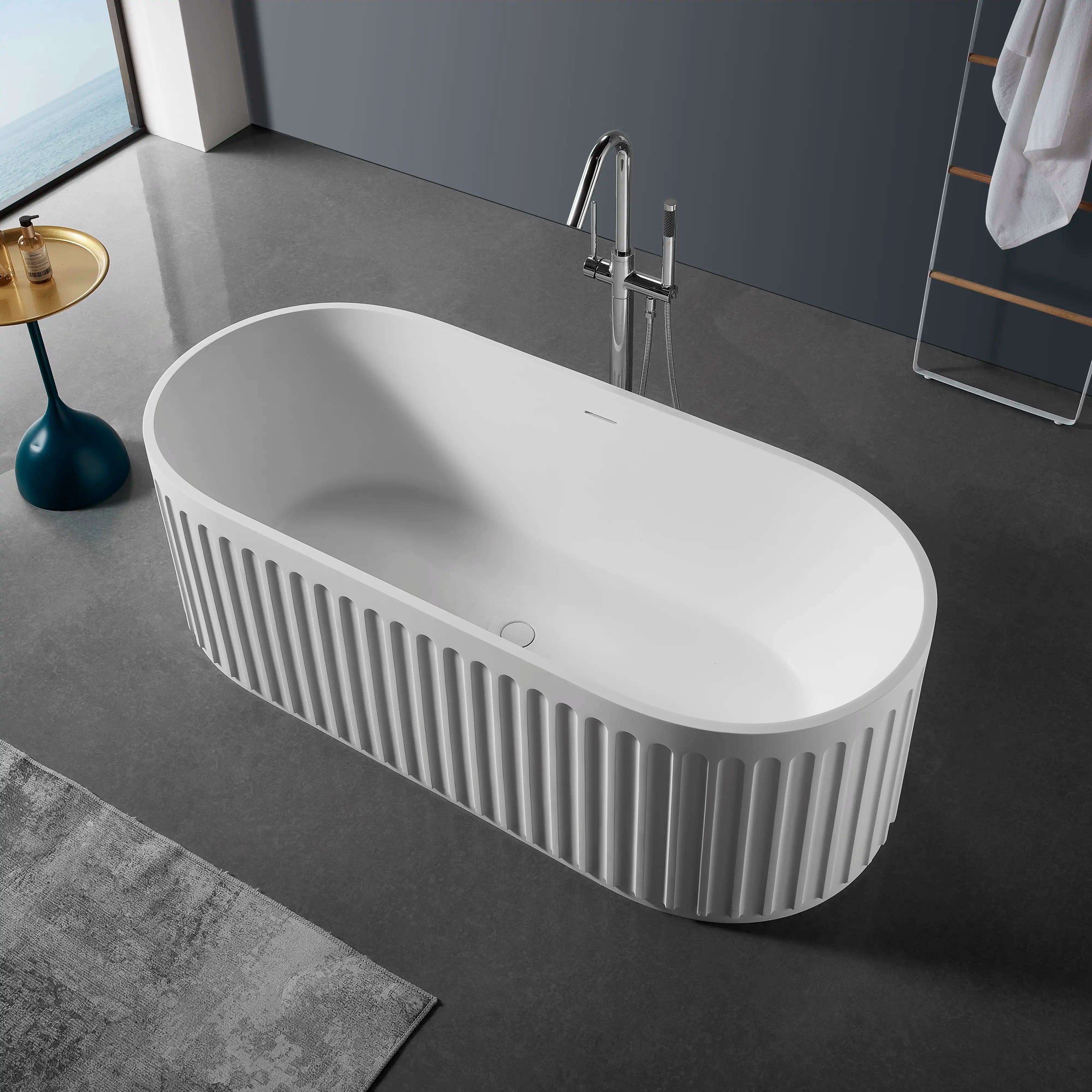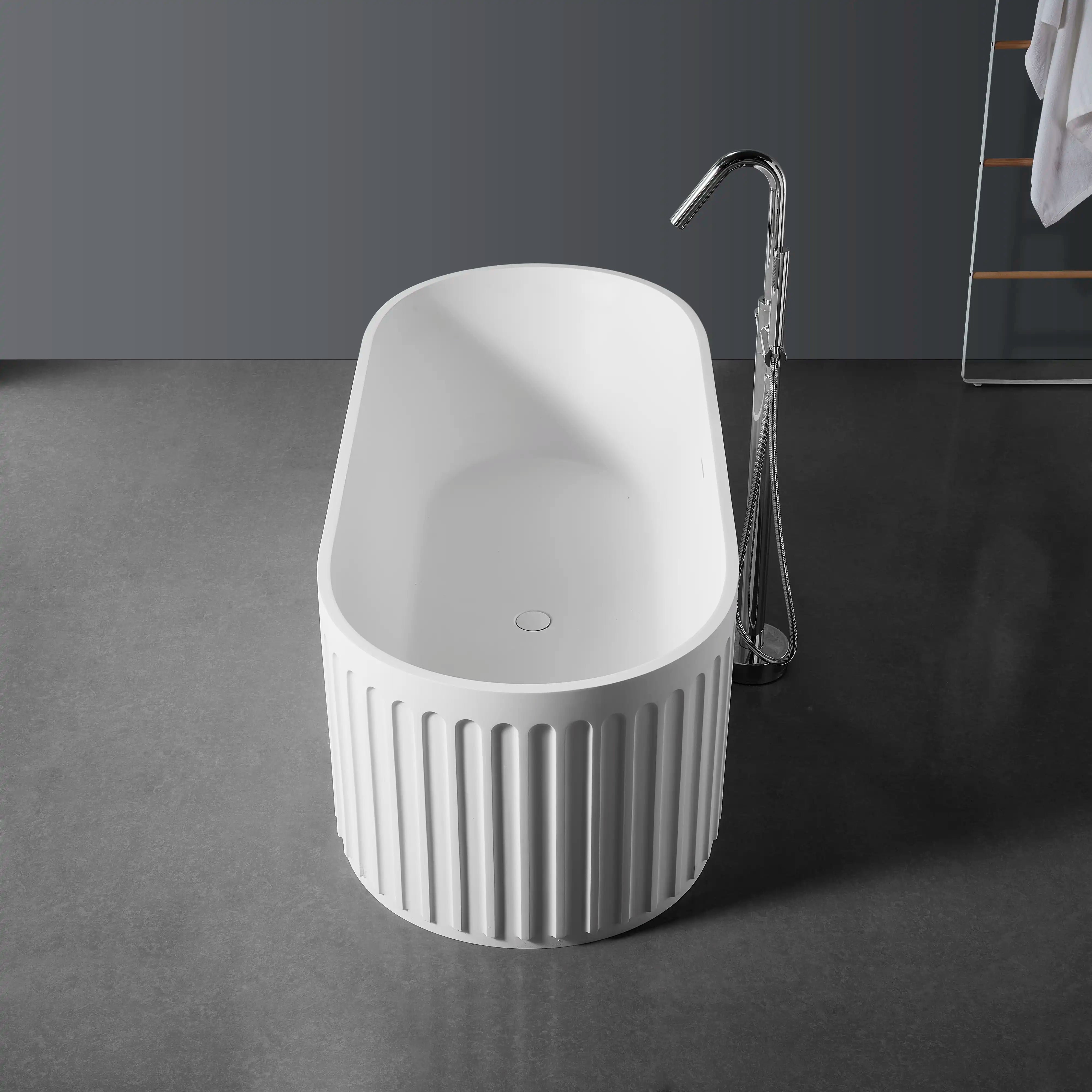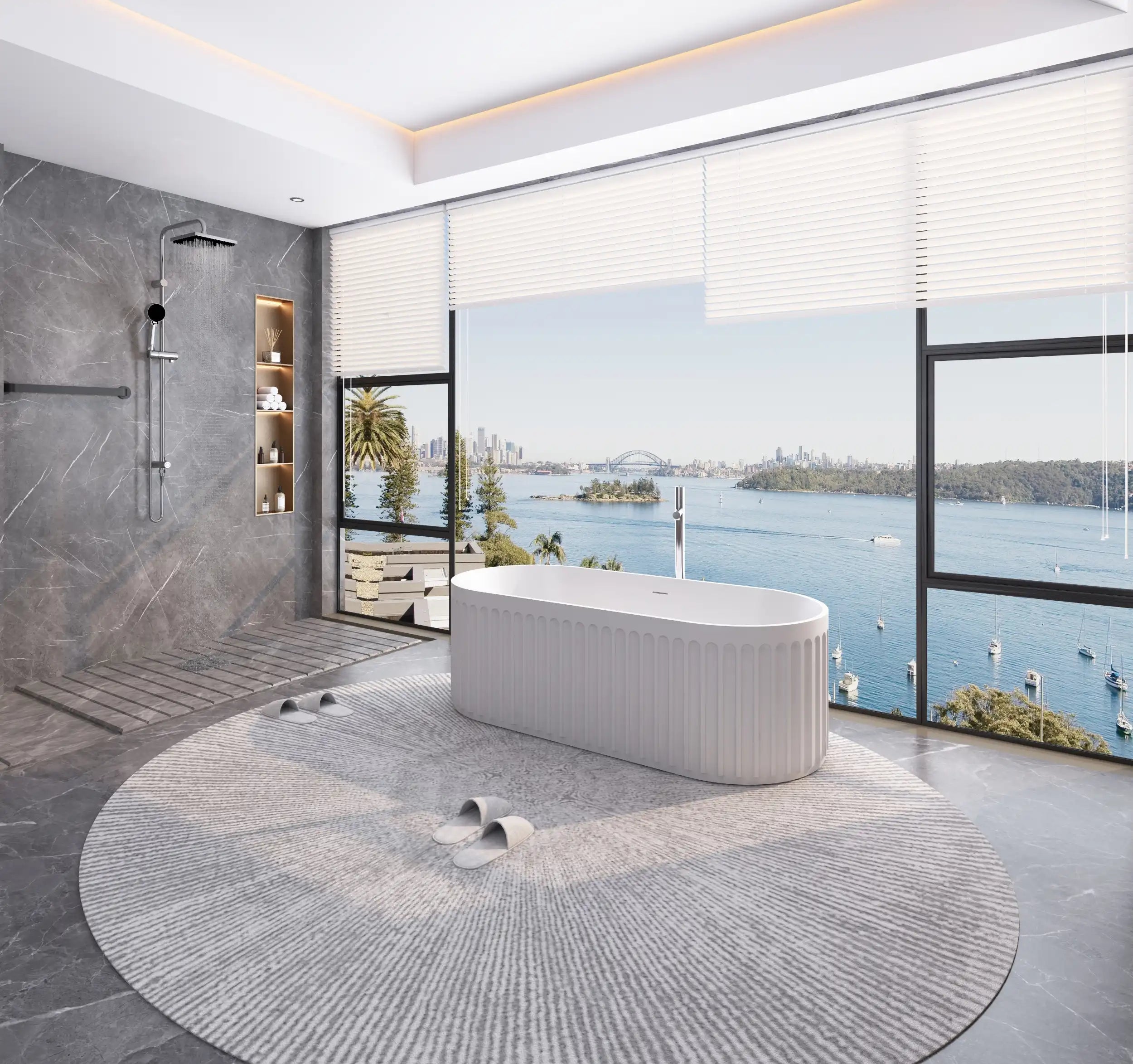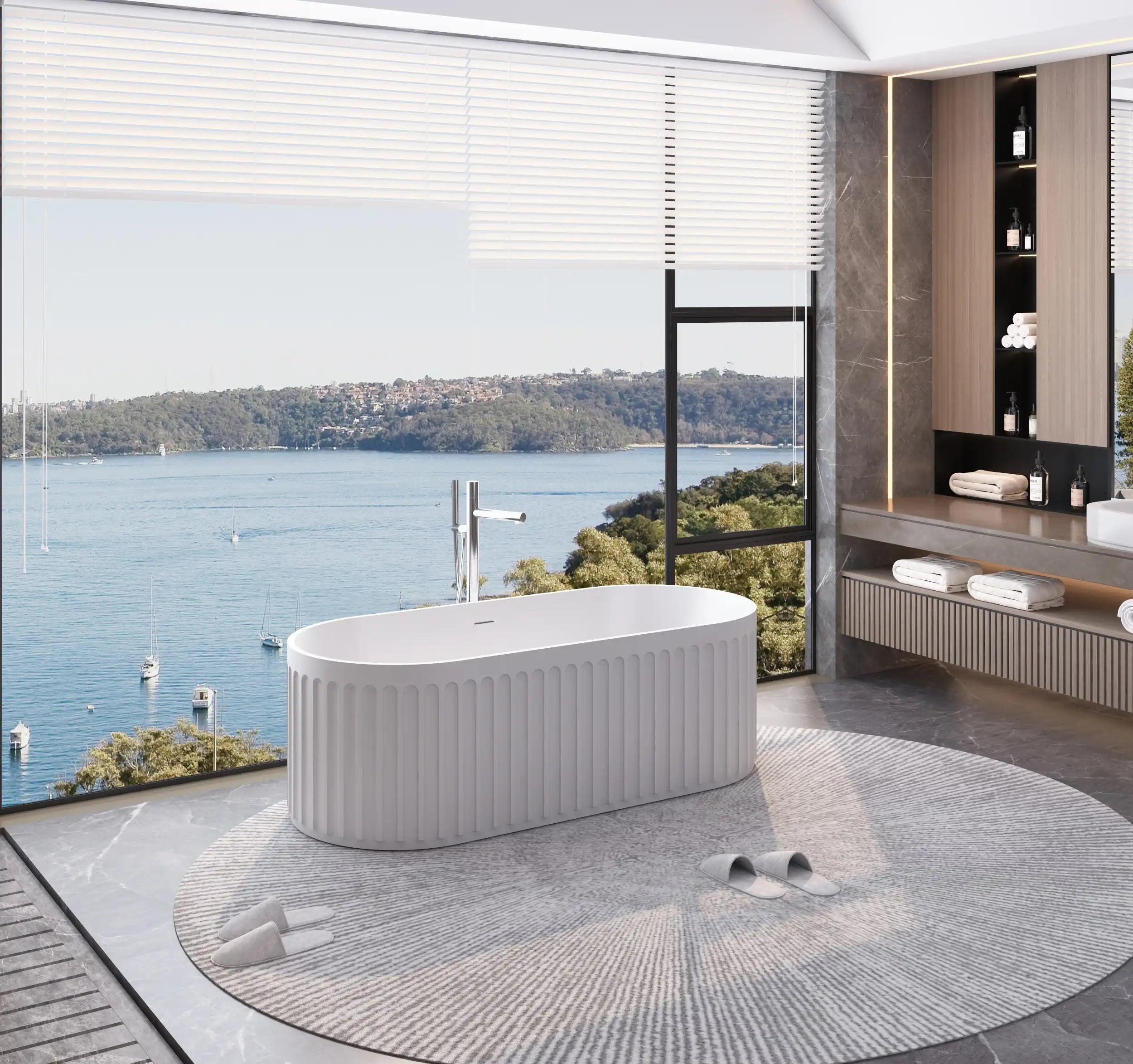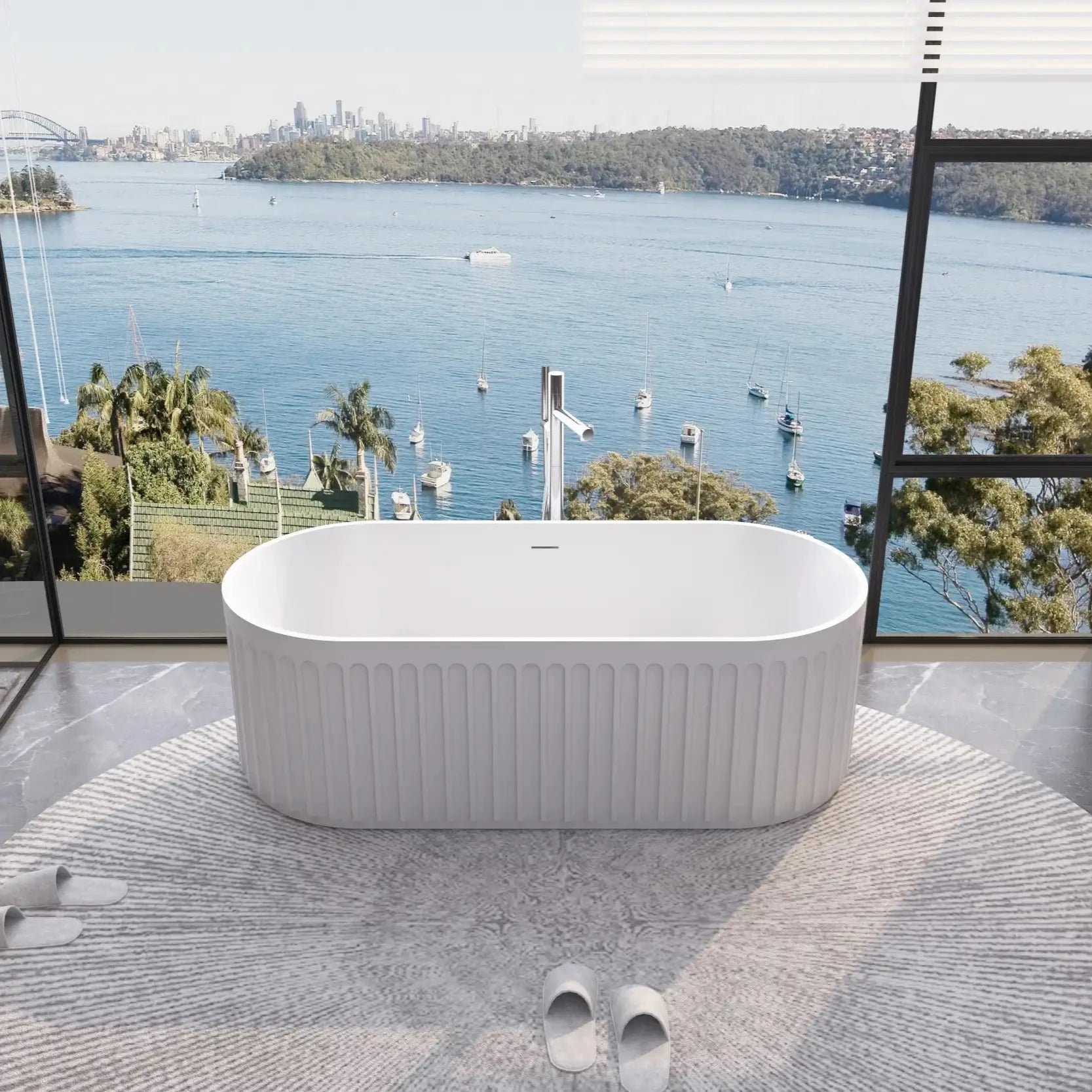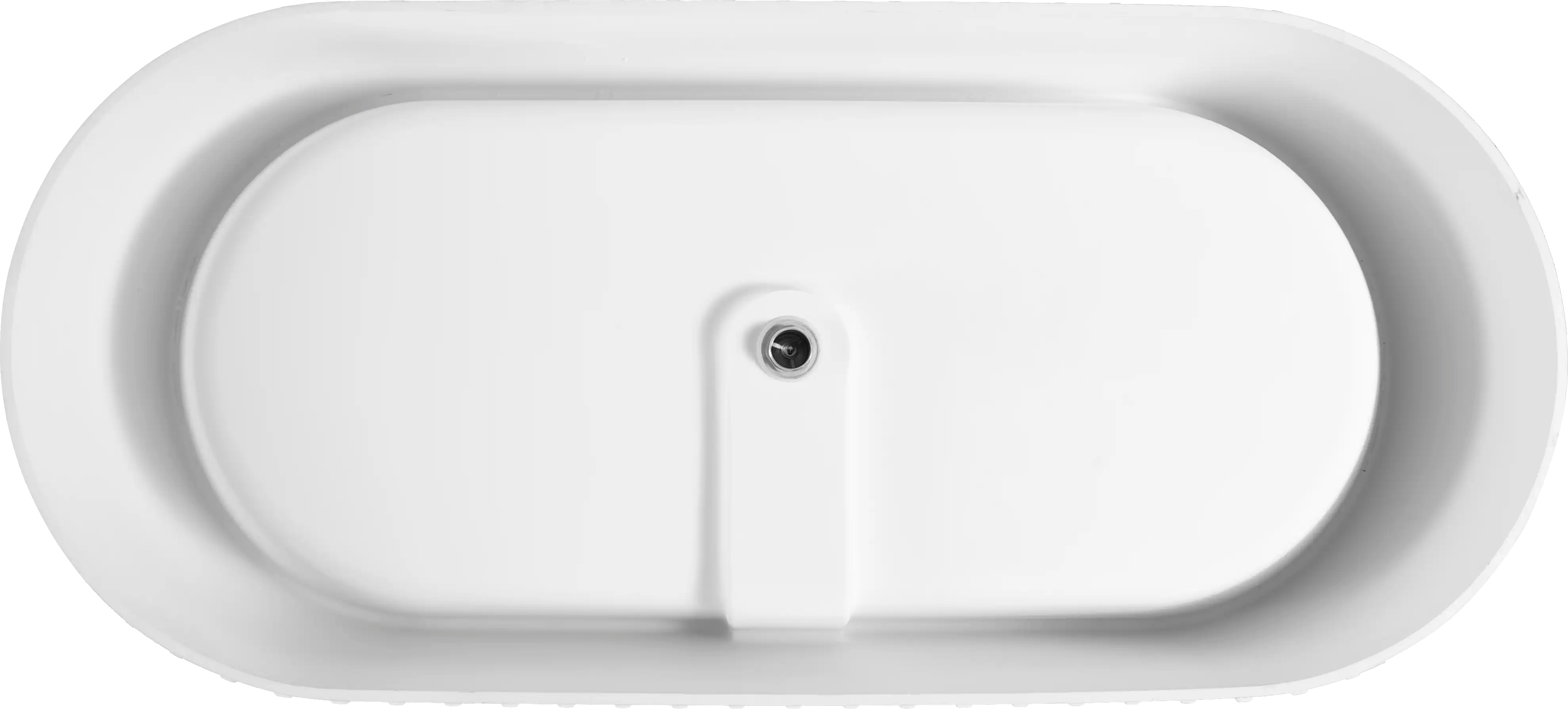A garden bathtub is more than just a bathing fixture; it’s a symbol of indulgence and relaxation. Characterized by its generous dimensions — often deeper and wider than standard tubs, these tubs typically come in oval shapes and can be crafted from traditional materials like cast iron and natural stone to modern acrylic. Its origins trace back centuries to European nobility, who placed tubs in or near gardens, enjoying the serene views while soaking. This tradition is where the name “garden bathtub” comes from.
While today’s North American homes rarely feature outdoor bathtubs, the concept has evolved into spacious indoor fixtures that retain the spirit of relaxation and elegance. Compared to the compact and functional alcove tub, a garden bathtub offers a more immersive and spa-like experience. But is it still practical in 2025? Let’s explore its history, benefits, drawbacks, and investment potential.
Table of Contents:
- From Noble Gardens to Contemporary Bathrooms – A Brief History
- Garden Bathtub vs. Alcove Tub – Key Differences
- The Modern Appeal – Why Garden Bathtubs Still Shine
- Boosting Home Value – ROI of a Garden Bathtub
- Pros and Cons to Consider Before You Buy
- Who Should Choose a Garden Bathtub?
- Key Factors When Purchasing a Garden Bathtub
- Conclusion – Bringing the Spa Experience Home
- FAQ – Expert Answers
From Noble Gardens to Contemporary Bathrooms – A Brief History
In the aristocratic estates of Europe, bathing was not purely functional—it was a ritual. The garden bathtub allowed nobles to blend personal wellness with nature’s tranquility. Positioned amid blooming flowers or under pergolas, these tubs symbolized wealth, leisure, and harmony with the outdoors.
By the late 19th and early 20th centuries, residential architecture shifted, and indoor plumbing became standard. The garden bathtub migrated indoors, especially in affluent homes with large bathrooms. In North America, designers sought to preserve their original connection to nature. Many were positioned near large windows or under skylights, allowing bathers to enjoy natural light and scenic views while taking advantage of modern plumbing and climate control.

Garden Bathtub vs. Alcove Tub – Key Differences
The alcove tub is the most common bathtub in North American bathrooms — standard, rectangular, and enclosed on three sides. It is practical for smaller spaces and integrates easily with shower setups. By comparison, the garden bathtub is designed for immersion and relaxation, often occupying a central or corner position with ample clearance on multiple sides.
Key distinctions include:
| Feature | Garden Bathtub | Alcove Tub |
|---|---|---|
| Size | Wider and deeper, ideal for full-body soaking | Compact, fits smaller bathrooms |
| Shape | Often oval or round, freestanding | Rectangular, enclosed on three sides |
| Installation | Requires more space, possible floor reinforcement | Easier to install, fits into alcove spaces |
| Aesthetic Impact | Serves as a focal point, enhances luxury feel | Functional, blends into overall bathroom layout |
| Maintenance | Larger surface area, higher water usage | Lower maintenance, less water required |
The Modern Appeal – Why Garden Bathtubs Still Shine
In 2025, bathroom trends emphasize spa-like experiences at home, and the garden bathtub perfectly aligns with this vision. Its depth allows for a more therapeutic soak, aiding muscle relaxation, improving circulation, and reducing stress. Moreover, design trends now favor statement fixtures that define a space. A sleek garden tub instantly elevates a bathroom’s style profile. The growing interest in wellness-oriented home upgrades makes this type of tub more relevant than ever, especially in high-end remodels.

Boosting Home Value – ROI of a Garden Bathtub
From an investment perspective, a garden bathtub can enhance both perceived and actual property value. In competitive real estate markets, bathrooms are often dealmakers. Homes with luxurious, spa-inspired bathrooms tend to photograph better, attract more potential buyers, and command higher offers.
While not every buyer will prioritize a garden tub, for the right market segment especially in upscale neighborhoods, it could be a differentiator. According to remodeling cost vs. value reports, luxury bathroom upgrades can return between 50% to 70% of their cost upon resale, with well-executed designs leaning toward the higher end.

Pros and Cons to Consider Before You Buy
Pros:
- Unmatched comfort for long soaks and relaxation
- Visual impact that elevates bathroom aesthetics
- Potential increase in home value when designed well
- Durable materials can last decades with proper care
Cons:
- Requires significant space and may not suit smaller bathrooms
- Higher water usage compared to standard tubs
- Complex installation, sometimes needing floor reinforcement
- Longer cleaning time due to size
Who Should Choose a Garden Bathtub?
A garden bathtub is ideal for homeowners with:
-
Large bathrooms where space isn’t a constraint
-
A lifestyle that values self-care and relaxation
-
Aesthetic priorities that favor statement fixtures
-
Plans for long-term home occupancy or upscale resale
It is less suitable for households with very limited bathroom space, tight renovation budgets, or those who prioritize quick showers over long baths.
Key Factors When Purchasing a Garden Bathtub
When investing in a garden bathtub, it’s essential to look beyond aesthetics and consider practical aspects that will determine its comfort, durability, and long-term value.
-
Space Assessment
Measure the bathroom (or designated location) carefully, ensuring enough clearance on all sides for cleaning and comfortable access. Large tubs can dominate a room if not properly planned.
-
Material Selection
Acrylic offers a lightweight, cost-effective option that retains heat well while cast iron is highly durable and holds warmth longer. For tubs placed near large windows, in sunlit rooms, or outdoors, choose UV-resistant material to prevent fading, yellowing, or surface chip caused by sunlight.
-
Installation Requirements
Verify that the floor can support the filled weight of the tub. Outdoor installations may require additional weatherproofing for plumbing connections.
-
Design Harmony
The bathtub should complement the room’s overall aesthetic, whether it’s a minimalist spa theme, a rustic retreat, or a classic luxury style.
-
Maintenance Considerations
Opt for non-porous surfaces that resist staining and scale buildup. If outdoors, ensure the surface can handle temperature fluctuations without cracking.

Conclusion – Bringing the Spa Experience Home
The garden bathtub remains a timeless blend of luxury and function. Its history connects us to a tradition of relaxation and beauty, while its modern adaptations offer comfort, style, and potential value to a home. For those with the space and resources, investing in one in 2025 means bringing a daily spa experience right into your home, a decision that benefits both lifestyle and property appeal.
FAQ – Expert Answers
Q1: How much space do I need for a garden bathtub?
A: A typical garden bathtub requires at least 60–72 inches in length and 42–48 inches in width, plus clearance around the tub for maintenance and design flow.
Q2: Is a garden bathtub worth the investment for resale?
A: In upscale markets, yes. A well-placed, stylish garden tub can enhance a home’s desirability and support higher offers.
Q3: Can I install a garden bathtub in an upstairs bathroom?
A: Yes, but you may need structural reinforcement to support the weight of the tub and water.
Q4: How does a garden bathtub compare in water usage?
A: It uses more water than a standard alcove tub. So consider this in terms of both utility costs and environmental impact.
Q5: What is the average lifespan of a garden bathtub?
A:
10 Types of Bathtubs – Pros, Cons, and How to Choose the Right One
How to Choose the Perfect Freestanding Bathtub Shower for Your Home
Freestanding Copper Bathtub Style Guide: 5 Trendy Looks You’ll Love
Why Japanese Bathtubs Are So Small — And Why You’ll Love Them Anyway













